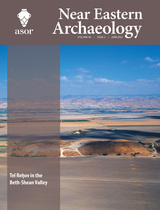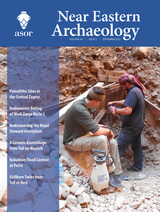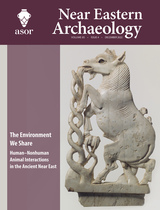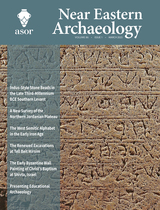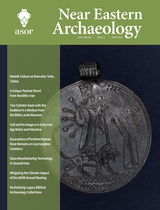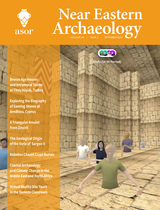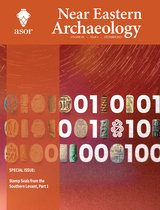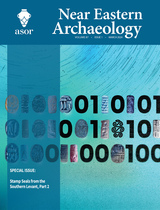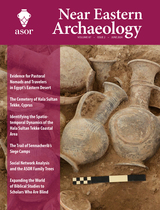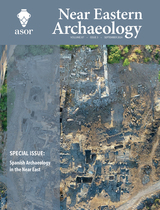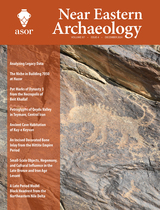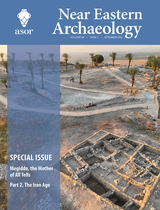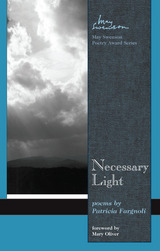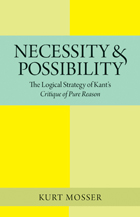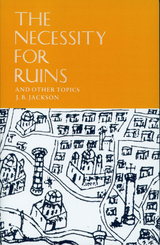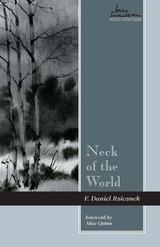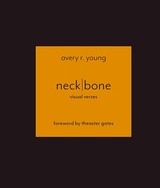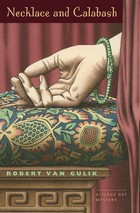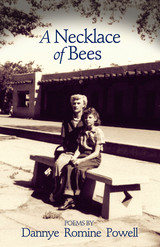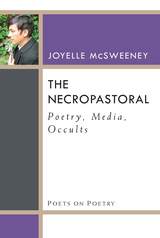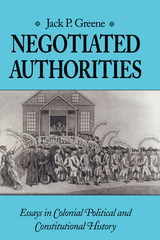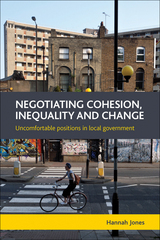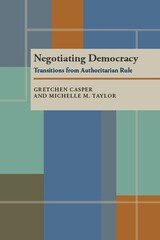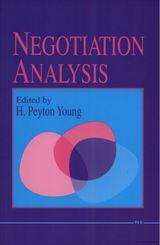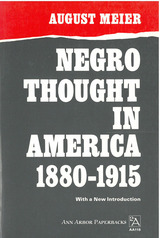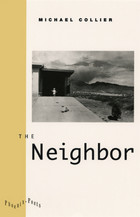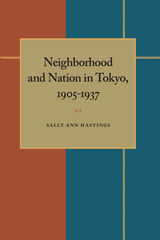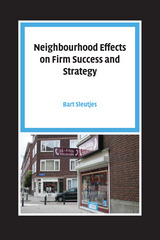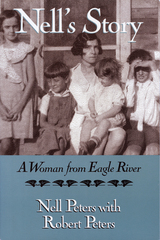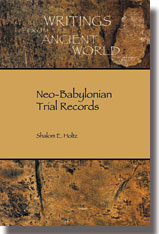Near Eastern Archaeology, volume 85 number 2 (June 2022)
The University of Chicago Press
University of Chicago Press Journals, 2022 This is volume 85 issue 2 of Near Eastern Archaeology. Archaeological discoveries continually enrich our understanding of the people, culture, history, and literature of the Middle East. The heritage of its peoples—from urban civilization to the Bible—both inspires and fascinates. Near Eastern Archaeology brings to life the ancient world from Mesopotamia to the Mediterranean with vibrant images and authoritative analyses.
Near Eastern Archaeology, volume 85 number 3 (September 2022)
The University of Chicago Press
University of Chicago Press Journals, 2022 This is volume 85 issue 3 of Near Eastern Archaeology. Archaeological discoveries continually enrich our understanding of the people, culture, history, and literature of the Middle East. The heritage of its peoples—from urban civilization to the Bible—both inspires and fascinates. Near Eastern Archaeology brings to life the ancient world from Mesopotamia to the Mediterranean with vibrant images and authoritative analyses.
Near Eastern Archaeology, volume 85 number 4 (December 2022)
The University of Chicago Press
University of Chicago Press Journals, 2022 This is volume 85 issue 4 of Near Eastern Archaeology. Archaeological discoveries continually enrich our understanding of the people, culture, history, and literature of the Middle East. The heritage of its peoples—from urban civilization to the Bible—both inspires and fascinates. Near Eastern Archaeology brings to life the ancient world from Mesopotamia to the Mediterranean with vibrant images and authoritative analyses.
Near Eastern Archaeology, volume 86 number 1 (March 2023)
The University of Chicago Press
University of Chicago Press Journals, 2023 This is volume 86 issue 1 of Near Eastern Archaeology. Archaeological discoveries continually enrich our understanding of the people, culture, history, and literature of the Middle East. The heritage of its peoples—from urban civilization to the Bible—both inspires and fascinates. Near Eastern Archaeology brings to life the ancient world from Mesopotamia to the Mediterranean with vibrant images and authoritative analyses.
Near Eastern Archaeology, volume 86 number 2 (June 2023)
The University of Chicago Press
University of Chicago Press Journals, 2023 This is volume 86 issue 2 of Near Eastern Archaeology. Archaeological discoveries continually enrich our understanding of the people, culture, history, and literature of the Middle East. The heritage of its peoples—from urban civilization to the Bible—both inspires and fascinates. Near Eastern Archaeology brings to life the ancient world from Mesopotamia to the Mediterranean with vibrant images and authoritative analyses.
Near Eastern Archaeology, volume 86 number 3 (September 2023)
The University of Chicago Press
University of Chicago Press Journals, 2023 This is volume 86 issue 3 of Near Eastern Archaeology. Archaeological discoveries continually enrich our understanding of the people, culture, history, and literature of the Middle East. The heritage of its peoples—from urban civilization to the Bible—both inspires and fascinates. Near Eastern Archaeology brings to life the ancient world from Mesopotamia to the Mediterranean with vibrant images and authoritative analyses.
Near Eastern Archaeology, volume 86 number 4 (December 2023)
The University of Chicago Press
University of Chicago Press Journals, 2023 This is volume 86 issue 4 of Near Eastern Archaeology. Archaeological discoveries continually enrich our understanding of the people, culture, history, and literature of the Middle East. The heritage of its peoples—from urban civilization to the Bible—both inspires and fascinates. Near Eastern Archaeology brings to life the ancient world from Mesopotamia to the Mediterranean with vibrant images and authoritative analyses.
Near Eastern Archaeology, volume 87 number 1 (March 2024)
The University of Chicago Press
University of Chicago Press Journals, 2024 This is volume 87 issue 1 of Near Eastern Archaeology. Archaeological discoveries continually enrich our understanding of the people, culture, history, and literature of the Middle East. The heritage of its peoples—from urban civilization to the Bible—both inspires and fascinates. Near Eastern Archaeology brings to life the ancient world from Mesopotamia to the Mediterranean with vibrant images and authoritative analyses.
Near Eastern Archaeology, volume 87 number 2 (June 2024)
The University of Chicago Press
University of Chicago Press Journals, 2024 This is volume 87 issue 2 of Near Eastern Archaeology. Archaeological discoveries continually enrich our understanding of the people, culture, history, and literature of the Middle East. The heritage of its peoples—from urban civilization to the Bible—both inspires and fascinates. Near Eastern Archaeology brings to life the ancient world from Mesopotamia to the Mediterranean with vibrant images and authoritative analyses.
Near Eastern Archaeology, volume 87 number 3 (September 2024)
The University of Chicago Press
University of Chicago Press Journals, 2024 This is volume 87 issue 3 of Near Eastern Archaeology. Archaeological discoveries continually enrich our understanding of the people, culture, history, and literature of the Middle East. The heritage of its peoples—from urban civilization to the Bible—both inspires and fascinates. Near Eastern Archaeology brings to life the ancient world from Mesopotamia to the Mediterranean with vibrant images and authoritative analyses.
Near Eastern Archaeology, volume 87 number 4 (December 2024)
The University of Chicago Press
University of Chicago Press Journals, 2024 This is volume 87 issue 4 of Near Eastern Archaeology. Archaeological discoveries continually enrich our understanding of the people, culture, history, and literature of the Middle East. The heritage of its peoples—from urban civilization to the Bible—both inspires and fascinates. Near Eastern Archaeology brings to life the ancient world from Mesopotamia to the Mediterranean with vibrant images and authoritative analyses.
Near Eastern Archaeology, volume 88 number 1 (March 2025)
The University of Chicago Press
University of Chicago Press Journals, 2025 This is volume 88 issue 1 of Near Eastern Archaeology. Archaeological discoveries continually enrich our understanding of the people, culture, history, and literature of the Middle East. The heritage of its peoples—from urban civilization to the Bible—both inspires and fascinates. Near Eastern Archaeology brings to life the ancient world from Mesopotamia to the Mediterranean with vibrant images and authoritative analyses.
Near Eastern Archaeology, volume 88 number 2 (June 2025)
The University of Chicago Press
University of Chicago Press Journals, 2025 This is volume 88 issue 2 of Near Eastern Archaeology. Archaeological discoveries continually enrich our understanding of the people, culture, history, and literature of the Middle East. The heritage of its peoples—from urban civilization to the Bible—both inspires and fascinates. Near Eastern Archaeology brings to life the ancient world from Mesopotamia to the Mediterranean with vibrant images and authoritative analyses.
Near Eastern Archaeology, volume 88 number 3 (September 2025)
The University of Chicago Press
University of Chicago Press Journals, 2025 This is volume 88 issue 3 of Near Eastern Archaeology. Archaeological discoveries continually enrich our understanding of the people, culture, history, and literature of the Middle East. The heritage of its peoples—from urban civilization to the Bible—both inspires and fascinates. Near Eastern Archaeology brings to life the ancient world from Mesopotamia to the Mediterranean with vibrant images and authoritative analyses.
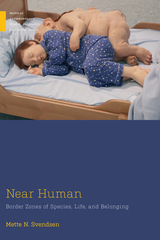 Near Human: Border Zones of Species, Life, and Belonging
Mette N. Svendsen
Rutgers University Press, 2022 Near Human takes us into the borders of human and animal life. In the animal facility, fragile piglets substitute for humans who cannot be experimented on. In the neonatal intensive care unit, extremely premature infants prompt questions about whether they are too fragile to save or, if they survive, whether they will face a life of severe disability. Drawing on ethnographic fieldwork carried out on farms, in animal-based experimental science labs, and in hospitals, Mette N. Svendsen shows that practices of substitution redirect the question of "what it means" to be human to "what it takes" to be human. The near humanness of preterm infants and research piglets becomes an avenue to unravel how neonatal life is imagined, how societal belonging is evaluated, and how the Danish welfare state is forged. This courageous multi-sited and multi-species approach cracks open the complex ethical field of valuating life and making different kinds of pigs and different kinds of humans belong in Denmark.
 Near/Miss
Charles Bernstein
University of Chicago Press, 2018 Praised in recent years as a “calculating, improvisatory, essential poet” by Daisy Fried in the New York Times, and as “the foremost poet-critic of our time” by Craig Dworkin, Charles Bernstein is a leading voice in American poetry. Near/Miss, Bernstein’s first poetry collection in five years, is the apotheosis of his late style, thick with off-center rhythms, hilarious riffs, and verbal extravagance.
This collection’s title highlights poetry’s ability to graze reality without killing it, and at the same time implies that the poems themselves are wounded by the grief of loss. The book opens with a rollicking satire of difficult poetry—proudly declaring itself “a totally inaccessible poem”—and moves on to the stuff of contrarian pop culture and political cynicism—full of malaprops, mondegreens, nonsequiturs, translations of translations, sardonically vandalized signs, and a hilarious yet sinister feed of blog comments. At the same time, political protest also rubs up against epic collage, through poems exploring the unexpected intimacies and continuities of “our united fates.” These poems engage with works by contemporary painters—including Amy Sillman, Rackstraw Downes, and Etel Adnan—and echo translations of poets ranging from Catullus and Virgil to Goethe, Cruz e Souza, and Kandinsky.
Grounded in a politics of multiplicity and dissent, and replete with both sharp edges and subtle intimacies, Near/Miss is full of close encounters of every kind.
 Near Strangers
Marian Crotty
Autumn House Press, 2024 Short stories that follow unexpected connections and tell of queer life in America.
Winner of the 2023 Autumn House Fiction Prize, Near Strangers is a collection of eight tightly crafted short stories filled with unexpected connections and set against the backdrop of everyday life. These stories center on resilient female protagonists and offer a view into queer life in America outside of its major coastal cities. The characters in Marian Crotty’s collection are searching—for understanding, acceptance, or forgiveness. In the title story, an elderly rape crisis volunteer’s advocacy for a survivor leads her to reexamine her role in estrangement from her son; in “Halloween,” a queer teen is counseled through heartbreak by her unlucky-in-love grandmother; and in “Family Resemblance,” a group of families whose children share the same sperm donor is disrupted by the arrival of a minor celebrity. While marginalization, loneliness, and bigotry hover in the distance of Near Strangers, the book’s tone is hopeful and invites readers to reflect on our shared human experience with empathy.
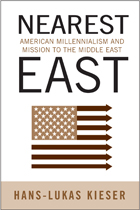 Nearest East: American Millenialism and Mission to the Middle East
Authored by Hans-Lukas Kieser
Temple University Press, 2012 Long before oil interests shaped American interaction with the Middle East, the U.S. had a strong influence on the late Ottoman and post-Ottoman region. Covering the period from approximately 1800 to the 1970s, Hans-Lukas Kieser’s compelling Nearest East tells the story of this intimate, identity-building relationship between the U.S. and the Near East. Kieser chronicles how American missionaries worked to implement their belief in Biblical millennialism, enlightened modernity, and a modern Zion-Israel. Millennialism was part of an American identity that constituted itself religiously in the interaction with and the representation of the “cradle of Zion.” As such, "going Near East" was—at least to American evangelical Protestants—in some ways more important than colonizing the American West. However, many Ottoman Muslims felt threatened by the American missionaries perceiving their successful institutions as an estranging challenge from the outside. Measuring the long twisted road from the missionary Zion-builders of the early 19th century to the privileged US-Israeli partnership in the late 20th century, Nearest East looks carefully on both sides of the relationship. Kieser uses a wide range of Ottoman, Turkish, French, German and other sources, unfamiliar to most Anglophone readers, to tell this story that will appeal to historians of all stripes.
 Nearest Star: The Surprising Science of Our Sun
Leon Golub and Jay M. Pasachoff
Harvard University Press, 2001 Unlike the myriad points of light we gaze at in the night sky, our nearest star allows us to study the wonders of stellar workings at blindingly close range--from a mere 93 million miles away. And what do we see? In this book, two of the world's leading solar scientists unfold all that history and science--from the first cursory observations to the measurements obtained by the latest state-of-the-art instruments on the ground and in space--have revealed about the Sun. Following the path of science from the very center of this 380,000,000,000,000,000,000-megawatt furnace to its explosive surface, Nearest Star invites readers into an open-ended narrative of discovery about what we know about the Sun and how we have learned it.
How did the Sun evolve, and what will it become? What is the origin of its light and heat? How does solar activity affect the atmospheric conditions that make life on earth possible? These are the questions at the heart of solar physics, and at the center of this book. Having made optical solar observations with many solar telescopes and in the rockets and satellites, the authors bring their extensive personal experience to this story of how astronomers study the Sun, and what they have discovered about phenomena from eclipses to neutrinos, space weather, and global warming. Richly illustrated with an assortment of pictures from the latest solar missions and the newest telescopes, this book is a very readable, up-to-date account of science's encounter with our nearest star.
 The Nearest Thing to Life
James Wood
Brandeis University Press, 2015 In this remarkable blend of memoir and criticism, James Wood, the noted contributor to the New Yorker, has written a master class on the connections between fiction and life. He argues that of all the arts, fiction has a unique ability to describe the shape of our lives and to rescue the texture of those lives from death and historical oblivion. The act of reading is understood here as the most sacred and personal of activities, and there are brilliant discussions of individual works—among others, Chekhov’s story “The Kiss,” The Emigrants, by W. G. Sebald, and The Blue Flower, by Penelope Fitzgerald. Wood reveals his own intimate relationship with the written word: we see the development of a boy from the provinces growing up in a charged Christian environment, the secret joy of his childhood reading, the links he draws between reading and blasphemy, or between literature and music. The final section discusses fiction in the context of exile and homelessness. More than a tightly argued little book by a man commonly regarded as our finest living critic, The Nearest Thing to Life is an exhilarating personal account that reflects on, and embodies, the fruitful conspiracy between reader and writer (and critic), and asks us to reconsider everything that is at stake when we read and write fiction.
 Nearly Neighbors: Jane Addams, Johnny Powers, and the Progressive Political Imagination
Terrence J. McDonald
University of Chicago Press An engaging look at the encounter between Jane Addams, Hull House settlement co-founder and Progressive reformer, and Alderman Johnny Powers.
Jane Addams was full of courage and goodwill when she opened Hull House in Chicago’s Nineteenth Ward in 1889. However, she failed to understand that her immigrant neighbors had been well-organized around mostly Catholic churches and schools for decades before her arrival. Her ultimate political rival, Johnny Powers, grew up in this culture but was no ethnic hero or deep political thinker. Nearly Neighbors is the first book to provide a contextualized history of their encounter, embedding it in the social and political culture and structures of Chicago and the Nineteenth Ward in the 1890s.
Terrence J. McDonald provides a crucial analysis of two pivotal figures in Chicago’s political history, in part by providing the first detailed assessment of Powers’s life and practices, but also by demonstrating Addams’s misconception of him and her neighbors—and why it matters for understanding her Progressive work overall. In both her political work and writings, Addams saw her ethnic neighbors as bundles of economic need, rather than bearers of ethnic culture. At the same time, she was recruited by elite allies into causes that appeared to be opposed by her neighbors. These views and practices permitted Powers to win in their climactic political battle in 1898 simply by claiming to be the neighborhood defender against Addams and her “downtown” allies. Nearly Neighbors offers a new way of understanding Addams and the complicated legacy of her famous political work and writings.
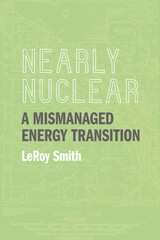 Nearly Nuclear: A Mismanaged Energy Transition
leroy smith
Michigan State University Press, 2021 When Consumers Power’s plan to build a nuclear power plant in Midland, Michigan, was announced in 1967, it promised to free Michigan residents from expensive, dirty, coal-fired electricity and to keep Dow Chemical operating in the state. But before the plan could be completed, the facility was called an engineering nightmare, a financial disaster, a construction boondoggle, a political headache, and a regulatory muddle. Most locals had welcomed nuclear power eagerly. Why, after almost twenty years and billions of dollars, did this promise of a high-tech, coal-free, prosperous future fail? And what lessons does its failure offer today as Americans try to develop a clean energy economy based on renewable power? To answer these questions, energy consultant and author LeRoy Smith carefully traces the design and construction decisions made by Consumers Power, including its choice of reactor and its hiring of the Bechtel Corporation to manage the project. He also details the rapidly changing regulatory requirements and growing public concern about the environmental risks of nuclear power generation. An examination of both the challenges and importance of renewable energy, this book will be of value to anyone interested in grappling with the complexities of our ongoing efforts to eliminate fossil fuels in favor of clean renewable energy.
 Near/Miss
Charles Bernstein
University of Chicago Press, 2018 Praised in recent years as a “calculating, improvisatory, essential poet” by Daisy Fried in the New York Times, and as “the foremost poet-critic of our time” by Craig Dworkin, Charles Bernstein is a leading voice in American poetry. Near/Miss, Bernstein’s first poetry collection in five years, is the apotheosis of his late style, thick with off-center rhythms, hilarious riffs, and verbal extravagance.
This collection’s title highlights poetry’s ability to graze reality without killing it, and at the same time implies that the poems themselves are wounded by the grief of loss. The book opens with a rollicking satire of difficult poetry—proudly declaring itself “a totally inaccessible poem”—and moves on to the stuff of contrarian pop culture and political cynicism—full of malaprops, mondegreens, nonsequiturs, translations of translations, sardonically vandalized signs, and a hilarious yet sinister feed of blog comments. At the same time, political protest also rubs up against epic collage, through poems exploring the unexpected intimacies and continuities of “our united fates.” These poems engage with works by contemporary painters—including Amy Sillman, Rackstraw Downes, and Etel Adnan—and echo translations of poets ranging from Catullus and Virgil to Goethe, Cruz e Souza, and Kandinsky.
Grounded in a politics of multiplicity and dissent, and replete with both sharp edges and subtle intimacies, Near/Miss is full of close encounters of every kind.
A Near-Perfect Gift
R.M. Kinder
University of Michigan Press, 2005 The stories in A Near-Perfect Gift revolve around the often hardscrabble small-town life in one rural village. Like any other community inhabited by the human race, it's a place where the banal and the improbable coalesce, a place with its share of common tragedies and uncommon madmen: some howl at the moon, while others turn out to be heroes. There are the two old ladies down the street who might be witches and must be exorcised, and the man who plucks chickens for a living. It is within the perimeter of this offbeat microcosm of the world that seemingly small questions---often the kind that children ask, arising from a child's imagined understanding of how the adult world works---assume an eerie portent: Was that a snake beneath the woodpile? Could a pregnant bat climb out of a hole in the ground? The answers never cease to surprise.
 The Nearsighted Naturalist
Ann Haymond Zwinger
University of Arizona Press, 1998 Seeking out wildflowers and whitewater, Ann Zwinger has called many places home. The Nearsighted Naturalist brings together work from more than two decades in her career as one of our most distinguished natural history writers. From the Indiana landscape of her youth to her Colorado mountain retreat, from Arizona's Aravaipa Canyon to New Zealand's Kapiti Island, Zwinger leads an ever-widening armchair tour of natural places both ordinary and astonishing. Whether anticipating the first day of spring or seeing the elegance of the subtle hues of a moth's papery wings, Zwinger's trademark eye for detail brings the landscape alive. Her travels trace her evolution from a home-centered wife and mother to a wandering adventurer, an evolution that has taught her to be at home in nature no matter where she is. Sprinkled with Zwinger's own charming pen-and-ink drawings, The Nearsighted Naturalist reminds us of the power of the very best nature writing. It is an invitation to wander, to travel to faraway places, to revisit your own backyard, to chase dragonflies, and to experience the healing power of a sea-smoothed pebble. With the author, readers will embark on a fascinating exploration into distant deserts of the mind and hillsides of the heart.
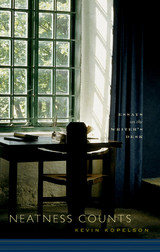 Neatness Counts: Essays on the Writer’s Desk
Kevin Kopelson Kopelson
University of Minnesota Press, 2006 In Neatness Counts, Kevin Kopelson reflects on the poetics of the desk—rolltop or bureau-plat, cluttered or bare, the nestlike desk, the schematic desk, the dramatic desk, the dramatic lack of any such furniture. Exploring the topography of literary creation by way of the topography of work space, Kopelson, one of today’s most important critics, offers a series of meditations on how orderliness, chaos, and other physical states correspond with both the exhilaration of production and the desperation of writer's block.Focusing on the poet Elizabeth Bishop, the novelist Marcel Proust, the critic Roland Barthes, the playwright Tom Stoppard, and the travel writer Bruce Chatwin, Neatness Counts is at once critical and creative, examining how various writers' work habits relate to their published work. Kopelson also considers desks of his own—one that had belonged to an older brother, one he borrowed from a messy friend, one now shared with a partner. And by pursuing these two lines of inquiry to their unlikely but enlightening conclusions, Kopelson both fabricates a virtual library of literary insight and commemorates an era in which the term “desktop” didn’t denote one’s computer screen.Kevin Kopelson is professor of English at the University of Iowa. His books include, most recently, The Queer Afterlife of Vaslav Nijinsky.
 Nebulous Vertigo
Belle Ling
Tupelo Press, 2025 Formally daring poems that ask a compelling question: if fate can never be changed, how can we embrace its weaving?
The realm that belongs to Nebulous Vertigo is both visceral and vibrant, and it is mysteriously familiar. If you come close to it, you will hear how rains eat, how a silken tofu revolts, how the Chinese word for “beans” turns into a speaking persona, and how a telephone bridges the surviving and the afterlife. In Nebulous Vertigo, everyday life is inevitably lost to the inevitable fate. And yet, with unexpected quivers, our fate and life keep surprising us.
Traveling through the cha chaan teng in Hong Kong, you can hear how Mrs. Suen, Mr. Yuen, and Waiter Kuen carry out intriguing conversations; astounded by the night sky in Paris, you will see how constellations narrate the lovers’ quirky destiny; and all the way through the Sayama Hills in Tokorozawa, you will be surprised by the turnings and upturnings of the myths told by a Japanese Uncle. Nebulous Vertigo, as its title beckons, “sighs an unreal cloud / for the fated sun to rise.” If fate can never be changed, how can we embrace its weaving? Every attempt, as the poems suggest, can be calmingly adventurous, unobvious yet magnanimous.
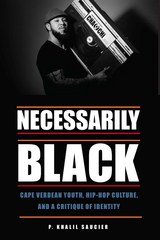 Necessarily Black: Cape Verdean Youth, Hip-Hop Culture, and a Critique of Identity
P. Khalil Saucier
Michigan State University Press, 2015 Necessarily Black is an ethnographic account of second-generation Cape Verdean youth identity in the United States and a theoretical attempt to broaden and complicate current discussions about race and racial identity in the twenty-first century. P. Khalil Saucier grapples with the performance, embodiment, and nuances of racialized identities (blackened bodies) in empirical contexts. He looks into the durability and (in)flexibility of race and racial discourse through an imbricated and multidimensional understanding of racial identity and racial positioning. In doing so, Saucier examines how Cape Verdean youth negotiate their identity within the popular fabrication of “multiracial America.” He also explores the ways in which racial blackness has come to be lived by Cape Verdean youth in everyday life and how racialization feeds back into the experience of these youth classified as black through a matrix of social and material settings. Saucier examines how ascriptions of blackness and forms of black popular culture inform subjectivities. The author also examines hip-hop culture to see how it is used as a site where new (and old) identities of being, becoming, and belonging are fashioned and reworked. Necessarily Black explores race and how Cape Verdean youth think and feel their identities into existence, while keeping in mind the dynamics and politics of racialization, mixed-race identities, and anti-blackness.
Necessary American Fictions: Popular Literature of the 1950s
William Darby
University of Wisconsin Press, 1987 William Darby gives us a comprehensive and (mostly) sympathetic reading of over fifty novels and a few movies from the 1950s. He examines titles such as Mandingo, The Invisible Man, I the Jury, Catcher in the Rye, Battle Cry, The Caine Mutiny, The Revolt of Mamie Stover, The Manchurian Candidate, Hawaii, The Bramble Bush, Peyton Place, Ten North Frederick, A Stone for Danny Fisher, The Bad Seed, Not as a Stranger, The Blackboard Jungle, From Here to Eternity, and Compulsion.
 Necessary Angels: Tradition and Modernity in Kafka, Benjamin, and Scholem
Robert Alter
Harvard University Press, 1991 In four elegant chapters, Robert Alter explains the prismlike radiance created by the association of three modern masters: Franz Kafka, Walter Benjamin, and Gershom Scholem. The volume pinpoints the intersections of these divergent witnesses to the modern condition of doubt, the no-man’s-land between traditional religion and modern secular culture.
Scholem, the devoted Zionist and master historian of Jewish mysticism, and Benjamin, the Marxist cultural critic, dedicated much of their thought and correspondence to Kafka, the explorer in fiction of radical alienation. Kafka’s sense of spiritual complexities was an inspiration to both thinkers in their resistance to the murderous simplification of totalitarian ideology. In Necessary Angels, Alter uncovers a moment when the future of modernism is revealed in its preoccupation with the past. The angel of the title is first Kafka’s: on June 25, 1914, the writer recorded in his diary a dream vision of an angel that turned into the painted wooden figurehead of a ship. In 1940, at the end of his life, Walter Benjamin devoted the ninth of his Theses on the Philosophy of History to a meditation on an angel by the artist Paul Klee, first quoting a poem he had written on that painting. In Benjamin’s vision, the figure from Klee becomes an angel of history, sucked into the future by the storm of progress, his face looking back to Eden. Benjamin bequeathed the Klee oil painting to Scholem; it hung in the living room of Scholem’s home on Abarbanel Street in Jerusalem until 1989, when his widow placed it in the Israel Museum.
Alter’s focus on the epiphanic force of memory on these three great modernists shows with sometimes startling, sometimes prophetic clarity that a complete break with tradition is not essential to modernism. Necessary Angels itself continues the necessary discovery of the future in the past.
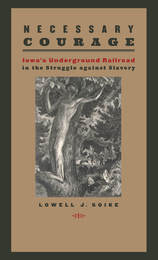 Necessary Courage: Iowa's Underground Railroad in the Struggle against Slavery
Lowell J. Soike
University of Iowa Press, 2013 During the 1850s and early 1860s, Iowa, the westernmost free state bordering a slave state, stood as a bulwark of antislavery sentiment while the decades-long struggle over slavery shifted westward. On its southern border lay Missouri, the northernmost slaveholding state. To its west was the Kansas-Nebraska Territory, where proslavery and antislavery militias battled. Missouri slaves fled to Iowa seeking freedom, finding opponents of slavery who risked their lives and livelihoods to help them, as well as bounty hunters who forced them back into bondage. When opponents of slavery streamed west across the state’s broad prairies to prevent slaveholders from dominating Kansas, Iowans fed, housed, and armed the antislavery settlers. Not a few young Iowa men also took up arms.
In Necessary Courage, historian Lowell J. Soike details long-forgotten stories of determined runaways and the courageous Iowans who acted as conductors on this most dangerous of railroads—the underground railroad. Alexander Clark, an African American businessman in Muscatine, hid a young fugitive in his house to protect him from slavecatchers while he fought for his freedom in the courts. While keeping antislavery newspapers fully apprised of the battle against human bondage in western Iowa, Elvira Gaston Platt drove a wagon full of fugitives to the next safe house under the noses of her proslavery neighbors. John Brown, fleeing across Iowa with a price on his head for the murders of proslavery Kansas settlers, relied on Iowans like Josiah Grinnell and William Penn Clarke to keep him, his men, and the twelve Missouri slaves they had liberated hidden from the authorities. Several young Iowans went on to fight alongside Brown at Harpers Ferry. These stories and many more are told here.
A suspenseful and often heartbreaking tale of desperation, courage, cunning, and betrayal, this book reveals the critical role that Iowans played in the struggle against slavery and the coming of the Civil War.
 The Necessary Earth: Nature and Solitude in American Literature
By Wilson O. Clough
University of Texas Press, 1964 The Necessary Earth is a study of the degree to which the long American experience with an open frontier has entered into an inherently American literature to distinguish it from that of other lands. Since literature is, in the author’s words, “a compound of time, place, and the individual projection of personal experience and reflection into objective forms,” the American compulsion to communicate their experience and their difference was a virtual guarantee that a native literature would arrive. The text falls into three major portions. The first considers the “age of wonder,” the impact of New World upon Old World comers to effect profound changes, and to set the new American on the parallel paths of idealism and pragmatism. The second part examines the effort of native-born writers to appropriate this experience for new metaphors and new literary theme. Without this effort, the frontier might have remained no more than a dwindling legend, and the transference to the theme of self-reliance might never have appeared. In the third portion the author turns to the twentieth century, examining here the degree to which the national theme of reliance on experience over tradition has persisted in the work of major authors. Ranging thus from Jamestown and Plymouth to Wallace Stevens, the book stresses, throughout, the pull of untamed nature on the human spirit, and the echoes of that experience in what is most intrinsic in American literature. Without denying frontier lawlessness or native chauvinism, Clough directs our attention primarily to the problems of the creation of a new language and a new metaphor to meet the new experience, and the persistence of a truly American note into a maturing of both manner and matter.
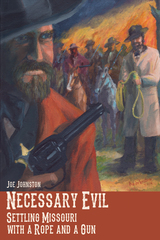 Necessary Evil: Settling Missouri with a Rope and a Gun
Joe Johnston
Missouri Historical Society Press, 2014 From the Mormon Wars to the Border Wars to gangs of Bald Knobbers and Bushwhackers, Missouri’s reign of vigilante justice during the nineteenth century is unparalleled by any other state in the nation. Situated as the Gateway to the West, Missouri experienced an influx of new cultures, races, and political factions, while already home to a population of patriotic war veterans. The state marked the boundary of eastern civilization and was a stronghold of fierce independence, bordered by Bloody Kansas and Native American territories. With new lands opening for settlement, and a fledgling system of law enforcement, the people themselves were compelled to invent laws and punish transgressors. Lawmen opposed vigilantes but at times were forced to cooperate with them and adopt their methods. Missouri spawned countless stories of individual and mob violence that finally ended at the turn of the century with advancing technology and the people’s enduring insistence on decency and peace.
Necessary Evil is the first book to chronicle the implications of vigilantism in Missouri, ultimately showing that the state could never have been settled without a healthy dose of rebel justice. Packed with stories of popular gunslingers such as Wyatt Earp, Wild Bill Hickok, and Jesse James, this action-filled read will be of interest to crime enthusiasts and historians alike.
Necessary Light
Patricia Fargnoli
Utah State University Press, 1999 Winner of the 1999 May Swenson Poetry Award, Patricia Fargnoli has also received the Robert Frost Literary Award, a fellowship at the MacDowell Colony, has been in residences many times at the Dorset Writers Colony, and has received several other awards for her poetry. Her work has been published in Poetry, Poetry Northwest, Ploughshares, Prairie
Schooner, and many other literary journals.
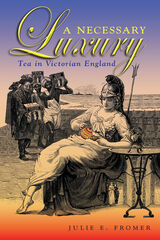 A Necessary Luxury: Tea in Victorian England
Julie E. Fromer
Ohio University Press, 2008 Tea drinking in Victorian England was a pervasive activity that, when seen through the lens of a century’s perspective, presents a unique overview of Victorian culture. Tea was a necessity and a luxury; it was seen as masculine as well as feminine; it symbolized the exotic and the domestic; and it represented both moderation and excess. Tea was flexible enough to accommodate and to mark subtle differences in social status, to mediate these differences between individuals, and to serve as a shared cultural symbol within England.
In A Necessary Luxury: Tea in Victorian England, Julie E. Fromer analyzes tea histories, advertisements, and nine Victorian novels, including Alice’s Adventures in Wonderland, Wuthering Heights, and Portrait of a Lady. Fromer demonstrates how tea functions within the literature as an arbiter of taste and middle-class respectability, aiding in the determination of class status and moral position. She reveals the way in which social identity and character are inextricably connected in Victorian ideology as seen through the ritual of tea.
Drawing from the fields of literary studies, cultural studies, history, and anthropology, A Necessary Luxury offers in-depth analysis of both visual and textual representations of the commodity and the ritual that was tea in nineteenth-century England.
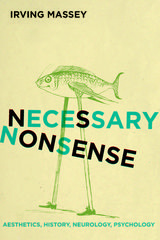 Necessary Nonsense: Aesthetics, History, Neurology, Psychology
Irving Massey
Ohio State University Press, 2018 What is nonsense? How has it permeated our day-to-day speech and thought processes in order to become a vital part of the way we interpret the world? In Necessary Nonsense: Aesthetics, History, Neurology, Psychology, world-renowned expert Irving Massey commits nearly forty years of scholarly musings on the topic of nonsense to the page. Employing a writing style of overlap, repetition, discontinuity, and contradiction in order to describe the history and of grammatical, philosophical, and semantic nonsense, Massey opens his readers to the cognitive possibilities of accepting nonsense as a fundamental human feature.
In Necessary Nonsense, Massey explores a range of literary and philosophical subjects, from Immanuel Kant to Lewis Carroll—parsing the ways in which nonsense permeates their writing and dialectics—including an exploration of the inability of those who suffer from Asperger's syndrome to distinguish between metaphor and nonsense, and an investigation of the neural signature of the nonsense words and phrases that occur during the transition from waking to sleep. Massey argues that while nonsense may be the “archenemy of reason,” it is also tied to the intrinsic nature of reason; the two, simply put, cannot exist without each other. Through a stunning array of exploratory topics, Massey concludes that we all live under a canopy of nonsense.
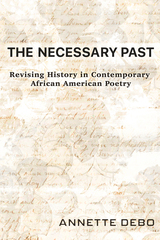 The Necessary Past: Revising History in Contemporary African American Poetry
Annette Debo
Northwestern University Press, 2024 Uncovering how poetry refigures Black history to imagine a more just present and future
“Poets are lyric historians,” proclaimed Langston Hughes. Today, historical poetry offers a lyric history necessary to our current moment—poetry with the power to correct the past, realign the present, and create a more hopeful, or even hoped-for, future. The Necessary Past: Revising History in Contemporary African American Poetry focuses on six of today’s most celebrated poets: Elizabeth Alexander, Natasha Trethewey, A. Van Jordan, Kevin Young, Frank X Walker, and Camille T. Dungy. Their works reimagine the interiority of Black historical figures like the so-called Venus Hottentot Sara Baartman and the would-be spelling champion MacNolia Cox, the African American Native Guard who fought in the Civil War and the unknown victims of domestic violence, Jack Johnson and Jean-Michel Basquiat, Medgar Evers and those freed and enslaved in the early nineteenth century. These poets shift the power dynamic in revising our shared history, reconfiguring who speaks and whose stories are told, and writing a past that frees readers to change the present and envision a more just future.
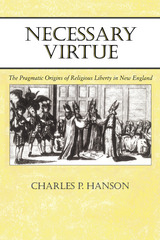 Necessary Virtue: The Pragmatic Origins of Religious Liberty in New England
Charles P. Hanson
University of Virginia Press, 1998 Virulent anti-Catholicism was a hallmark of New England society from the first Puritan settlements to the eve of the American Revolution and beyond. Thus America's tactical decision during the Revolution to form alliances with Catholics in Canada and France ignited an awkward debate. The paradox arising out of this partnership has been left virtually unexamined by previous historians of the Revolution.
In Necessary Virtue Charles P. Hanson explores the disruptive effects of the American Revolution on the religious culture of New England Protestantism. He examines the efforts of New Englanders to make sense of their own shifting ideas of Catholicism and anti-Catholicism and traces the "necessary virtue" of religious toleration to its origins in pragmatic cultural politics. To some patriots, abandoning traditional anti-Catholicism meant shedding an obsolete relic of the intolerant colonial past; others saw it as a temporary concession to be reversed as soon as possible. Their Tory opponents meanwhile assailed them all as hypocrites for making common cause with the "papists" they had so recently despised. What began as a Protestant crusade succeeded only with Catholic help and later culminated in the First Amendment's formal separation of church and state. The Catholic contribution to American independence was thus controversial from the start.
In this felicitously written and informative book, Hanson raises questions about difference, tolerance, and the role of religious belief in politics and government that help us see the American Revolution in a new light. Necessary Virtue is timely in pointing to the historical contingency and, perhaps, the fragility of the church-state separation that is very much a poltical and legal issue today.
Reviews
"Necessary Virtue has implications for many areas of research in Revolutionary politics and religion. Hanson has found some remarkable sources, ranging from Revolutionary soldiers' diaries to Quebecois episcopal visitation records to reconstruct a wonderfully polyvalent acount of how such historic enemies came to humanize one another through common cause and common experience."
--Stephen A. Marini, Wellesley College
The Author
Charles P. Hanson is Assistant Professor of History at Collegio dell'Adriatico in Trieste, Italy.
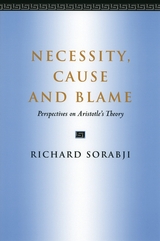 Necessity, Cause and Blame: Perspectives on Aristotle's Theory
Richard Sorabji
University of Chicago Press, 2006 A discussion of Aristotle’s thought on determinism and culpability, Necessity, Cause, and Blame also reveals Richard Sorabji’s own philosophical commitments. He makes the original argument here that Aristotle separates the notions of necessity and cause, rejecting both the idea that all events are necessarily determined as well as the idea that a non-necessitated event must also be non-caused. In support of this argument, Sorabji engages in a wide-ranging discussion of explanation, time, free will, essence, and purpose in nature. He also provides historical perspective, arguing that these problems remain intimately bound up with modern controversies.
“Necessity, Cause and Blame would be counted by all as one of Sorabji’s finest. The book is essential for philosophers—both specialists on the Greeks and modern thinkers about free will—and also compelling for non-specialists.”—Martha Nussbaum
“Original and important . . . The book relates Aristotle’s discussions to both the contemporary debates on determinism and causation and the ancient ones. It is especially detailed on Stoic arguments about necessity . . . and on the social and legal background to Aristotle’s thought.”—Choice
“It is difficult to convey the extraordinary richness of this book. . . . A Greekless philosopher could read it with pleasure . . . At the same time, its learning and scholarship are enormous.”—G. E. M. Anscombe, Times Literary Supplement
The Necessity for Ruins and Other Topics
J. B. Jackson
University of Massachusetts Press, 1980 Essays examine the way we perceive landscape, the effect of gardens and cities of the past on the landscapes of the present, and the way American architecture has broken with tradition. Discussion relates the importance of space to relativism throughout time.
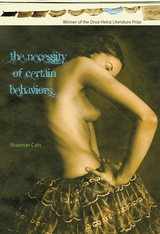 The Necessity of Certain Behaviors
Shannon Cain
University of Pittsburgh Press, 2011
Winner of the 2011 Drue Heinz Literature Prize
Shannon Cain’s stories chart the treacherous territory of the illicit. They expose the absurdity of our rituals, our definitions of sexuality, and above all, our expectations of happiness and self-fulfillment.
Cain’s protagonists are destined to suffer—and sometimes enjoy—the consequences of their own restless discontent. In the title story, Lisa, a city dweller, is dissatisfied with her life and relationships. Her attempt at self-rejuvenation takes her on a hiking excursion through a foreign land. Lisa discovers a remote village where the ritualized and generous bisexual love of its inhabitants entrances her. She begins to abandon thoughts of home.
In “Cultivation,” Frances, a divorced mother strapped with massive credit card debt, has become an expert at growing pot. When she packs her three children and twelve pounds of homegrown into the minivan and travels cross-country to sell the stash, their journey becomes one of anguish, revelation, and ultimately transformation. “Cultivation,” like many of the stories in The Necessity of Certain Behaviors, follows a trail of broken relationships and the unfulfilled promises of modern American life.
Told in precise, evocative prose, these memorable stories illuminate the human condition from a compelling, funny, and entirely original perspective.
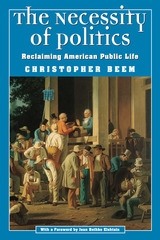 The Necessity of Politics: Reclaiming American Public Life
Christopher Beem
University of Chicago Press, 1999 Even in the midst of an economic boom, most Americans would agree that our civic institutions are hard pressed and that we are growing ever more cynical and disconnected from one another.
In response to this bleak assessment, advocates of "civil society" argue that rejuvenating our neighborhoods, churches, and community associations will lead to a more moral, civic-minded polity. Christopher Beem argues that while the movement's goals are laudable, simply restoring local institutions will not solve the problem; a civil society also needs politics and government to provide a sense of shared values and ideas. Tracing the concept back to Tocqueville and Hegel, Beem shows that both thinkers faced similar problems and both rejected civil society as the sole solution. He then shows how, in the case of the Civil Rights movement, both political groups and the federal government were necessary to effect a new consensus on race.
Taking up the arguments of Robert Putnam, Michael Sandel, and others, this timely book calls for a more developed sense of what the state is for and what our politics ought to be about.
"This book is bound to incite controversy and to contribute to our ongoing grappling with where our own democratic political culture is going. . . . Beem helps us to get things right by offering a corrective to any and all visions of civil society sanitized from politics."—Jean Bethke Elshtain, from the Foreword
"[Beem] makes an impressive case. At the end of the day, there really is no substitute for governmental authority in fostering the moral identity of the body politic."—Robert P. George, Times Literary Supplement
 The Necessity of Pragmatism: John Dewey's Conception of Philosophy
R. W. Sleeper
University of Illinois Press, 1986 Hailed as "the most important overall reassessment of Dewey in several decades" (Sidney Ratner, Journal of Speculative Philosophy), The Necessity of Pragmatism investigates the most difficult and neglected aspects of Dewey's thought, his metaphysics and logic. R. W. Sleeper argues for a fundamental unity in Dewey's work, a unity that rests on his philosophy of language, and clarifies Dewey's conception of pragmatism as an action-based philosophy with the power to effect social change through criticism and inquiry.
Identifying Dewey's differences with his pragmatist forerunners, Charles Sanders Peirce and William James, Sleeper elucidates Dewey's reshaping of pragmatism and the radical significance of his philosophy of culture. In this first paperback edition, a new introduction by Tom Burke establishes the ongoing importance of Sleeper's analysis of the integrity of Dewey's work and its implications for mathematics, aesthetics, and the cognitive sciences.
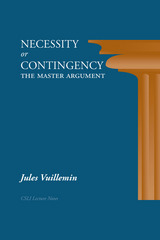 Necessity or Contingency: The Master Argument
Jules Vuillemin
CSLI, 1996 The Master Argument, recorded by Epictetus, indicates that Diodorus had deduced a contradiction from the conjoint assertion of three propositions. The Argument, which has to do with necessity and contingency and therefore with freedom, has attracted the attention of logicians above all. There have been many attempts at reconstructing it in logical terms, without excessive worry about historical plausibility and with the foregone conclusion that it was sophistic since it directly imperilled our common sense notion of freedom. This text takes exception to recent tradition, translating the propositions into logical terms. The propositions figuring in The Master Argument are interpreted in terms of temporal modal logic where both the modalities and the statements they govern have chronological indices. This means that the force of the argument comes not from purely logical or modal considerations, but from our experience of time.
Neck of the World
F. Daniel Rzicznek
Utah State University Press, 2007 Neck of the World is the eleventh volume in the prestigious May Swenson Poetry Award series. In it, Daniel Rzicznek offers poems that, in quick angular language, capture the natural world and at the same time extend it into a surreal vision, sometimes dream-like, sometimes dark. Alice Quinn, judge for the 2007 Swenson Award, says this of Rzicznek’s work: “Throughout, the language pulsates, always vigorous, by turns knotty and crystalline. . . . In Neck of the World, we have a poet with a striking new vision--challenging, rewarding, and bold."
neckbone: visual verses
avery r. young; foreword by Theaster Gates
Northwestern University Press, 2019 The “blk alter” of Avery R. Young’s poetic vision makes its stunning debut in a multidisciplinary arsenal entitled, neckbone: visual verses. Young’s years of supernatural fieldwork within the black experience and the gospel of his transitions between poetry, art and music, become the stitch, paint brush, metaphor, and narrative of arresting visual metaphors of childhood teachings and traumas, identity, and the personal reverence of pop culture’s beauty and beast. A mastermind in a new language of poetry, that engages and challenges readers to see beyond the traditional spaces poems are shaped and exist, Young’s neckbone extends tentacles in literature, art, and activism--redefining the collective and the sermon of the “blk” experience.
Necklace and Calabash: A Chinese Detective Story
Robert van Gulik
University of Chicago Press, 1967 A fiendishly clever puzzle mystery starring the beloved detective Judge Dee, whom the Los Angeles Times ranked with Sherlock Holmes
Necklace and Calabash finds Judge Dee returning to his district of Poo-yang, where the peaceful town of Riverton promises a few days' fishing and relaxation. Yet a chance meeting with a Taoist recluse, a gruesome body fished out of the river, strange guests at the Kingfisher Inn, and a princess in distress thrust the judge into one of the most intricate and baffling mysteries of his career.
A Necklace of Bees: Poems
Dannye Romine Powell
University of Arkansas Press, 2008 With a quirky poignance, Dannye Romine Powell’s third collection probes the nature of loss—loss that's actual and loss that's feared. In these poems, loss takes many guises. With its ferny breath, loss is sometimes the lover who waits in secret on the porch. Sometimes even loss recognizes the feeling of loss and "calls the cops / to say his best friend / went fishing and won't answer his phone." Often, the poet mourns a loss of innocence, as when she learns, after attending the funeral of a friend, that the dead woman's husband has a history of infidelity. There's also the loss of romantic love, as when the woman "pulls / toward shore, a shore she calls by a name / she swore she'd never breathe again."
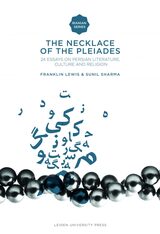 The Necklace of the Pleiades: 24 Essays on Persian Literature, Culture and Religion
Franklin Lewis
Amsterdam University Press, 2011 The Necklace of the Pleiades is a volume on Persian literature, culture and religion by Persian scholars from around the world. This book reflects the state of the field of Persian literary studies and will be of substantial interest not only to scholars of Iranian culture, history and religions, but of Middle Eastern and South Asian studies, as well.
The topics of the 24 essays range from the Persian Alexander romance, to Ferdowsi’s Shahnama and other epics, the poetics and imagery of the ghazal and the qasida, Mughal court poetry, Sufism, Ismaili history, Baha’i literature, Iranian linguistics, the modern writer Sadeq Hedayat, and the reception of Salman Rushdie’s novel in Persian translation.
In Persian literature the Necklace of the Pleiades is a metaphor for the six or seven stars (Parvin, or Sorayyâ, high up in the constellation Taurus) which the heavens bestow, like precious pearls, upon a poet in gratitude and reward for composing a beautiful poem. The poem itself is compared to a string of pearls, with its carefully chosen words bored like unique pearls and strung in perfect metrical proportion. As Hafiz puts it:
You’ve sung a ghazal, pierced the pearls, come and sing it sweetly, Hafiz!
The heavens strew the very Necklace of the Pleiades upon your verse.
 Necklace/Choker: then, meanwhile, now./a small novel in fragments/
Jana Bodnárová
Seagull Books, 2021 An engrossing novel about the lives in a small Slovak town during the tumultuous twentieth century.
In this highly acclaimed novel, Jana Bodnárová offers an engrossing portrayal of a small Slovak town and its inhabitants in the north of the country against the backdrop of the tumultuous history of the twentieth century. As Sara, the protagonist of Necklace/Choker, returns to her native town after many years in exile to sell the old family house and garden, she begins to piece together her family’s history from snippets and fragments of her own memory and the diaries of her artist father, Imro. A talented painter, he survived the Holocaust only to be crushed by the constraints imposed on his art by Stalinist censorship, and Sara herself was later driven into exile after dreams of socialism with a human face were shattered by the Soviet-led invasion of Czechoslovakia in 1968.
Through their stories, and that of Sara’s friend, Iboja, the daughter of a hotelier, readers will be immersed in key moments of Slovak history and their bearing on the people in this less familiar part of Central Europe.
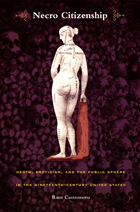 Necro Citizenship: Death, Eroticism, and the Public Sphere in the Nineteenth-Century United States
Russ Castronovo
Duke University Press, 2001 In Necro Citizenship Russ Castronovo argues that the meaning of citizenship in the United States during the nineteenth century was bound to—and even dependent on—death. Deploying an impressive range of literary and cultural texts, Castronovo interrogates an American public sphere that fetishized death as a crucial point of political identification. This morbid politics idealized disembodiment over embodiment, spiritual conditions over material ones, amnesia over history, and passivity over engagement.
Moving from medical engravings, séances, and clairvoyant communication to Supreme Court decisions, popular literature, and physiological tracts, Necro Citizenship explores how rituals of inclusion and belonging have generated alienation and dispossession. Castronovo contends that citizenship does violence to bodies, especially those of blacks, women, and workers. “Necro ideology,” he argues, supplied citizens with the means to think about slavery, economic powerlessness, or social injustice as eternal questions, beyond the scope of politics or critique. By obsessing on sleepwalkers, drowned women, and other corpses, necro ideology fostered a collective demand for an abstract even antidemocratic sense of freedom. Examining issues involving the occult, white sexuality, ghosts, and suicide in conjunction with readings of Harriet Jacobs, Ralph Waldo Emerson, Frederick Douglass, Nathaniel Hawthorne, and Frances Harper, Necro Citizenship successfully demonstrates why Patrick Henry's “give me liberty or give me death” has resonated so strongly in the American imagination.
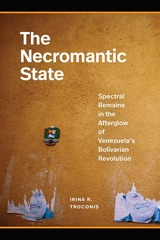 The Necromantic State: Spectral Remains in the Afterglow of Venezuela's Bolivarian Revolution
Irina R. Troconis
Duke University Press, 2025 In the spring of 2013, televisions across Venezuela announced the death of then-president Hugo Chávez, leader of the Bolivarian Revolution and key political actor in Latin America’s “turn to the left.” Chávez’s death, however, was not the end of Chávez’s life. In The Necromantic State, Irina R. Troconis examines how Chávez, as a “specter,” has lingered in Venezuela’s public, private, and digital spaces. Focusing on contemporary Venezuela and drawing from a diverse corpus that includes tattoos, toys, memes, graffiti, and a hologram haunting the streets of downtown Caracas, Troconis contends that, in moments of failed transitions, political tensions, and crises of legitimacy, the state brings the dead back to life to negotiate the terms of its survival. By showing how this necromantic performance enables the state’s material and visual manifestations in public and private spaces, Troconis untangles a sociopolitical moment in which the ghostly acts as the affective, social, and political force that grounds state authority and ensures the preservation of the status quo, as it circumscribes acts of political imagination and limits popular resistance.
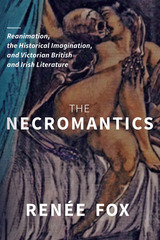 The Necromantics: Reanimation, the Historical Imagination, and Victorian British and Irish Literature
Renée Fox
Ohio State University Press, 2023 Honorable Mention, American Council for Irish Studies Donald Murphy Prize for Distinguished First BookThe Necromantics dwells on the literal afterlives of history. Reading the reanimated corpses—monstrous, metaphorical, and occasionally electrified—that Mary Shelley, Robert Browning, Charles Dickens, W. B. Yeats, Bram Stoker, and others bring to life, Renée Fox argues that these undead figures embody the present’s desire to remake the past in its own image. Fox positions “necromantic literature” at a nineteenth-century intersection between sentimental historiography, medical electricity, imperial gothic monsters, and the Irish Literary Revival, contending that these unghostly bodies resist critical assumptions about the always-haunting power of history. By considering Irish Revival texts within the broader scope of nineteenth-century necromantic works, The Necromantics challenges Victorian studies’ tendency to merge Irish and English national traditions into a single British whole, as well as Irish studies’ postcolonial efforts to cordon off a distinct Irish canon. Fox thus forges new connections between conflicting political, formal, and historical traditions. In doing so, she proposes necromantic literature as a model for a contemporary reparative reading practice that can reanimate nineteenth-century texts with new aesthetic affinities, demonstrating that any effective act of reading will always be an effort of reanimation.
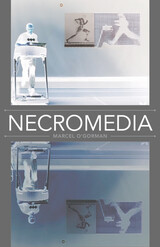 Necromedia
Marcel O'Gorman
University of Minnesota Press, 2015 In Necromedia, media activist Marcel O’Gorman takes aim at “the collusion of death and technology,” drawing on a broad arsenal that ranges from posthumanist philosophy and social psychology to digital art and handmade “objects-to-think-with.” Throughout, O’Gorman mixes philosophical speculation with artistic creation, personal memoir, and existential dread. He is not so much arguing against technoculture as documenting a struggle to embrace the technical essence of human being without permitting technology worshippers to have the last word on what it means to be human. Inspired in part by the work of cultural anthropologist Ernest Becker, O’Gorman begins by suggesting that technology provides human beings with a cultural hero system built on the denial of death and a false promise of immortality. This theory adds an existential zest to the book, allowing the author not only to devise a creative diagnosis of what Bernard Stiegler has called the malaise of contemporary technoculture but also to contribute a potential therapy—one that requires embracing human finitude, infusing care into the process of technological production, and recognizing the vulnerability of all things, human and nonhuman. With this goal in mind, Necromedia prescribes new research practices in the humanities that involve both written work and the creation of objects-to-think-with that are designed to infiltrate and shape the technoculture that surrounds us.
The Necropastoral: Poetry, Media, Occults
Joyelle McSweeney
University of Michigan Press, 2014 In The Necropastoral: Poetry, Media, Occults, poet Joyelle McSweeney presents an ecopoetics and a theory of Art that reflect such biological principles as degradation, proliferation, contamination, and decay. In these ambitious, bustling essays, McSweeney resituates poetry as a medium amid media; hosts “strange meetings” of authors, texts, and artworks across the boundaries of genre, period, and nation; and examines such epiphenomena as translation, anachronism, and violence. Through readings of artists as diverse as Wilfred Owen, Andy Warhol, Harryette Mullen, Roberto Bolaño, Aimé Césaire, and Georges Bataille, The Necropastoral shows by what strategies Art persists amid lethal conditions as a spectacular, uncanny force.
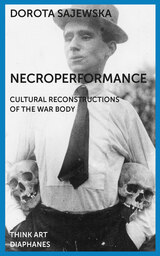 Necroperformance: Cultural Reconstructions of the War Body
Dorota Sajewska
Diaphanes, 2019 In Necroperformance, Dorata Sajewska proposes an innovative perspective for looking back at the formative process of Polish modernity, delving into repressed areas of experience connected with World War I and the ensuing emancipatory movements. Underpinning modern Polish nationhood, she reveals, is not only a Romantic myth of independence but also the up-close horrors of fratricidal warfare and the pacifist aspirations of those confronted with its violence.
Searching for traces of memory in precarious bodies inflicted with the violence of war, Necroperformance implores us to acknowledge the fragility of life as it actively reinforces an attitude of respect for the right to live. Sajewska constructs here an alternative culture archive, conjuring it from compoundly-mediatized historical remnants—bodies, documents, artworks, and cultural writings—that demand to be recognized in non-canonical reflection on our past. Her chief objective is to understand the social impact of remains and their place in culture, and by examining the body and corporality in artistic practices, social and cultural performances, she strives to identify both the fragmentariness of memory and the discontinuity of history, and finally, to reinstate the body’s (or its documental remains’) historical and political dimension.
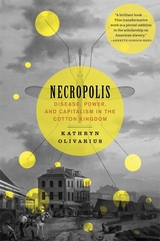 Necropolis: Disease, Power, and Capitalism in the Cotton Kingdom
Kathryn Olivarius
Harvard University Press, 2022 Winner of the Frederick Jackson Turner Award
Winner of James H. Broussard Best First Book Prize, SHEAR
Winner of the Kemper and Leila Williams Prize in Louisiana History
Winner of the Humanities Book of the Year Award, Louisiana Endowment for the Humanities
“A brilliant book…This transformative work is a pivotal addition to the scholarship on American slavery.”
—Annette Gordon-Reed
“A stunning account of ‘high-risk, high-reward’ profiteering in the yellow fever–ridden Crescent City…a world in which a deadly virus altered every aspect of a brutal social system, exacerbating savage inequalities of enslavement, race, and class.”
—John Fabian Witt, author of American Contagions
“Olivarius’s new perspectives on yellow fever, immunocapitalism, and the politics of acclimation…will influence a generation of scholars to come on the intersections of racism, slavery, and public health.”
—The Lancet
In antebellum New Orleans, at the heart of America’s slave and cotton kingdoms, epidemics of yellow fever killed as many as 150,000 people. With little understanding of the origins of the illness—and meager public health infrastructure—one’s only hope if infected was to survive, providing the lucky few with a mysterious form of immunity. Repeated epidemics bolstered New Orleans’s strict racial hierarchy by introducing another hierarchy, a form of “immunocapital,” as white survivors leveraged their immunity to pursue economic and political advancement while enslaved Blacks were relegated to the most grueling labor.
The question of health—who has it, who doesn’t, and why—is always in part political. Necropolis shows how powerful nineteenth-century Orleanians constructed a society that capitalized on mortal risk and benefited from the chaos that ensued.
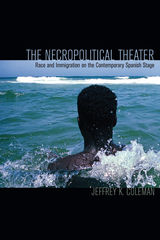 The Necropolitical Theater: Race and Immigration on the Contemporary Spanish Stage
Jeffrey K. Coleman
Northwestern University Press, 2020 The Necropolitical Theater: Race and Immigration on the Contemporary Spanish Stage demonstrates how theatrical production in Spain since the early 1990s has reflected national anxieties about immigration and race. Jeffrey K. Coleman argues that Spain has developed a “necropolitical theater” that casts the non-European immigrant as fictionalized enemy—one whose nonwhiteness is incompatible with Spanish national identity and therefore poses a threat to the very Europeanness of Spain. The fate of the immigrant in the necropolitical theater is death, either physical or metaphysical, which preserves the status quo and provides catharsis for the spectator faced with the notion of racial diversity. Marginalization, forced assimilation, and physical death are outcomes suffered by Latin American, North African, and sub-Saharan African characters, respectively, and in these differential outcomes determined by skin color
Coleman identifies an inherent racial hierarchy informed by the legacies of colonization and religious intolerance.
Drawing on theatrical texts, performances, legal documents, interviews, and critical reviews, this book challenges Spanish theater to develop a new theatrical space. Jeffrey K. Coleman proposes a “convivial theater” that portrays immigrants as contributors to the Spanish state and better represents the multicultural reality of the nation today.
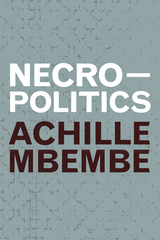 Necropolitics
Achille Mbembe
Duke University Press, 2019 In Necropolitics Achille Mbembe, a leader in the new wave of francophone critical theory, theorizes the genealogy of the contemporary world, a world plagued by ever-increasing inequality, militarization, enmity, and terror as well as by a resurgence of racist, fascist, and nationalist forces determined to exclude and kill. He outlines how democracy has begun to embrace its dark side---what he calls its “nocturnal body”---which is based on the desires, fears, affects, relations, and violence that drove colonialism. This shift has hollowed out democracy, thereby eroding the very values, rights, and freedoms liberal democracy routinely celebrates. As a result, war has become the sacrament of our times in a conception of sovereignty that operates by annihilating all those considered enemies of the state. Despite his dire diagnosis, Mbembe draws on post-Foucauldian debates on biopolitics, war, and race as well as Fanon's notion of care as a shared vulnerability to explore how new conceptions of the human that transcend humanism might come to pass. These new conceptions would allow us to encounter the Other not as a thing to exclude but as a person with whom to build a more just world.
 The Ned Kelly Films: A Cultural History of Kelly History
Stephen Gaunson
Intellect Books, 2013 Irish Australian outlaw Ned Kelly led one of the most spectacular outbreaks the tradition has ever experienced, culminating in a siege at Glenrowan on June 28, 1880. Donned in homemade metal armor and a helmet, he was captured and sentenced to hang at the Melbourne Gaol in November. Immortalized in a series of onscreen productions, he has since become one of the most resilient screen presences in the history of Australian cinema. The Ned Kelly Films recounts the history of this presence, covering the nine feature films, three miniseries, and two TV movies that have been made about this controversial character. Providing a comprehensive overview of these productions and their reception, Stephen Gaunson illuminates a central irony: From dime novels to comics to the branding of the site where he was captured, most cultural representations of Kelly are decidedly lowbrow. But only the films have been condemned for not offering a more serious interpretation of this figure and his historical context. Parsing the assumption that films about Kelly should do more than broadcast the sentiments of his fans, Gaunson explores why historical films have a reputation as a form of “bad” culture. Asking what value we can place on such “bad” historical cinema, he offers new insights about the textual characteristics of cinematic material and the conditions of film distribution, circulation, and reception.
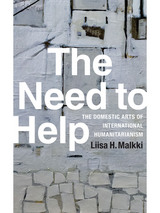 The Need to Help: The Domestic Arts of International Humanitarianism
Liisa H. Malkki
Duke University Press, 2015 In The Need to Help Liisa H. Malkki shifts the focus of the study of humanitarian intervention from aid recipients to aid workers themselves. The anthropological commitment to understand the motivations and desires of these professionals and how they imagine themselves in the world "out there," led Malkki to spend more than a decade interviewing members of the international Finnish Red Cross, as well as observing Finns who volunteered from their homes through gifts of handwork. The need to help, she shows, can come from a profound neediness—the need for aid workers and volunteers to be part of the lively world and something greater than themselves, and, in the case of the elderly who knit "trauma teddies" and "aid bunnies" for "needy children," the need to fight loneliness and loss of personhood. In seriously examining aspects of humanitarian aid often dismissed as sentimental, or trivial, Malkki complicates notions of what constitutes real political work. She traces how the international is always entangled in the domestic, whether in the shape of the need to leave home or handmade gifts that are an aid to sociality and to the imagination of the world.
 Needed Research in American Dialects, Volume 78
Dennis Preston, ed.
Duke University Press Needed Research in American Dialects brings together some of the most highly recognized specialists in the fields of sociolinguistics and dialectology to offer a rare survey of the field’s last twenty years and an investigation into the future study of language variation and change in North America. The volume recognizes the distinct merging of interests among dialectologists, sociolinguists, and students of language with theories of language generally. Essays address the areal distribution of sounds, words, and constructions and focus on social depth and discourse practices, perhaps the two most influential styles of contemporary research. The volume also includes extensive coverage of variation in languages other than English and clearly indicates research that remains to be done. Contributors. Sharon Ash, Richard Bailey, Robert Bayley, Connie C. Eble, Penelope Eckert, Ralph W. Fasold, Joan Houston Hall, Barbara Johnstone, Ruth King, William A. Kretzschmar, Michael Montgomery, Dennis R. Preston
 The Needle and the Lens: Pop Goes to the Movies from Rock 'n' Roll to Synthwave
Nate Patrin
University of Minnesota Press, 2023 How the creative use of pop music in film—think Saturday Night Fever or Apocalypse Now—has shaped and shifted music history since the 1960s Quick: What movie do you think of when you hear “The Sounds of Silence”? Better yet, what song comes to mind when you think of The Graduate? The link between film and song endures as more than a memory, Nate Patrin suggests with this wide-ranging and energetic book. It is, in fact, a sort of cultural symbiosis that has mutually influenced movies and pop music, a phenomenon Patrin tracks through the past fifty years, revealing the power of music in movies to move the needle in popular culture. Rock ’n’ roll, reggae, R&B, jazz, techno, and hip-hop: each had its moment—or many—as music deployed in movies emerged as a form of interpretive commentary, making way for the legitimization of pop and rock music as art forms worthy of serious consideration. These commentaries run the gamut from comedic irony to cheap-thrills excitement to deeply felt drama, all of which Patrin examines in pairings such as American Graffiti and “Do You Want to Dance?”; Saturday Night Fever and “Disco Inferno”; Apocalypse Now and “The End”; Wayne’s World and “Bohemian Rhapsody”; and Jackie Brown and “Didn't I Blow Your Mind This Time?”. What gives power to these individual moments, and how have they shaped and shifted music history, recasting source material or even stirring wider interest in previously niche pop genres? As Patrin surveys the scene—musical and cinematic—across the decades, expanding into the deeper origins, wider connections, and echoed histories that come into play, The Needle and the Lens offers a new way of seeing, and hearing, these iconic soundtrack moments.
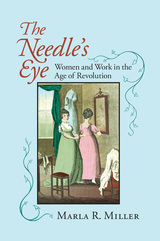 The Needle's Eye: Women and Work in the Age of Revolution
Marla R. Miller
University of Massachusetts Press, 2006 Among the enduring stereotypes of early American history has been the colonial Goodwife, perpetually spinning, sewing, darning, and quilting, answering all of her family's textile needs. But the Goodwife of popular historical imagination obscures as much as she reveals; the icon appears to explain early American women's labor history while at the same time allowing it to go unexplained. Tensions of class and gender recede, and the largest artisanal trade open to early American women is obscured in the guise of domesticity.
In this book, Marla R. Miller illuminates the significance of women's work in the clothing trades of the early Republic. Drawing on diaries, letters, reminiscences, ledgers, and material culture, she explores the contours of working women's lives in rural New England, offering a nuanced view of their varied ranks and roles—skilled and unskilled, black and white, artisanal and laboring—as producers and consumers, clients and craftswomen, employers and employees. By plumbing hierarchies of power and skill, Miller explains how needlework shaped and reflected the circumstances of real women's lives, at once drawing them together and setting them apart.
The heart of the book brings into focus the entwined experiences of six women who lived in and around Hadley, Massachusetts, a thriving agricultural village nestled in a bend in the Connecticut River about halfway between the Connecticut and Vermont borders. Miller's examination of their distinct yet overlapping worlds reveals the myriad ways that the circumstances of everyday lives positioned women in relationship to one another, enlarging and limiting opportunities and shaping the trajectories of days, years, and lifetimes in ways both large and small. The Needle's Eye reveals not only how these women thought about their work, but how they thought about their world.
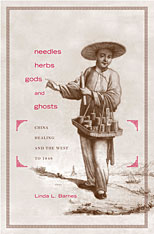 Needles, Herbs, Gods, and Ghosts: China, Healing, and the West to 1848
Linda L. Barnes
Harvard University Press, 2007 When did the West discover Chinese healing traditions? Most people might point to the "rediscovery" of Chinese acupuncture in the 1970s. In Needles, Herbs, Gods, and Ghosts, Linda Barnes leads us back, instead, to the thirteenth century to uncover the story of the West's earliest known encounters with Chinese understandings of illness and healing. As Westerners struggled to understand new peoples unfamiliar to them, how did they make sense of equally unfamiliar concepts and practices of healing? Barnes traces this story through the mid-nineteenth century, in both Europe and, eventually, the United States. She has unearthed numerous examples of Western missionaries, merchants, diplomats, and physicians in China, Europe, and America encountering and interpreting both Chinese people and their healing practices, and sometimes adopting their own versions of these practices.
A medical anthropologist with a degree in comparative religion, Barnes illuminates the way constructions of medicine, religion, race, and the body informed Westerners' understanding of the Chinese and their healing traditions.
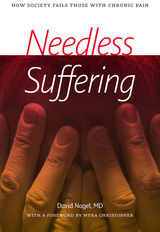 Needless Suffering: How Society Fails Those with Chronic Pain
David Nagel
University Press of New England, 2016 Needless Suffering offers a sociological examination of a complex medical problem: chronic pain and the inability of doctors and other health professionals to understand and manage it in their patients. People in pain, writes Dr. David Nagel, are the poor of the medical world. Like the poor, they are stigmatized and left at the mercy of powerful social actors who tend to work in their own self-interest, frequently at the expense of those they propose to serve. This leaves those who suffer with little control over their own destinies and creates a dysfunctional status quo that harms instead of helps. Drawing on his own experience witnessing his mother’s chronic pain and numerous clinical stories from over thirty years’ expertise as a pain management specialist, Nagel looks first at patients, their families, and their doctors (usually not trained in pain management), and then broadens his canvas to elaborate a pain power structure that includes the entire healthcare community, insurers, lawyers, government regulators, employers, politicians, law enforcement agencies, and painkilling drugs. Concluding with concrete reforms to create more effective and compassionate pain care, this book is designed for pain patients and their families, healthcare providers, legislators and other public policymakers, judges, personal injury and other attorneys, insurers, government regulators, law enforcement personnel, and health care businesspeople.
 Nefertiti’s Face: The Creation of an Icon
Joyce Tyldesley
Harvard University Press, 2018 Little is known about Nefertiti, the Egyptian queen whose name means “a beautiful woman has come.” She was the wife of Akhenaten, the pharaoh who ushered in the dramatic Amarna Age, and she bore him at least six children. She played a prominent role in political and religious affairs, but after Akhenaten’s death she apparently vanished and was soon forgotten.
Yet Nefertiti remains one of the most famous and enigmatic women who ever lived. Her instantly recognizable face adorns a variety of modern artifacts, from expensive jewelry to cheap postcards, t-shirts, and bags, all over the world. She has appeared on page, stage, screen, and opera. In Britain, one woman has spent hundreds of thousands of pounds on plastic surgery in hope of resembling the long-dead royal. This enduring obsession is the result of just one object: the lovely and mysterious Nefertiti bust, created by the sculptor Thutmose and housed in Berlin’s Neues Museum since before World War II.
In Nefertiti’s Face, Egyptologist Joyce Tyldesley tells the story of the bust, from its origins in a busy workshop of the late Bronze Age to its rediscovery and controversial removal to Europe in 1912 and its present status as one of the world’s most treasured artifacts. This wide-ranging history takes us from the temples and tombs of ancient Egypt to wartime Berlin and engages the latest in Pharaonic scholarship. Tyldesley sheds light on both Nefertiti’s life and her improbable afterlife, in which she became famous simply for being famous.
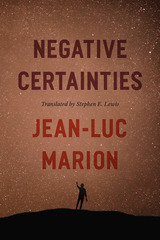 Negative Certainties
Jean-Luc Marion
University of Chicago Press, 2015 Now in paperback, Jean-Luc Marion's groundbreaking philosophy of human uncertainty.
In Negative Certainties, renowned philosopher Jean-Luc Marion challenges some of the most fundamental assumptions we have developed about knowledge: that it is categorical, predicative, and positive. Following Descartes, Kant, and Heidegger, he looks toward our finitude and the limits of our reason. He asks an astonishingly simple—but profoundly provocative—question in order to open up an entirely new way of thinking about knowledge: Isn’t our uncertainty, our finitude, and rational limitations, one of the few things we can be certain about?
Marion shows how the assumption of knowledge as positive demands a reductive epistemology that disregards immeasurable or disorderly phenomena. He shows that we have experiences every day that have no identifiable causes or predictable reasons and that these constitute a very real knowledge—a knowledge of the limits of what can be known. Establishing this “negative certainty,” Marion applies it to four aporias, or issues of certain uncertainty: the definition of man; the nature of God; the unconditionality of the gift; and the unpredictability of events. Translated for the first time into English, Negative Certainties is an invigorating work of epistemological inquiry that will take a central place in Marion’s oeuvre.
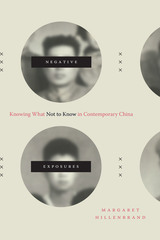 Negative Exposures: Knowing What Not to Know in Contemporary China
Margaret Hillenbrand
Duke University Press, 2020 When nations decide to disown their troubled pasts, how does this strategic disavowal harden into social fact? In Negative Exposures, Margaret Hillenbrand investigates the erasure of key aspects of such momentous events as the Nanjing Massacre, the Cultural Revolution, and the Tiananmen Square protests from the Chinese historical consciousness, not due to amnesia or censorship but through the operations of public secrecy. Knowing what not to know, she argues, has many stakeholders, willing and otherwise, who keep quiet to protect themselves or their families out of shame, pragmatism, or the palliative effects of silence. Hillenbrand shows how secrecy works as a powerful structuring force in Chinese society, one hiding in plain sight, and identifies aesthetic artifacts that serve as modes of reckoning against this phenomenon. She analyses the proliferation of photo-forms—remediations of well-known photographs of troubling historical events rendered in such media as paint, celluloid, fabric, digital imagery, and tattoos—as imaginative spaces in which the shadows of secrecy are provocatively outlined.
 Negative Group Delay Devices: From concepts to applications
Blaise Ravelo
The Institution of Engineering and Technology, 2019 Negative Group Delay Devices: From concepts to applications introduces the theoretical concept, analysis, design methodology and implementation of negative group delay (NGD). The NGD concept is a recent topic in electrical and electronic engineering research based on an unconventional function; the generation of an output signal seemingly in time-advance of the input signal. The NGD function has been exploited to develop experimental high-performance electronic devices, and novel design features of radio frequency (RF) and microwave electronic devices, such as filters, power dividers and amplifiers. Examples include the realization of non-Foster reactive elements, shortening or reducing delay lines, enhancing the efficiency of feedforward linear amplifiers, improvement of phase shifters accuracy and bandwidth, equalization of electrical interconnect effects for the microwave, digital and mixed signal integrity improvement, and minimizing beam-squint in series-fed antenna arrays.
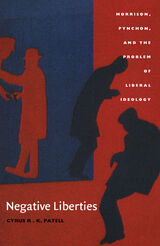 Negative Liberties: Morrison, Pynchon, and the Problem of Liberal Ideology
Cyrus R. K. Patell
Duke University Press, 2001 Since the nineteenth century, ideas centered on the individual, on Emersonian self-reliance, and on the right of the individual to the pursuit of happiness have had a tremendous presence in the United States—and even more so after the Reagan era. But has this presence been for the good of all? In Negative Liberties Cyrus R. K. Patell revises important ideas in the debate about individualism and the political theory of liberalism. He does so by adding two new voices to the current discussion—Toni Morrison and Thomas Pynchon—to examine the different ways in which their writings embody, engage, and critique the official narrative generated by U.S. liberal ideology.
Pynchon and Morrison reveal the official narrative of individualism as encompassing a complex structure of contradiction held in abeyance. This narrative imagines that the goals of the individual are not at odds with the goals of the family or society and in fact obscures the existence of an unholy truce between individual liberty and forms of oppression. By bringing these two fiction writers into a discourse dominated by Ralph Waldo Emerson, Isaiah Berlin, John Rawls, George Kateb, Robert Bellah, and Michael Sandel, Patell unmasks the ways in which contemporary U.S. culture has not fully shed the oppressive patterns of reasoning handed down by the slaveholding culture from which American individualism emerged.
With its interdisciplinary approach, Negative Liberties will appeal to students and scholars of American literature, culture, sociology, and politics.
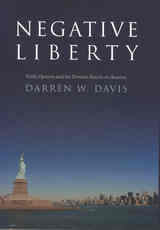 Negative Liberty: Public Opinion and the Terrorist Attacks on America
Darren W. Davis
Russell Sage Foundation, 2007 Did America's democratic convictions "change forever" after the terrorist attacks of September 11? In the wake of 9/11, many pundits predicted that Americans' new and profound anxiety would usher in an era of political acquiescence. Fear, it was claimed, would drive the public to rally around the president and tolerate diminished civil liberties in exchange for security. Political scientist Darren Davis challenges this conventional wisdom in Negative Liberty, revealing a surprising story of how September 11 affected Americans' views on civil liberties and security. Drawing on a unique series of original public opinion surveys conducted in the immediate aftermath of 9/11 and over the subsequent three years, Negative Liberty documents the rapid shifts in Americans' opinions regarding the tradeoff between liberty and security, at a time when the threat of terrorism made the conflict between these values particularly stark. Theories on the psychology of threat predicted that people would cope with threats by focusing on survival and reaffirming their loyalty to their communities, and indeed, Davis found that Americans were initially supportive of government efforts to prevent terrorist attacks by rolling back certain civil liberties. Democrats and independents under a heightened sense of threat became more conservative after 9/11, and trust in government reached its highest level since the Kennedy administration. But while ideological divisions were initially muted, this silence did not represent capitulation on the part of civil libertarians. Subsequent surveys in the years after the attacks revealed that, while citizens' perceptions of threat remained acute, trust in the government declined dramatically in response to the perceived failures of the administration's foreign and domestic security policies. Indeed, those Americans who reported the greatest anxiety about terrorism were the most likely to lose confidence in the government in the years after 2001. As a result, ideological unity proved short lived, and support for civil liberties revived among the public. Negative Liberty demonstrates that, in the absence of faith in government, even extreme threats to national security are not enough to persuade Americans to concede their civil liberties permanently. The September 11 attacks created an unprecedented conflict between liberty and security, testing Americans' devotion to democratic norms. Through lucid analysis of concrete survey data, Negative Liberty sheds light on how citizens of a democracy balance these competing values in a time of crisis.
 Negative Life: The Cinema of Extinction
Steven Swarbrick and Jean-Thomas Tremblay
Northwestern University Press, 2024 How films help us understand the inevitable death of Earth and humanity
Negative Life: The Cinema of Extinction brings cinema studies, queer theory, and psychoanalysis into novel configuration around the concept of negative life, a sundering of human and nonhuman relations. Engaging a philosophical and cinematic corpus that rejects the pastoralism of “entanglement” or “enmeshment,” Steven Swarbrick and Jean-Thomas Tremblay counter ecocritical pieties and cut a new path for theory. They examine films by Julian Pölsler, Kelly Reichardt, Lee Isaac Chung, Mahesh Mathai, Paul Schrader, and others that exemplify the existential contradictions currently intensifying amid the sixth mass extinction. Each case study testifies formally and thematically to negative life as a structural condition of thought and film. Together, the cases reveal the unlivable dimension of life and art, where form, desire, and nonbelonging tarry with the future-oriented promise of ecostudies—where all that lives connects. Negative Life militates against this promise, showing that faith in connection is a dead end.
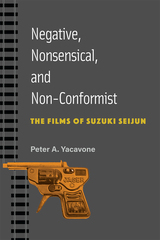 Negative, Nonsensical, and Non-Conformist: The Films of Suzuki Seijun
Peter A. Yacavone
University of Michigan Press, 2023 In the late 1950s, Suzuki Seijun was an unknown, anxious low-ranking film director churning out so-called program pictures for Japan’s most successful movie studio, Nikkatsu. In the early 1960s, he met with modest success in directing popular movies about yakuza gangsters and mild exploitation films featuring prostitutes and teenage rebels. In this book, Peter A. Yacavone argues that Suzuki became an unlikely cinematic rebel and, with hindsight, one of the most important voices in the global cinema of the 1960s. Working from within the studio system, Suzuki almost single-handedly rejected the restrictive filmmaking norms of the postwar period and expanded the form and language of popular cinema. This artistic rebellion proved costly when Suzuki was fired in 1967 and virtually blacklisted by the studios, but Suzuki returned triumphantly to the scene of world cinema in the 1980s and 1990s with a series of critically celebrated, avant-garde tales of the supernatural and the uncanny. This book provides a well-informed, philosophically oriented analysis of Suzuki’s 49 feature films.
 Negative Originals: Race and Early Photography in Colombia
Juanita Solano Roa
Duke University Press, 2025 In Negative Originals, Juanita Solano Roa explores race and identity through photographic practices in late nineteenth-century Medellín, Colombia. Focusing on the photographic studios of Fotografía Rodríguez and Benjamín de la Calle, Solano Roa examines the visual construction and dissemination of racial ideologies and the linkage of race to progress. She studies both positive and negative prints to highlight the juxtaposition of traditional portraiture, which reinforced prevailing racial ideologies, and subversive depictions of often excluded individuals such as cross-dressers, peasants, the poor, and Afro-Colombians. In redefining photography’s role, Solano Roa shifts the critic’s eye from traditional positive prints to negatives, exposing the form’s material, symbolic, and spatial significance. In doing so, she simultaneously uncovers new perspectives on the medium and challenges hegemonic histories. Engaging one of Latin America’s most important photographic archives, Solano Roa addresses urgent gaps in the history of Colombian and Latin American photography, particularly at the intersection of race, gender, and the construction of whiteness.
 Negativity and Revolution: Adorno and Political Activism
Edited by John Holloway, Fernando Matamoros, and Sergio Tischler
Pluto Press, 2009 How can activists combat the political paralysis that characterises the anti-dialectical Marxism of Foucault, Derrida and Deleuze, without reverting to a dogmatic orthodoxy? This book explores solutions in the 'negative dialectics' of Theodor Adorno.
The poststructuralist shift from dialectics to 'difference' has been so popular that it becomes difficult to create meaningful revolutionary responses to neoliberalism. The contributors to this volume come from within the anti-capitalist movement, and close to the concerns expressed in Negri and Hardt's Empire and Multitude. However, they argue forcefully and persuasively for a return to dialectics so a real-world, radical challenge to the current order can be constructed.
This is a passionate call to arms for the anti-capitalist movement. It should be read by all engaged activists and students of political and critical theory.
The Negev: The Challenge of a Desert, Second Edition
Michael Evenari, Leslie Shanan, and Naphtali Tadmor
Harvard University Press, 1982 The Negev, first published in 1971, told the story of some twenty years of study of southern Israel’s desert. It synthesized the findings of botanists, geologists, soil scientists, agronomists, archaeologists, historians, and engineers and told how the applications of their work produced an agricultural surplus in this forbiddingly dry, hot region.
Now Michael Evenari has amplified the book with data from another decade of work. He describes the efforts at a new farm at Wadi Mashash, extends the weather data another ten years, presents further work on the adaptations of plants and animals to desert conditions, and takes a much deeper look at the historical precedents for the method of runoff agriculture, which has made the desert bloom.
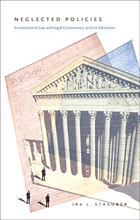 Neglected Policies: Constitutional Law and Legal Commentary as Civic Education
Ira L. Strauber
Duke University Press, 2002 In Neglected Policies, Ira L. Strauber challenges scholars and critics of constitutional jurisprudence to think differently about the Constitution and its interpretation. He argues that important aspects of law, policies, and politics are neglected because legal formalisms, philosophical theories, the reasoning of litigators and judges, and even the role of the courts are too often taken for granted. Strauber advocates an alternative approach to thinking about the legal and moral abstractions ordinarily used in constitutional decision making. His approach, which he calls “agnostic skepticism ,” interrogates all received jurisprudential notions, abandoning the search for “right answers” to legal questions. It demands that attention be paid to the context-specific, circumstantial social facts relevant to given controversies and requires a habit of mind at home with relativism. Strauber situates agnostic skepticism within contemporary legal thought, explaining how it draws upon sociological jurisprudence, legal realism, and critical legal studies. Through studies of cases involving pornography, adoption custody battles, flag burning, federalism, and environmental politics, he demonstrates how agnostic skepticism applies to constitutional issues. Strauber contends that training in skeptical critique will enable a new kind of civic education and culture—one in which citizens are increasingly tolerant of the ambiguities and contradictions inherent in the law and politics of a pluralistic society. Using insights from the social sciences to examine the ways constitutional cases are studied and taught, Neglected Policies will interest scholars of jurisprudence, political science, and the sociology of law.
 Negotiated Care: The Experience of Family Day Care Providers
Margaret K. Nelson
Temple University Press, 1991 Weaving together numerous richly detailed interviews and surveys with recent feminist literature on the role of caregiving in women’s lives and investigations of women’s involvement in home-based work, this book explores the daily lives of family day care providers. Margaret K. Nelson uncovers the dilemmas providers face in their relationships with parents who bring children to them, with the children themselves, with the providers’ family members, and with representatives of the state’s regulatory system. She links these dilemmas to the contradiction between an increasing demand for personalized, cheap, informal child care services and a public policy that subjects child care providers to public scrutiny while giving them limited material and ideological support. Nelson’s discussions with day care providers reveal considerable tensions that emerge over issues of control and intimacy. The dual motivation of business and family gives rise to problems, such as how to maintain enough distance from the parents to set limits on hours while providing personal service in a family setting. Family day care providers often enter this occupation as a way to engage in paid work and meet their own child care responsibilities. This book looks at how they manage to negotiate a setting that simultaneously involves money, trust, and caring. Family day care represents one of the most prevalent sources of child care for working parents. It is an especially common form of care for very young children, yet it remains little studied. In the popular press, stereotypes—many of them negative—prevail. This book substitutes a thorough, detailed examination of this child care setting from a perspective that has generally been ignored-that of the caregiver. While providing useful insights into the role of caregiving in women’s lives and the phenomenon of home-based work, it contributes to the ongoing policy debates about child care.
In the series Women in the Political Economy, edited by Ronnie J. Steinberg.
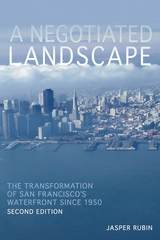 A Negotiated Landscape: The Transformation of San Francisco’s Waterfront since 1950
Jasper Rubin
University of Pittsburgh Press, 2016 A Negotiated Landscape examines the transformation of San Francisco’s iconic waterfront from the eve of its decline in 1950 to the turn of the millennium. What was once a major shipping port is now best known for leisure and entertainment.
To understand this landscape Jasper Rubin not only explores the built environment but also the major forces that have been at work in its redevelopment. While factors such as new transportation technology and economic restructuring have been essential to the process and character of the waterfront’s transformation, the impact of local, grassroots efforts by planners, activists, and boosters have been equally critical.
The first edition of A Negotiated Landscape won the 2012 prize for best book in planning history from the International Planning History Society. Much has changed in the five years since that edition was published. For this second edition, Rubin provides a new concluding chapter that updates the progress of planning on San Francisco’s waterfront and examines debates over the newest visions for its development.
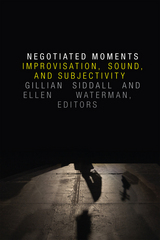 Negotiated Moments: Improvisation, Sound, and Subjectivity
Gillian Siddall and Ellen Waterman, editors
Duke University Press, 2016 The contributors to Negotiated Moments explore how subjectivity is formed and expressed through musical improvisation, tracing the ways the transmission and reception of sound occur within and between bodies in real and virtual time and across memory, history, and space. They place the gendered, sexed, raced, classed, disabled, and technologized body at the center of critical improvisation studies and move beyond the field's tendency toward celebrating improvisation's utopian and democratic ideals by highlighting the improvisation of marginalized subjects. Rejecting a singular theory of improvisational agency, the contributors show how improvisation helps people gain hard-won and highly contingent agency. Essays include analyses of the role of the body and technology in performance, improvisation's ability to disrupt power relations, Pauline Oliveros's ideas about listening, flautist Nicole Mitchell's compositions based on Octavia Butler's science fiction, and an interview with Judith Butler about the relationship between her work and improvisation. The contributors' close attention to improvisation provides a touchstone for examining subjectivities and offers ways to hear the full spectrum of ideas that sound out from and resonate within and across bodies.
Contributors. George Blake, David Borgo, Judith Butler, Rebecca Caines, Louise Campbell, Illa Carrillo Rodríguez, Berenice Corti, Andrew Raffo Dewar, Nina Eidsheim, Tomie Hahn, Jaclyn Heyen, Christine Sun Kim, Catherine Lee, Andra McCartney, Tracy McMullen, Kevin McNeilly, Leaf Miller, Jovana Milovic, François Mouillot, Pauline Oliveros, Jason Robinson, Neil Rolnick, Simon Rose, Gillian Siddall, Julie Dawn Smith, Jesse Stewart, Clara Tomaz, Sherrie Tucker, Lindsay Vogt, Zachary Wallmark, Ellen Waterman, David Whalen, Pete Williams, Deborah Wong, Mandy-Suzanne Wong
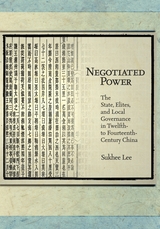 Negotiated Power: The State, Elites, and Local Governance in Twelfth- to Fourteenth-Century China
Sukhee Lee
Harvard University Press, 2014 The internal dynamics driving the relationship between the state and local society during the Southern Song and Yuan dynasties has both captivated and baffled scholars. In this book, Sukhee Lee posits an alternative understanding of the relationship between the state and social elites in the middle period of Chinese imperial history. Directly challenging the assumption of a zero-sum competition between the power of the state and that of local elites, Negotiated Power shows in vivid detail how state power and local elite interests were mutually constitutive and reinforcing. It was precisely the connectedness of social elites to the state, as well as the presence of the state in local life, that was essential to the rise of a self-conscious local elite society during this period. In probing the historical trajectory of Mingzhou prefecture (today’s Ningbo), Lee makes extensive use of local gazetteers from the Southern Song and the Yuan dynasties, and the abundant literary collections that still survive from this area, including some 280 epitaphs written for Mingzhou people of the time.
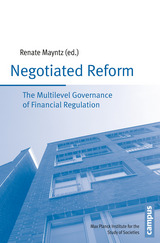 Negotiated Reform: The Multilevel Governance of Financial Regulation
Edited by Renate Mayntz
Campus Verlag, 2016 Multilevel structures are becoming increasingly characteristic of the world in which we live. This book is a unique study of policy making in a multilevel political system extending from the national to the international level. Taking as its subject the process of financial market reforms that took place following the recent financial crisis, it brings together an international group of renowned social scientists to explore the interplay between international organizations, European authorities, and regulators in the United States, the United Kingdom, and Germany in global financial decision making. Contributors thoroughly explore a small set of reform issues—including bank structure, bank capital, resolution, and over-the-counter trading of derivatives—to provide a detailed view of the vertical and horizontal interactions between these actors as related to a set of key questions: Are those states affected by the crisis adopting internationally negotiated regulations? Or are they instead determining the European and international reform agenda? Are the agreed upon policies contributing to greater harmonization of financial regulation in a multilevel political system? Or is the process being dominated by differing national interests?
 Negotiating a Perilous Empowerment: Appalachian Women’s Literacies
Erica Abrams Locklear
Ohio University Press, 2011 In many parts of Appalachia, family ties run deep, constituting an important part of an individual’s sense of self. In some cases, when Appalachian learners seek new forms of knowledge, those family ties can be challenged by the accusation that they have gotten above their raisings, a charge that can have a lasting impact on family and community acceptance. Those who advocate literacy sometimes ignore an important fact — although empowering, newly acquired literacies can create identity conflicts for learners, especially Appalachian women. In Negotiating a Perilous Empowerment, Erica Abrams Locklear explores these literacy-initiated conflicts, analyzing how authors from the region portray them in their fiction and creative nonfiction. Abrams Locklear blends literacy studies with literary criticism to analyze the central female characters in the works of Harriette Simpson Arnow, Linda Scott DeRosier, Denise Giardina, and Lee Smith. She shows how these authors deftly overturn stereotypes of an illiterate Appalachia by creating highly literate characters, women who not only cherish the power of words but also push the boundaries of what literacy means. Negotiating a Perilous Empowerment includes in-depth interviews with Linda Scott DeRosier and Lee Smith, making this an insightful study of an important literary genre.
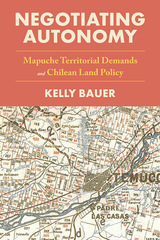 Negotiating Autonomy: Mapuche Territorial Demands and Chilean Land Policy
Kelly Bauer
University of Pittsburgh Press, 2021 The 1980s and ‘90s saw Latin American governments recognizing the property rights of Indigenous and Afro-descendent communities as part of a broader territorial policy shift. But the resulting reforms were not applied consistently, more often extending neoliberal governance than recognizing Indigenous Peoples’ rights. In Negotiating Autonomy, Kelly Bauer explores the inconsistencies by which the Chilean government transfers land in response to Mapuche territorial demands. Interviews with community and government leaders, statistical analysis of an original dataset of Mapuche mobilization and land transfers, and analysis of policy documents reveals that many assumptions about post-dictatorship Chilean politics as technocratic and depoliticized do not apply to Indigenous policy. Rather, state officials often work to preserve the hegemony of political and economic elites in the region, effectively protecting existing market interests over efforts to extend the neoliberal project to the governance of Mapuche territorial demands. In addition to complicating understandings of Chilean governance, these hidden patterns of policy implementation reveal the numerous ways these governance strategies threaten the recognition of Indigenous rights and create limited space for communities to negotiate autonomy.
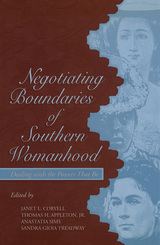 Negotiating Boundaries of Southern Womanhood: Dealing with the Powers That Be
Edited & Intro by Janet L. Coryell, Thomas Appleton, Anastatia Sims, & Sandra Treadway
University of Missouri Press, 2000
In a time when most Americans never questioned the premise that women should be subordinate to men, and in a place where only white men enjoyed fully the rights and privileges of citizenship, many women learned how to negotiate societal boundaries and to claim a share of power for themselves in a male-dominated world.
Covering the early nineteenth through the early twentieth centuries, Negotiating Boundaries of Southern Womanhood describes the ways southern women found to advance their development and independence and establish their own identities in the context of a society that restricted their opportunities and personal freedom.
They confronted, cooperated with, and sometimes were co-opted by existing powers: the white and African American elite whose status was determined by wealth, family name, gender, race, skin color, or combinations thereof. Some women took action against established powers and, in so doing, strengthened their own communities; some bowed to the powers and went along to get along; some became the powers, using status to ensure their prosperity as well as their survival. All chose their actions based on the time and place in which they lived.
In these thought-provoking essays, the authors illustrate the complex intersections of race, class, and gender as they examine the ways in which southern women dealt with "the powers that be" and, in some instances, became those powers. Elitism, status, and class were always filtered through a prism of race and gender in the South, and women of both races played an important role in maintaining as well as challenging the hierarchies that existed.
 Negotiating Childhood: French Colonialism and African Children in Senegal, 1848–1940
Kelly M. Duke Bryant
University of Massachusetts Press, 2026 A groundbreaking study of the meaning of childhood in French colonial Senegal
Negotiating Childhood explores how colonial child protection policies and African children’s responses to them produced new ways of defining, measuring, documenting, and experiencing childhood in the French colony of Senegal from 1848 to 1940. In this groundbreaking book, Kelly M. Duke Bryant takes the scholarship in new directions, offering to a literature dominated by studies of British colonies in the twentieth century a study of childhood in a French colony from the immediate post-emancipation period through the 1930s. This focus allows her to complicate the generally accepted timeline of child protection in colonial Africa and question other assumptions about children’s history on the continent.
This deeply researched work uses a wide range of sources to examine children’s experiences in spaces where they encountered French discipline and surveillance, such as wardship courts, public streets, schools, juvenile reformatories, and vaccine clinics. The book shows not only how these spaces re-ordered African childhood, but also how children themselves shaped and limited French efforts to impose order, especially when the state depended on African children’s cooperation to make good on rhetoric about child “protection.” It also charts the rise of documentation in children’s lives, as colonial representatives recorded names, ages, and other details about the African children with whom they interacted. Tracing the “documented” child back to the early colonial period, Negotiating Childhood historicizes the emergence of identity documentation—so crucial to our contemporary world—and questions the naturalness of the very idea of the “child.”
 Negotiating Childhood: French Colonialism and African Children in Senegal, 1848–1940
Kelly M. Duke Bryant
University of Massachusetts Press, 2026 A groundbreaking study of the meaning of childhood in French colonial Senegal
Negotiating Childhood explores how colonial child protection policies and African children’s responses to them produced new ways of defining, measuring, documenting, and experiencing childhood in the French colony of Senegal from 1848 to 1940. In this groundbreaking book, Kelly M. Duke Bryant takes the scholarship in new directions, offering to a literature dominated by studies of British colonies in the twentieth century a study of childhood in a French colony from the immediate post-emancipation period through the 1930s. This focus allows her to complicate the generally accepted timeline of child protection in colonial Africa and question other assumptions about children’s history on the continent.
This deeply researched work uses a wide range of sources to examine children’s experiences in spaces where they encountered French discipline and surveillance, such as wardship courts, public streets, schools, juvenile reformatories, and vaccine clinics. The book shows not only how these spaces re-ordered African childhood, but also how children themselves shaped and limited French efforts to impose order, especially when the state depended on African children’s cooperation to make good on rhetoric about child “protection.” It also charts the rise of documentation in children’s lives, as colonial representatives recorded names, ages, and other details about the African children with whom they interacted. Tracing the “documented” child back to the early colonial period, Negotiating Childhood historicizes the emergence of identity documentation—so crucial to our contemporary world—and questions the naturalness of the very idea of the “child.”
 Negotiating Childlessness in the Middle Ages: Stories of Desired, Refused, and Regretted Parenthood
Regina Toepfer
Arc Humanities Press, 2025 This book examines the ways in which people wrote about and engaged with infertility in the German Middle Ages. Striking differences emerge across the vernacular stories, legends, and romances concerned. For some, childlessness is a huge problem, for others, a high ideal. Regina Toepfer considers the reasons for these differences, and how ideas changed over the period, revealing different narrative patterns that shape stories of childlessness right up to the present day. These range from the late fulfilment of the longing to have children, assisted by divine or demonic help; through social and religious alternatives to parenthood; to the conscious decision to remain childless and achieve happiness through partnership alone. Bringing German source material to an English readership for the first time, this book provides fresh insights on childlessness that engage with current debates about sperm donation, adoption, and being childfree.
Negotiating Cohesion, Inequality and Change: Uncomfortable Positions in Local Government
Hannah Jones
Bristol University Press, 2014 This unique study explores how local bureaucrats and politicians negotiate diversity, discrimination, migration, and class in the midst of many other issues that affect community cohesion. Drawing on original empirical research, Hannah Jones contends that local government workers must often occupy uncomfortable positions when managing ethical, professional, and political commitments. Ultimately, she reveals the surprising extent to which governmental power affects the lives and emotions of the people who wield it.
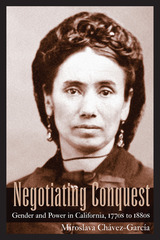 Negotiating Conquest: Gender and Power in California, 1770s to 1880s
Miroslava Chávez-García
University of Arizona Press, 2004 Conquest usually has a negative impact on the vanquished, but it can also provide the disenfranchised in conquered societies with new tools for advancement within their families and communities. This study examines the ways in which Mexican and Native women challenged the patriarchal traditional culture of the Spanish, Mexican, and early American eras in California, tracing the shifting contingencies surrounding their lives from the imposition of Spanish Catholic colonial rule in the 1770s to the ascendancy of Euro-American Protestant capitalist society in the 1880s.
Negotiating Conquest begins with an examination of how gender and ethnicity shaped the policies and practices of the Spanish conquest, showing that Hispanic women, marriage, and the family played a central role in producing a stable society on Mexico’s northernmost frontier. It then examines how gender, law, property, and ethnicity shaped social and class relations among Mexicans and native peoples, focusing particularly on how women dealt with the gender-, class-, and ethnic-based hierarchies that gave Mexican men patriarchal authority. With the American takeover in 1846, the text’s focus shifts to how the imposition of foreign legal, economic, linguistic, and cultural norms affected the status of Mexican women, male-female relations, and the family. Addressing such issues as divorce, legitimacy, and inheritance, it describes the manner in which the conquest weakened the economic position of both Mexican women and men while at the same time increasing the leverage of Mexican women in their personal and social relationships with men.
Drawing on archival materials—including dozens of legal cases—that have been largely ignored by other scholars, Chávez-García examines federal, state, and municipal laws across many periods in order to reveal how women used changing laws, institutions, and norms governing property, marriage and sexuality, and family relations to assert and protect their rights. By showing that mexicanas contested the limits of male rule and insisted that patriarchal relationships be based on reciprocity, Negotiating Conquest expands our knowledge of how patriarchy functioned and evolved as it reveals the ways in which conquest can transform social relationships in both family and community.
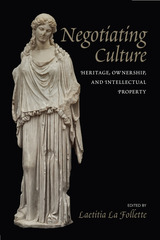 Negotiating Culture: Heritage, Ownership, and Intellectual Property
Laetitia La Follette
University of Massachusetts Press, 2013 Rival claims of ownership or control over various aspects of culture are a regular feature of our twenty-first-century world. Such debates are shaping disciplines as diverse as anthropology and archaeology, art history and museum studies, linguistics and genetics.
This provocative collection of essays—a series of case studies in cultural ownership by scholars from a range of fields—explores issues of cultural heritage and intellectual property in a variety of contexts, from contests over tangible artifacts as well as more abstract forms of culture such as language and oral traditions to current studies of DNA and genes that combine nature and culture, and even new, nonproprietary models for the sharing of digital technologies. Each chapter sets the debate in its historical and disciplinary context and suggests how the approaches to these issues are changing or should change.
One of the most innovative aspects of the volume is the way each author recognizes the social dimensions of group ownership and demonstrates the need for negotiation and new models. The collection as a whole thus challenges the reader to reevaluate traditional ways of thinking about cultural ownership and to examine the broader social contexts within which negotiation over the ownership of culture is taking place.
In addition to Laetitia La Follette, contributors include David Bollier, Stephen Clingman, Susan DiGiacomo, Oriol Pi-Sunyer, Margaret Speas, Banu Subramaniam, Joe Watkins, and H. Martin Wobst.
Negotiating Democracy: Transitions from Authoritarian Rule
Gretchen Casper
University of Pittsburgh Press, 1996
This book explains why some countries succeed in installing democracy after authoritarian rule, and why some of these new democracies make progress toward consolidation. Casper and Taylor show that a democratic government can be installed when elite bargaining during the transition process is relatively smooth. They view elite bargaining in twenty-four transitions cases, some where continued authoritarianism was the result, others where a democratic government was the result, and a third outcome where progress towards consolidation was the end product.
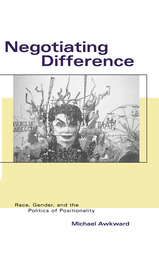 Negotiating Difference: Race, Gender, and the Politics of Positionality
Michael Awkward
University of Chicago Press, 1995 Encamped within the limits of experience and "authenticity," critics today often stake out their positions according to race and ethnicity, sexuality and gender, and vigilantly guard the boundaries against any incursions into their privileged territory. In this book, Michael Awkward raids the borders of contemporary criticism to show how debilitating such "protectionist" stances can be and how much might be gained by crossing our cultural boundaries.
From Spike Lee's She's Gotta Have It to Michael Jackson's physical transmutations, from Toni Morrison's Song of Solomon to August Wilson's Fences, from male scholars' investments in feminism to white scholars' in black texts—Awkward explores cultural moments that challenge the exclusive critical authority of race and gender. In each instance he confronts the question: What do artists, scholars, and others concerned with representations of Afro-American life make of the view that gender, race, and sexuality circumscribe their own and others' lives and narratives? Throughout he demonstrates the perils and merits of the sort of "boundary crossing" this book ultimately makes: a black male feminism.
In pursuing a black male feminist criticism, Awkward's study acknowledges the complexities of interpretation in an age when a variety of powerful discourses have proliferated on the subject of racial, gendered, and sexual difference; at the same time, it identifies this proliferation as an opportunity to negotiate seemingly fixed cultural and critical positions.
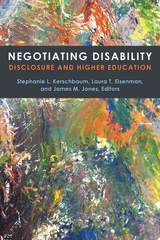 Negotiating Disability: Disclosure and Higher Education
Stephanie L. Kerschbaum, Laura T. Eisenman, and James M. Jones, Editors
University of Michigan Press, 2017 Disability is not always central to claims about diversity and inclusion in higher education, but should be. This collection reveals the pervasiveness of disability issues and considerations within many higher education populations and settings, from classrooms to physical environments to policy impacts on students, faculty, administrators, and staff. While disclosing one’s disability and identifying shared experiences can engender moments of solidarity, the situation is always complicated by the intersecting factors of race and ethnicity, gender, sexuality, and class. With disability disclosure as a central point of departure, this collection of essays builds on scholarship that highlights the deeply rhetorical nature of disclosure and embodied movement, emphasizing disability disclosure as a complex calculus in which degrees of perceptibility are dependent on contexts, types of interactions that are unfolding, interlocutors’ long- and short-term goals, disabilities, and disability experiences, and many other contingencies.
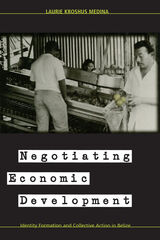 Negotiating Economic Development: Identity Formation and Collective Action in Belize
Laurie Kroshus Medina
University of Arizona Press, 2004 The citrus industry in Belize could be said to exist primarily to satisfy the needs of people in other countries. A business that is highly dependent on global markets and the geopolitics of international trade, it comprises some 500 farmers, many hundreds of wage laborers, and two processing companies that produce frozen juice concentrate for export. This new study examines how those farmers, laborers, and companies define and pursue shared interests, and how they respond differently to the impact of national development strategies and global economic and political forces. Laurie Kroshus Medina analyzes the development of the citrus industry in Belize over fifteen years to explore the relationship between the production of collective identities and the negotiation of development policies at the interface of global and local processes. She shows how citrus farmers and workers, processing companies, and politicians compete to construct shared identities, how they mobilize collective actors, and how their collective action shapes the goals, policies, and practices associated with development. Taking an ethnographic approach, Medina describes how the Belizean citrus industry responds to cycles of boom and bust, and the implications of such cycles for workers and growers. She offers a close look at the major actors—workers, union members, small and large growers, and politicians—as they respond to global changes in the citrus industry. Her analysis is made more compelling through an account of two open struggles in the industry over the formation of a rival union and the attempt to buy the processing company, owned by the multinational corporation Nestlé. She also includes a discussion of the impact of NAFTA on the industry. Medina's research demonstrates how collective agency in Belize has pushed the citrus industry's development in directions that simultaneously conform to and diverge from the trajectories laid out by foreign agencies. Negotiating Economic Development provides a bridge from old to new studies of Latin American social movements as it offers key insights into competing forms of identity for a wide range of social scientists concerned with the human and social aspects of development issues and globalization.
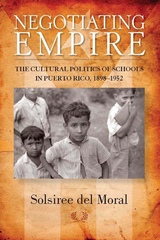 Negotiating Empire: The Cultural Politics of Schools in Puerto Rico, 1898–1952
Solsiree del Moral
University of Wisconsin Press, 2013 After the United States invaded Puerto Rico in 1898, the new unincorporated territory sought to define its future. Seeking to shape the next generation and generate popular support for colonial rule, U.S. officials looked to education as a key venue for promoting the benefits of Americanization. At the same time, public schools became a site where Puerto Rican teachers, parents, and students could formulate and advance their own projects for building citizenship. In Negotiating Empire, Solsiree del Moral demonstrates how these colonial intermediaries aimed for regeneration and progress through education.
Rather than seeing U.S. empire in Puerto Rico during this period as a contest between two sharply polarized groups, del Moral views their interaction as a process of negotiation. Although educators and families rejected some tenets of Americanization, such as English-language instruction, they also redefined and appropriated others to their benefit to increase literacy and skills required for better occupations and social mobility. Pushing their citizenship-building vision through the schools, Puerto Ricans negotiated a different school project—one that was reformist yet radical, modern yet traditional, colonial yet nationalist.
 Negotiating Environmental Agreements: How To Avoid Escalating Confrontation Needless Costs And Unnecessary Litigation
Lawrence Susskind, Paul F. Levy, and Jennifer Thomas-Larmer
Island Press, 2000 When business leaders, government officials, and other stakeholders come to the table in an environmental, health, or safety dispute, acrimony often results, leading to expensive and time-consuming litigation. Not only does this waste precious resources, but rarely does the process produce the best outcome for any of the parties involved. For the past five years, the authors of this volume have conducted semi-annual seminars at the Massachussetts Institute of Technology and at Harvard to provide business leaders and regulators with the knowledge and skills they need to more effectively handle environmental, health, and safety negotiations. Their strategy, known as the "mutual gains approach," is a proven method of producing fairer, more efficient, more stable, and wiser results. Negotiating Environmental Agreements provides the first comprehensive introduction to this widely practiced and highly effective approach to environmental regulation. The book begins with an overview of the mutual gains approach, introducing important concepts and ideas from negotiation theory as well as the theory and practice of mediation. The authors then offer five model negotiations from their MIT-Harvard Public Disputes seminar, followed by a series of real-world negotiated environmental agreements that illustrate the kinds of outcomes possible when the mutual gains approach is employed. A collection of writings by leading experts provide valuable insights into the process, and appendixes offer both instructions for conducting model negotiation sessions and analysis of actual game results from earlier seminars. This is the only prescriptive text available for the many regulatees and regulators involved in environmental regulatory negotiations each year. Anyone involved with environmental negotiation -- including corporate and public sector managers, students of environmental policy, environmental management, and business management -- will find the book an essential resource.
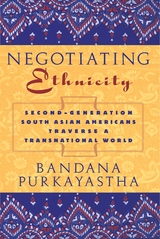 Negotiating Ethnicity: Second-Generation South Asians Traverse a Transnational World
Purkayastha, Bandana
Rutgers University Press, 2005 In the continuing debates on the topic of racial and ethnic identity in the United States, there are some that argue that ethnicity is an ascribed reality. To the contrary, others claim that individuals are becoming increasingly active in choosing and constructing their ethnic identities.Focusing on second-generation South Asian Americans, Bandana Purkayastha offers fresh insights into the subjective experience of race, ethnicity, and social class in an increasingly diverse America. The young people of Indian, Pakistani, Bangladeshi, and Nepalese origin that are the subjects of the study grew up in mostly white middle class suburbs, and their linguistic skills, education, and occupation profiles are indistinguishable from their white peers. By many standards, their lifestyles mark them as members of mainstream American culture. But, as Purkayastha shows, their ethnic experiences are shaped by their racial status as neither “white” nor “wholly Asian,” their continuing ties with family members across the world, and a global consumer industry, which targets them as ethnic consumers.”
Drawing on information gathered from forty-eight in-depth interviews and years of research, this book illustrates how ethnic identity is negotiated by this group through choice—the adoption of ethnic labels, the invention of “traditions,” the consumption of ethnic products, and participation in voluntary societies. The pan-ethnic identities that result demonstrate both a resilient attachment to heritage and a celebration of reinvention.
Lucidly written and enriched with vivid personal accounts, Negotiating Ethnicity is an important contribution to the literature on ethnicity and racialization in contemporary American culture.
Negotiating Feminism and Faith in the Lives and Works of Late Medieval and Early Modern Women
Holly Faith Nelson
Amsterdam University Press, 2024 This wide-ranging transnational collection theorizes how late medieval and early modern Western women critically and creatively negotiated their faith and feminism, taking into account intersecting factors such as class, culture, confessional stance, institutional affiliation, ethnicity, dis/ability, geography, and historical circumstance. It presents thirteen original case studies on the diversity, complexity, and subtlety of the intersection of faith and feminism in the lives and works of twenty-two women writers over a 350-year period in six nations. Along the way, it interrogates the accuracy of the view that monotheistic religions only constrict and oppress women, stifling their agency, autonomy, and authority.
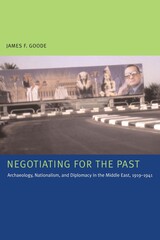 Negotiating for the Past: Archaeology, Nationalism, and Diplomacy in the Middle East, 1919-1941
By James F. Goode
University of Texas Press, 2007 The discovery of the tomb of Tutankhamun in 1922 was a landmark event in Egyptology that was celebrated around the world. Had Howard Carter found his prize a few years earlier, however, the treasures of Tut might now be in the British Museum in London rather than the Egyptian Museum in Cairo. That's because the years between World War I and World War II were a transitional period in Middle Eastern archaeology, as nationalists in Egypt and elsewhere asserted their claims to antiquities discovered within their borders. These claims were motivated by politics as much as by scholarship, with nationalists seeking to unite citizens through pride in their ancient past as they challenged Western powers that still exercised considerable influence over local governments and economies. James Goode's analysis of archaeological affairs in Turkey, Egypt, Iran, and Iraq during this period offers fascinating new insight into the rise of nationalism in the Middle East, as well as archaeological and diplomatic history. The first such work to compare archaeological-nationalistic developments in more than one country, Negotiating for the Past draws on published and archival sources in Arabic, English, French, German, Persian, and Turkish. Those sources reveal how nationalists in Iraq and Iran observed the success of their counterparts in Egypt and Turkey, and were able to hold onto discoveries at legendary sites such as Khorsabad and Persepolis. Retaining artifacts allowed nationalists to build museums and control cultural heritage. As Goode writes, "Going to the national museum became a ritual of citizenship." Western archaeologists became identified (in the eyes of many) as agents of imperialism, thus making their work more difficult, and often necessitating diplomatic intervention. The resulting "negotiations for the past" pulled patrons (such as John D. Rockefeller, Jr., and Lord Carnarvon), archaeologists (James Breasted and Howard Carter), nationalist leaders (Ataturk and Sa'd Zaghlul), and Western officials (Charles Evan Hughes and Lord Curzon) into intractable historical debates with international implications that still resonate today.
 Negotiating Identity and Collective Memory in Czech Silesia
Johana Wyss
Central European University Press, 2026 This study offers an ethnographic exploration of how memory, identity, and history are contested in the city of Opava and the surrounding Hlu.ín area – former sites of Austrian and Prussian rule shaped by post-imperial legacies, displacement, and shifting national narratives. Drawing on extensive fieldwork, the book investigates how local communities navigate dominant Czech nationalism and vernacular Silesian identities through memorials, oral histories, cultural expression, and tourism. Chapters explore themes such as Wehrmacht legacies, linguistic politics, and the branding of Silesian cuisine, revealing how cultural memory is selectively preserved, silenced, or commodified. Through rich case studies, the book highlights the tensions between official discourses and grassroots memory practices, showing how identity in this Central European borderland is continually reconstructed. Blending theoretical depth with lived experience, this study offers new insight into the role of collective memory in shaping belonging in post-imperial, post-socialist Europe.
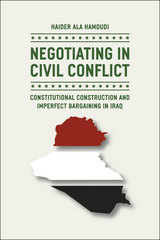 Negotiating in Civil Conflict: Constitutional Construction and Imperfect Bargaining in Iraq
Haider Ala Hamoudi
University of Chicago Press, 2013 In 2005, Iraq drafted its first constitution and held the country’s first democratic election in more than fifty years. Even under ideal conditions, drafting a constitution can be a prolonged process marked by contentious debate, and conditions in Iraq are far from ideal: Iraq has long been racked by ethnic and sectarian conflict, which intensified following the American invasion and continues today. This severe division, which often erupted into violence, would not seem to bode well for the fate of democracy. So how is it that Iraq was able to surmount its sectarianism to draft a constitution that speaks to the conflicting and largely incompatible ideological view of the Sunnis, Shi’ah, and Kurds? Haider Ala Hamoudi served in 2009 as an adviser to Iraq’s Constitutional Review Committee, and he argues here that the terms of the Iraqi Constitution are sufficiently capacious to be interpreted in a variety of ways, allowing it to appeal to the country’s three main sects despite their deep disagreements. While some say that this ambiguity avoids the challenging compromises that ultimately must be made if the state is to survive, Hamoudi maintains that to force these compromises on issues of central importance to ethnic and sectarian identity would almost certainly result in the imposition of one group’s views on the others. Drawing on the original negotiating documents, he shows that this feature of the Constitution was not an act of evasion, as is sometimes thought, but a mark of its drafters’ awareness in recognizing the need to permit the groups the time necessary to develop their own methods of working with one another over time.
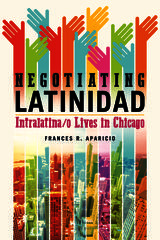 Negotiating Latinidad: Intralatina/o Lives in Chicago
Frances R. Aparicio
University of Illinois Press, 2019 Longstanding Mexican and Puerto Rican populations have helped make people of mixed nationalities—MexiGuatamalans, CubanRicans, and others—an important part of Chicago's Latina/o scene. Intermarriage between Guatemalans, Colombians, and Cubans have further diversified this community-within-a-community. Yet we seldom consider the lives and works of these Intralatino/as when we discuss Latino/as in the United States.In Negotiating Latinidad, a cross-section of Chicago's second-generation Intralatino/as offer their experiences of negotiating between and among the national communities embedded in their families. Frances R. Aparicio's rich interviews reveal Intralatino/as proud of their multiplicity and particularly skilled at understanding difference and boundaries. Their narratives explore both the ongoing complexities of family life and the challenges of fitting into our larger society, in particular the struggle to claim a space—and a sense of belonging—in a Latina/o America that remains highly segmented in scholarship. The result is an emotionally powerful, theoretically rigorous exploration of culture, hybridity, and transnationalism that points the way forward for future scholarship on Intralatino/a identity.
 Negotiating Marian Apparitions: The Politics of Religion in Transcarpathian Ukraine
Agnieszka Halemba
Central European University Press, 2015 This book concerns the politics of religion as expressed through apparitions of the Virgin Mary in Dzhublyk in Transcarpathian Ukraine. On the one hand, the analysis provides insights into the present position of Transcarpathia in regional, Ukraine-wide, and European struggles for identity and political belonging. The way in which the apparitions site has been conceived and managed raises questions concerning the fate of religious communities during and after socialism, the significance of national projects for religious organizations, and the politics of religious management in a situation in which local religious commitments are relatively strong and religious organizations are relatively weak. The analysis contributes to the ethnography and history of this particular region and of the post-socialist world in general. On the other hand, the changing status of the apparition site over the years allows investigation of the questions concerning authority, legitimacy, and power in religious organizations, especially in relation to management of religious experiences. The analysis aims at clarification of such concepts as religious institutions, organizations but also religious experiences and is relevant to anthropology, sociology and religious studies. It is argued that the important question in analyses of religious apparitions should not be how an individual experience becomes institutionalized and instrumentalized, but how experience becomes a tool for negotiation and transformation in the religious field. Key word: 1. Mary, Blessed Virgin, Saint-–Apparitions and miracles–Ukraine–Zakarpats'kaoblast'. 2. Zakarpats'ka oblast' (Ukraine)–Church history.
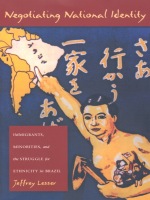 Negotiating National Identity: Immigrants, Minorities, and the Struggle for Ethnicity in Brazil
Jeffrey Lesser
Duke University Press, 1999 Despite great ethnic and racial diversity, ethnicity in Brazil is often portrayed as a matter of black or white, a distinction reinforced by the ruling elite’s efforts to craft the nation’s identity in its own image—white, Christian, and European. In Negotiating National Identity Jeffrey Lesser explores the crucial role ethnic minorities from China, Japan, North Africa, and the Middle East have played in constructing Brazil’s national identity, thereby challenging dominant notions of nationality and citizenship.
Employing a cross-cultural approach, Lesser examines a variety of acculturating responses by minority groups, from insisting on their own whiteness to becoming ultra-nationalists and even entering secret societies that insisted Japan had won World War II. He discusses how various minority groups engaged in similar, and successful, strategies of integration even as they faced immense discrimination and prejudice. Some believed that their ethnic heritage was too high a price to pay for the “privilege” of being white and created alternative categories for themselves, such as Syrian-Lebanese, Japanese-Brazilian, and so on. By giving voice to the role ethnic minorities have played in weaving a broader definition of national identity, this book challenges the notion that elite discourse is hegemonic and provides the first comprehensive look at Brazilian worlds often ignored by scholars.
Based on extensive research, Negotiating National Identity will be valuable to scholars and students in Brazilian and Latin American studies, as well as those in the fields of immigrant history, ethnic studies, and race relations.
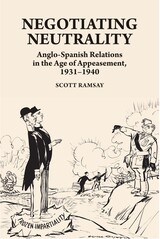 Negotiating Neutrality: Anglo-Spanish Relations in the Age of Appeasement, 1931–1940
Scott Ramsay
Sussex Academic Press, 2022 The British government's policy of non-intervention in response to the outbreak of the Spanish Civil War sought primarily to prevent the conflict escalating into a wider European war but also to ensure that it could maintain or establish cordial relations with whichever side emerged victorious. Due to General Franco's military successes, the support he received from Fascist Italy and Nazi Germany, and the geostrategic importance of the Iberian Peninsula in Britain's Mediterranean strategy, non-intervention evolved into a policy of appeasing Franco. This sustained strategic programme remained in place beyond the Civil War and throughout the Second World War. It aimed to drive a wedge between Franco and the Axis Powers to prevent Spain's incorporation into the Rome-Berlin Axis and thereby ensure the neutrality of the Iberian Peninsula. The British government's diplomatic recognition of Franco and simultaneous abandonment of the Spanish Republic in February 1939 formed a concession comparable to British policy towards Abyssinia and Czechoslovakia.
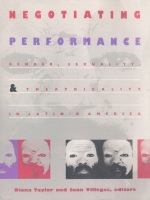 Negotiating Performance: Gender, Sexuality, and Theatricality in Latin/o America
Diana Taylor and Juan Villegas, ed.
Duke University Press, 1994 In Negotiating Performance, major scholars and practitioners of the theatrical arts consider the diversity of Latin American and U. S. Latino performance: indigenous theater, performance art, living installations, carnival, public demonstrations, and gender acts such as transvestism. By redefining performance to include such events as Mayan and AIDS theater, the Mothers of the Plaza de Mayo, and Argentinean drag culture, this energetic volume discusses the dynamics of Latino/a identity politics and the sometimes discordant intersection of gender, sexuality, and nationalisms. The Latin/o America examined here stretches from Patagonia to New York City, bridging the political and geographical divides between U.S. Latinos and Latin Americans. Moving from Nuyorican casitas in the South Bronx, to subversive street performances in Buenos Aires, to border art from San Diego/Tijuana, this volume negotiates the borders that bring Americans together and keep them apart, while at the same time debating the use of the contested term "Latino/a." In the emerging dialogue, contributors reenvision an inclusive "América," a Latin/o America that does not pit nationality against ethnicity—in other words, a shared space, and a home to all Latin/o Americans. Negotiating Performance opens up the field of Latin/o American theater and performance criticism by looking at performance work by Mayans, women, gays, lesbians, and other marginalized groups. In so doing, this volume will interest a wide audience of students and scholars in feminist and gender studies, theater and performance studies, and Latin American and Latino cultural studies. Contributors. Judith Bettelheim, Sue-Ellen Case, Juan Flores, Jean Franco, Donald H. Frischmann, Guillermo Gómez-Peña, Jorge Huerta, Tiffany Ana López, Jacqueline Lazú, María Teresa Marrero, Cherríe Moraga, Kirsten F. Nigro, Patrick O’Connor, Jorge Salessi, Alberto Sandoval, Cynthia Steele, Diana Taylor, Juan Villegas, Marguerite Waller
 Negotiating Pharmaceutical Uncertainty: Women's Agency in a South African HIV Prevention Trial
Eirik Saethre
Vanderbilt University Press, 2017 Telling the story of a clinical trial testing an innovative gel designed to prevent women from contracting HIV, Negotiating Pharmaceutical Uncertainty provides new insight into the complex and contradictory relationship between medical researchers and their subjects. Although clinical trials attempt to control and monitor participants' bodies, Saethre and Stadler argue that the inherent uncertainty of medical testing can create unanticipated opportunities for women to exercise control over their health, sexuality, and social relationships. Combining a critical analysis of the social production of biomedical knowledge and technologies with a detailed ethnography of the lives of female South African trial participants, this book brings to light issues of economic exclusion, racial disparity, and spiritual insecurity in Johannesburg's townships. Built on a series of tales ranging from strategy sessions at the National Institutes of Health to witchcraft accusations against the trial, Negotiating Pharmaceutical Uncertainty illuminates the everyday social lives of clinical trials.
As embedded anthropologists, Saethre and Stadler provide a unique and nuanced perspective of the reality of a clinical trial that is often hidden from view.
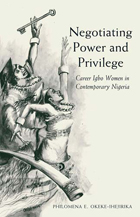 Negotiating Power and Privilege: Career Igbo Women in Contemporary Nigeria
Philomina E. Okeke-Ihejirika
Ohio University Press, 2004 Even with a university education, the Igbo women of southeastern Nigeria face obstacles that prevent them from reaching their professional and personal potentials. Negotiating Power and Privilege is a study of their life choices and the embedded patriarchy and other obstacles in postcolonial Africa barring them from fulfillment. Philomina E. Okeke recorded life-history interviews and discussions during the 1990s with educated women of differing ages and professions. Her interviews expose both familiar and surprising aspects of the women’s experience—their victories and compromise—within their families, marriages, and workplaces. Okeke explores the many factors that have shaped women’s access to sponsorship and promotion in their quest to join men as partners in nation building. Negotiating Power and Privilege captures the voices of African female professionals and vividly portrays the women’s continuous negotiation as wives, mothers, single women, and workers. It shows the inherent limitations of contemporary policies in developing nations that often prescribe secondary and advanced education for women as a panacea for every social ill. It is also an original and important contribution to African studies, gender studies, development studies, education policy, and sociology. This engagingly written book will appeal to a wide audience, ranging from undergraduate students to scholars and professionals.
Negotiating Power in Ezra-Nehemiah
Donna Laird
SBL Press, 2016 Donna Laird examines Ezra and Nehemiah in the light of modern sociological theorist Pierre Bourdieu. How did this context of hardship, exile, and return change what Ezra and Nehemiah viewed as important? How did they define who was a part of their community, and who was an outsider? It goes on to explore how the books engaged readers at the time: how it addressed their changing circumstances, and how different groups gained and used social power, or the ability to influence society.
Features
- Chapters dedicated to penitential prayer and to the role of ritual
- Illustrations of how the writers used past traditions to justify dividing those who belong, the repatriates, from the local population
- Demonstration of how shifting strategies of discourse in the various sections of Ezra-Nehemiah reflect the changing political and social contexts for the community and the authors
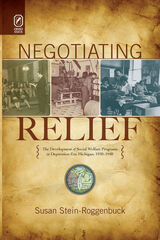 Negotiating Relief: The Development of Social Welfare Programs in Depression-Era Michigan, 1930–1940
Susan Stein-Roggenbuck
Ohio State University Press, 2008 In Negotiating Relief, Susan Stein-Roggenbuck examines Michigan’s implementation of the New Deal relief programs and the state’s reorganization of welfare in 1939. Local officials, social workers, and recipients were key players in the Michigan debates over how best to administer relief. The book sheds important light on the profession of social work and public welfare, and the development of nonfederal relief at the state and local levels after 1935.
Guided by fiscal localism and a firm belief in home rule, local officials fought to retain control of relief. Stein-Roggenbuck argues that while significant changes occurred in welfare policy as a result of the New Deal, many continuities remained. Among those was the responsibility of families to provide financial support. Often forgotten were those on general relief—individuals who did not fit the federal programs such as Aid to Dependent Children (ADC) and Old Age Assistance (OAA). General relief became a third track of welfare.
Drawing on newspaper records, county and city board minutes, social welfare agency records, federal records, and case file records, Negotiating Relief gives voice to the numerous groups involved in welfare debates, particularly the recipients of relief. This book adds to our understanding of the local implementation of welfare policy in both rural and urban areas.
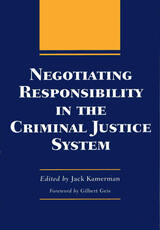 Negotiating Responsibility in the Criminal Justice System
Edited by Jack Kamerman. Foreword by Gilbert Geis
Southern Illinois University Press, 1998 With this collection of essays, Jack Kamerman presents the first sustained examination of one of the underpinnings of the operation of the criminal justice system: the issue of responsibility for actions and, as a consequence, the issue of accountability. Unique in the breadth of its approach, this volume examines the issue of responsibility from the perspectives of criminal justice professionals, sociologists, philosophers, and public administrators from four countries. Attacking the problem on various levels, the essayists look first at the assumptions made by criminal justice institutions regarding offender responsibility, then turn to the views of offenders on the causes of their own actions and to the consequences of offenders either to accept or deny responsibility. These scholars also examine the social and psychological circumstances under which people in general accept or deny responsibility for what they do, thus providing the basis for understanding the process of social distance as a major precondition for people to commit atrocities without seeing themselves as responsible. Understanding the circumstances under which people either distance themselves from or embrace responsibility enables criminologists to make grounded recommendations for reordering responsibility in the criminal justice system and, more generally, for restoring a sense of responsibility to organizations, occupations, and society. Aside from Kamerman, the contributors are William C. Collins, Charles Fethe, Gilbert Geis, Robert J. Kelly, Alison Liebling, Jess Maghan, Mark Harrison Moore, Paul Neurath, John Rakis, William Rentzmann, and José E. Sánchez.
 Negotiating Spain and Catalonia: Competing Narratives of National Identity
Fernando León-Solís
Intellect Books, 2013 What is Spanish identity? The stereotype conjures up images of 'temperament', 'passion' and 'difference' from the rest of Europe. But, within Spain, is there a single image all Spaniards identify with?
The two case studies included in this book (dealing with the Football World Cups of 1994 and 2002, and the general elections of 1996 and 2000) examine competing discourses of Spain, Catalonia and their national identities, as constructed in the Spanish press. The conservative discourse offers traditional and unified images of Spain close to the stereotype, whereas more liberal visions of the country regard 'Europeanism' and 'reason' (not 'passive') as the values Spain should aspire to. From a peripheral perspective, Catalan self-definition is of a people that is hardworking, thoughtful, truly European, and different from the rest of the Spaniards.
However, these differences between the discourses are not always so clear-cut. Central to Negotiating Spain and Catalonia is the idea of the constant renegotiation of Spanish and Catalan identities in order to adapt them to the political circumstance: both case studies show how radically different narratives of Spanishness and Catalanicity offered in the turbulent political past tend to merge into the more tranquil present.
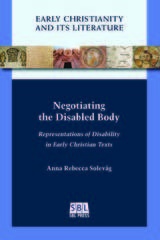 Negotiating the Disabled Body: Representations of Disability in Early Christian Texts
Anna Rebecca Solevåg
SBL Press, 2018 An intersectional study of New Testament and noncanonical literature
Anna Rebecca Solevåg explores how nonnormative bodies are presented in early Christian literature through the lens of disability studies. In a number of case studies, Solevåg shows how early Christians struggled to come to terms with issues relating to body, health, and dis/ability in the gospel stories, apocryphal narratives, Pauline letters, and patristic expositions. Solevåg uses the concepts of narrative prosthesis, gaze and stare, stigma, monster theory, and crip theory to examine early Christian material to reveal the multiple, polyphonous, contradictory ways in which nonnormative bodies appear.
Features:
- Case studies that reveal a variety of understandings, attitudes, medical frameworks, and taxonomies for how disabled bodies were interpreted
- A methodology that uses disability as an analytical tool that contributes insights about cultural categories, ideas of otherness, and social groups’ access to or lack of power
- An intersectional perspective drawing on feminist, gender, queer, race, class, and postcolonial studies
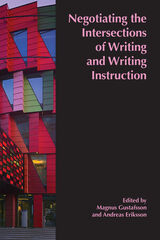 Negotiating the Intersections of Writing and Writing Instruction: Proceedings from the 2019 Conference of the European Association for the Teaching of Academic Writing
edited by Magnus Gustafsson and Andreas Eriksson
University Press of Colorado, 2022 Expanding on their presentations at the 10th conference of the European Association for the Teaching of Academic Writing (EATAW), the contributors to this peer-reviewed edited collection explore and reflect on the conference theme Academic Writing at Intersections – Interdisciplinarity, Genre Hybridization, Multilingualism, Digitalization, and Interculturality. The chapters focus on the choices we face as teachers of academic writing and, indeed, as writers who seek publication as we stand at these critical intersections. Key issues explored in the collection involve the challenges posed by new and emerging technologies, the complexity of approaches to supervision, questions surrounding the scaffolding of writing processes, strategies for navigating complex administrative contexts and structures, and strategies for addressing the translingual contexts most EATAW members—and most teachers of writing—face. The collection concludes with reflections from researchers associated with EATAW and related organizations.
 Negotiating the Law of the Sea
James K. Sebenius
Harvard University Press, 1984 The Law of the Sea (LOS) treaty resulted from some of the most complicated multilateral negotiations ever conducted. Difficult bargaining produced a remarkably sophisticated agreement on the financial aspects of deep ocean mining and on the financing of a new international mining entity. This book analyzes those negotiations along with the abrupt U.S. rejection of their results. Building from this episode, it derives important and subtle general rules and propositions for reaching superior, sustainable agreements in complex bargaining situations.
James Sebenius shows how agreements were possible among the parties because and not in spite of differences in their values, expectations, and attitudes toward time and risk. He shows how linking separately intractable issues can generate a zone of possible agreement. He analyzes the extensive role of a computer model in the LOS talks. Finally, he argues that in many negotiations neither the issues nor the parties are fixed and develops analytic techniques that predict how the addition or deletion of either issues or parties may affect the process of reaching agreement.
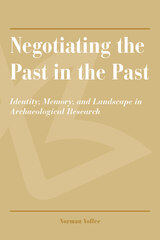 Negotiating the Past in the Past: Identity, Memory, and Landscape in Archaeological Research
Norman Yoffee
University of Arizona Press, 2008 Ralph Waldo Emerson once said that “all history becomes subjective,” that, in fact, “properly there is no history, only biography.” Today, Emerson’s observation is hardly revolutionary for archaeologists; it has become conventional wisdom that the present is a battleground where interpretations of the events and meanings of the past are constantly being disputed. What were the major events? Whose lives did these events impact, and how? Who were the key players? What was their legacy? We know all too well that the answers to these questions can vary considerably depending on what political, social, or personal agenda is driving the response.
Despite our keen eye for discerning historical spin doctors operating today, it has been only in recent years that archaeologists have begun exploring in detail how the past was used in the past itself. This volume of ten original works brings critical insight to this frequently overlooked dimension of earlier societies. Drawing on the concepts of identity, memory, and landscape, the contributors show how these points of entry can lead to substantially new accounts of how people understood their lives and why things changed as they did.
Chapters include the archaeologies of the eastern Mediterranean, including Mesopotamia, Iran, Greece, and Rome; prehistoric Greece; Achaemenid and Hellenistic Armenia; Athens in the Roman period; Nubia and Egypt; medieval South India; and northern Maya Quintana Roo. The contributors show how and why, in each society, certain versions of the past were promoted while others were aggressively forgotten for the purpose of promoting innovation, gaining political advantage, or creating a new group identity.
Commentaries by leading scholars Lynn Meskell and Jack Davis blend with newer voices to create a unique set of essays that is diverse but interrelated, exceptionally researched, and novel in its perspectives.
CONTENTS
1. Peering into the Palimpsest: An Introduction to the Volume
Norman Yoffee
2. Collecting, Defacing, Reinscribing (and Otherwise Performing) Memory in the Ancient World
Catherine Lyon Crawford
3. Unforgettable Landscapes: Attachments to the Past in Hellenistic Armenia
Lori Khatchadourian
4. Mortuary Studies, Memory, and the Mycenaean Polity
Seth Button
5. Identity under Construction in Roman Athens
Sanjaya Thakur
6. Inscribing the Napatan Landscape: Architecture and Royal Identity
Lindsay Ambridge
7. Negotiated Pasts and the Memorialized Present in Ancient India: Chalukyas of Vatapi
Hemanth Kadambi
8. Creating, Transforming, Rejecting, and Reinterpreting Ancient Maya Urban Landscapes: Insights from Lagartera and Margarita
Laura P. Villamil
9. Back to the Future: From the Past in the Present to the Past in the Past
Lynn Meskell
10. Memory Groups and the State: Erasing the Past and Inscribing the Present in the Landscapes of the Mediterranean and Near East
Jack L. Davis
About the Editor
About the Contributors
Index
 Negotiating Tribal Water Rights: Fulfilling Promises in the Arid West
Bonnie G. Colby, John E. Thorson, and Sarah Britton; Foreword by David H. Getches
University of Arizona Press, 2005 Water conflicts plague every river in the West, with the thorniest dilemmas found in the many basins with Indian reservations and reserved water rights—rights usually senior to all others in over-appropriated rivers. Negotiations and litigation over tribal water rights shape the future of both Indian and non-Indian communities throughout the region, and intense competition for limited water supplies has increased pressure to address tribal water claims. Much has been written about Indian water rights; for the many tribal and non-Indian stakeholders who rely upon western water, this book now offers practical guidance on how to negotiate them. By providing a comprehensive synthesis of western water issues, tribal water disputes, and alternative approaches to dispute resolution, it offers a valuable sourcebook for all—tribal councils, legislators, water professionals, attorneys—who need a basic understanding of the complexities of the situation. The book reviews the history, current status, and case law related to western water while revealing strategies for addressing water conflicts among tribes, cities, farms, environmentalists, and public agencies. Drawing insights from the process, structure, and implementation of water rights settlements currently under negotiation or already agreed to, it presents a detailed analysis of how these cases evolve over time. It also provides a wide range of contextual materials, from the nuts and bolts of a Freedom of Information Act request to the hydrology of irrigation. It also includes contributed essays by expert authors on special topics, as well as interviews with key individuals active in water management and tribal water cases. As stakeholders continue to battle over rights to water, this book clearly addresses the place of Native rights in the conflict. Negotiating Tribal Water Rights offers an unsurpassed introduction to the ongoing challenges these claims present to western water management while demonstrating the innovative approaches that states, tribes, and the federal government have taken to fulfill them while mitigating harm to both non-Indians and the environment.
 Negotiating Urban Space: Urbanization and Late Ming Nanjing
Si-yen Fei
Harvard University Press, 2009 Urbanization was central to development in late imperial China. Yet its impact is heatedly debated, although scholars agree that it triggered neither Weberian urban autonomy nor Habermasian civil society. This book argues that this conceptual impasse derives from the fact that the seemingly continuous urban expansion was in fact punctuated by a wide variety of “dynastic urbanisms.” Historians should, the author contends, view urbanization not as an automatic by-product of commercial forces but as a process shaped by institutional frameworks and cultural trends in each dynasty.
This characteristic is particularly evident in the Ming. As the empire grew increasingly urbanized, the gap between the early Ming valorization of the rural and late Ming reality infringed upon the livelihood and identity of urban residents. This contradiction went almost unremarked in court forums and discussions among elites, leaving its resolution to local initiatives and negotiations. Using Nanjing—a metropolis along the Yangzi River and onetime capital of the Ming—as a central case, the author demonstrates that, prompted by this unique form of urban-rural contradiction, the actions and creations of urban residents transformed the city on multiple levels: as an urban community, as a metropolitan region, as an imagined space, and, finally, as a discursive subject.
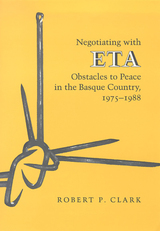 Negotiating With Eta: Obstacles To Peace In The Basque Country, 1975-1988
Robert P. Clark
University of Nevada Press, 1990 Since the late 1960s, the Basque insurgent organization ETA (Euzkadi ta Askatasuna, or Basque Homeland and Freedom) has been engaged in a violent struggle against the Spanish state in an effort to gain the independence of the Basque Country. ETA violence has led to the death of hundreds of people, making the organization the most violent insurgent group in Europe. Between 1975 and 1988, nearly thirty attempts to negotiate an end to violence, with a few limited exceptions, all ended in failure. This important book examines why the efforts to negotiate have failed and makes suggestions on how to improve the chances for successful discussion in the future. Although Clark does not disprove the conventional wisdom that negotiation with terrorists is a bad idea, he does begin from the opposing point of view that there may be some positive values to be realized from such negotiation.Negotiating with ETA describes the various factions that are interested in the outcome of such negotiations and the Spanish antiterrorist policy throughout the period under examination. The book also recounts the early attempts to negotiate, the first attempt at "social reintegration," various attempts by the Basque Government to get negotiations started, negotiation efforts under the Spanish socialist government of Felipe González, and the lengthy negotiations that took place in Algeria. A wide range of scholars and specialists will find this book valuable, including those interested in contemporary Spanish politics, ethnic nationalism, Basque affairs, the problem of terrorism, and conflict resolution.
 Negotiating with Imperialism: The Unequal Treaties and the Culture of Japanese Diplomacy
Michael R. Auslin
Harvard University Press, 2004 Japan's modern international history began in 1858 with the signing of the "unequal" commercial treaty with the United States. Over the next fifteen years, Japanese diplomacy was reshaped to respond to the Western imperialist challenge. Negotiating with Imperialism is the first book to explain the emergence of modern Japan through this early period of treaty relations.
Michael Auslin dispels the myth that the Tokugawa bakufu was diplomatically incompetent. Refusing to surrender to the West's power, bakufu diplomats employed negotiation as a weapon to defend Japan's interests. Tracing various visions of Japan's international identity, Auslin examines the evolution of the culture of Japanese diplomacy. Further, he demonstrates the limits of nineteenth-century imperialist power by examining the responses of British, French, and American diplomats. After replacing the Tokugawa in 1868, Meiji leaders initially utilized bakufu tactics. However, their 1872 failure to revise the treaties led them to focus on domestic reform as a way of maintaining independence and gaining equality with the West.
In a compelling analysis of the interplay among assassinations, Western bombardment of Japanese cities, fertile cultural exchange, and intellectual discovery, Auslin offers a persuasive reading of the birth of modern Japan and its struggle to determine its future relations with the world.
Negotiation Analysis
H. Peyton Young, Editor
University of Michigan Press, 1991 A much-needed study of the ins and outs of negotiation
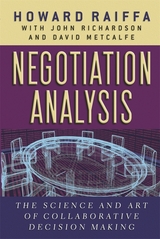 Negotiation Analysis: The Science and Art of Collaborative Decision Making
By Howard Raiffa with John Richardson and David Metcalfe
Harvard University Press, 2002 This masterly book substantially extends Howard Raiffa's earlier classic, The Art and Science of Negotiation. It does so by incorporating three additional supporting strands of inquiry: individual decision analysis, judgmental decision making, and game theory. Each strand is introduced and used in analyzing negotiations.
The book starts by considering how analytically minded parties can generate joint gains and distribute them equitably by negotiating with full, open, truthful exchanges. The book then examines models that disengage step by step from that ideal. It also shows how a neutral outsider (intervenor) can help all negotiators by providing joint, neutral analysis of their problem.
Although analytical in its approach--building from simple hypothetical examples--the book can be understood by those with only a high school background in mathematics. It therefore will have a broad relevance for both the theory and practice of negotiation analysis as it is applied to disputes that range from those between family members, business partners, and business competitors to those involving labor and management, environmentalists and developers, and nations.
 The Negotiation of Urgency: Economies of Attention in an Italian Emergency Room
Mirko Pasquini
Rutgers University Press, 2025 Who is to be attended first? And how should such a decision be made? The Negotiation of Urgency: Economies of Attention in an Italian Emergency Room ethnographically explores the everyday life of one of the thickest places in contemporary societies: the ER, where aging, economic precarity, draconian migration laws, hospital overcrowding, and life and death, intersect daily. The book describes the effect of those intersections for clinicians and their patients, as well as for policy makers and the health-care system more generally.
Mirko Pasquini shows that there is more than medical urgency at stake in the ER, where mistrust of medical authority is fueled and violence often sparks. He analyzes the making of urgency, that is triage, not as a neutral medical way of sorting, but as a practice that actively creates difference through economies of attention. The Negotiation of Urgency illustrates both the limits of triage, and how those limits can spark improvisation and creative reinvention.
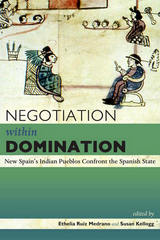 Negotiation within Domination: New Spain's Indian Pueblos Confront the Spanish State
Ethelia Ruiz Medrano
University Press of Colorado, 2016 Although indigenous communities reacted to Spanish presence with significant acts of resistance and rebellion, they also turned to negotiation to deal with conflicts and ameliorate the consequences of colonial rule. This affected not only the development of legal systems in New Spain and Mexico but also the survival and continuation of traditional cultures. Bringing together work by Mexican and North American historians, this collection is a crucially important and rare contribution to the field. Negotiation within Domination is a valuable resource for native peoples as they seek to redefine and revitalize their identities and assert their rights relating to language and religion, ownership of lands and natural resources, rights of self-determination and self-government, and protection of cultural and intellectual property. It will be of interest primarily to specialists in the field of colonial studies and historians and ethnohistorians of New Spain.
Contributors: R. Jovita Baber, José Manuel A. Chávez-Gómez, Susan Kellogg, Edward W. Osowski, María de los Ángeles Romero Frizzi, Ethelia Ruiz Medrano, Cuauhtémoc Velasco Ávila, Yanna P. Yannakakis
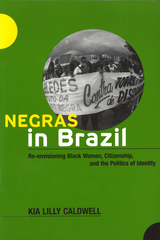 Negras in Brazil: Re-envisioning Black Women, Citizenship, and the Politics of Identity
Caldwell, Kia Lilly
Rutgers University Press, 2006 For most of the twentieth century, Brazil was widely regarded as a "racial democracy"-a country untainted by the scourge of racism and prejudice. In recent decades, however, this image has been severely critiqued, with a growing number of studies highlighting persistent and deep-seated patterns of racial discrimination and inequality. Yet, recent work on race and racism has rarely considered gender as part of its analysis.
In Negras in Brazil, Kia Lilly Caldwell examines the life experiences of Afro-Brazilian women whose stories have until now been largely untold. This pathbreaking study analyzes the links between race and gender and broader processes of social, economic, and political exclusion. Drawing on ethnographic research with social movement organizations and thirty-five life history interviews, Caldwell explores the everyday struggles Afro-Brazilian women face in their efforts to achieve equal rights and full citizenship. She also shows how the black women's movement, which has emerged in recent decades, has sought to challenge racial and gender discrimination in Brazil. While proposing a broader view of citizenship that includes domains such as popular culture and the body, Negras in Brazil highlights the continuing relevance of identity politics for members of racially marginalized communities. Providing new insights into black women's social activism and a gendered perspective on Brazilian racial dynamics, this book will be of interest to students and scholars of Latin American Studies, African diaspora studies, women's studies, politics, and cultural anthropology.
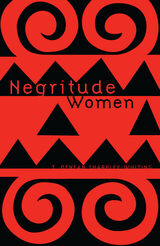 Negritude Women
T. Denean Sharpley-Whiting
University of Minnesota Press, 2002 Rediscovers the crucial role that women played in the influential Negritude movement. The Negritude movement, which signaled the awakening of a pan-African consciousness among black French intellectuals, has been understood almost exclusively in terms of the contributions of its male founders: Aimé Césaire, Léopold Sédar Senghor, and Léon G. Damas. This masculine genealogy has completely overshadowed the central role played by French-speaking black women in its creation and evolution. In Negritude Women, T. Denean Sharpley-Whiting offers a long-overdue corrective, revealing the contributions made by the women who were not merely integral to the success of the movement, but often in its vanguard. Through such disparate tactics as Lacascade’s use of Creole expressions in her French prose writings, the literary salon and journal founded by the Martinique-born Nardal sisters, and Roussy-Césaire’s revolutionary blend of surrealism and Negritude in the pages of Tropiques, the journal she founded with her husband, these four remarkable women made vital contributions. In exploring their influence on the development of themes central to Negritude-black humanism, the affirmation of black peoples and their cultures, and the rehabilitation of Africa-Sharpley-Whiting provides the movement’s first genuinely inclusive history.
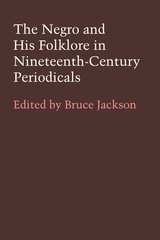 The Negro and His Folklore in Nineteenth-Century Periodicals
Edited by Bruce Jackson
University of Texas Press, 1967 In the eyes of many white Americans, North and South, the Negro did not have a culture until the Emancipation Proclamation. With few exceptions, serious collecting of Negro folklore by whites did not begin until the Civil War—and it was to be another four decades before black Americans would begin to appreciate their own cultural heritage. Few of the earlier writers realized that they had observed and recorded not simply a manifestation of a particular way of life but also a product peculiarly American and specifically Negro, a synthesis of African and American styles and traditions. The folksongs, speech, beliefs, customs, and tales of the American Negro are discussed in this anthology, originally published in 1967, of thirty-five articles, letters, and reviews from nineteenth-century periodicals. Published between 1838 and 1900 and written by authors who range from ardent abolitionist to dedicated slaveholder, these articles reflect the authors’ knowledge of, and attitudes toward, the Negro and his folklore. From the vast body of material that appeared on this subject during the nineteenth century, editor Bruce Jackson has culled fresh articles that are basic folklore and represent a wide range of material and attitudes. In addition to his introduction to the volume, Jackson has prefaced each article with a commentary. He has also supplied a supplemental bibliography on Negro folklore. If serious collecting of Negro folklore had begun by the middle of the nineteenth century, so had exploitation of its various aspects, particularly Negro songs. By 1850 minstrelsy was a big business. Although Jackson has considered minstrelsy outside the scope of this collection, he has included several discussions of it to suggest some aspects of its peculiar relation to the traditional. The articles in the anthology—some by such well-known figures as Joel Chandler Harris, George Washington Cable, Thomas Wentworth Higginson, John Mason Brown, and Antonin Dvorak—make fascinating reading for an observer of the American scene. This additional insight into the habits of thought and behavior of a culture in transition—folklore recorded in its own context—cannot but afford the thinking reader further understanding of the turbulent race problems of later times and today.
"Negro and White, Unite and Fight!": A Social History of Industrial Unionism in Meatpacking, 1930-90
Roger Horowitz
University of Illinois Press, 1997 This pathbreaking study traces the rise--and subsequent fall--of the United Packinghouse Workers of America (UPWA). Roger Horowitz looks at local leaders and meatpacking workers in Chicago, Kansas City, Sioux City, and Austin, Minnesota, closely examining the unionizing of the workplace and the prominent role of black workers and women in UPWA.
Horowitz shows how three major firms in U.S. meat production and distribution became dominant by virtually eliminating union power. The union's decline, he argues, reflected massive pressure by capital for lower labor costs and greater control over the work process. In the end, the victorious firms were those that had been most successful at increasing the rate of exploitation of their workers, who now labor in conditions as bad as those of a century ago.
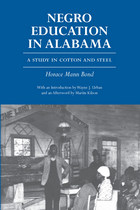 Negro Education in Alabama: A Study in Cotton and Steel
Horace Mann Bond
University of Alabama Press, 1994 WINNER OF THE SUSAN COLVER ROSENBERGER AWARD A foundational work of educational history, Horace Mann Bond’s study reveals how race, labor, and power shaped Black schooling in Alabama—and why those lessons still matter today. Originally published in 1939, Negro Education in Alabama: A Study in Cotton and Steel by Horace Mann Bond is a pioneering work of educational and social history. Drawing on extensive data and firsthand observation, Bond explores how the economic structures of the cotton South and the industrializing North influenced the development of Black education in Alabama. He examines disparities in funding, curriculum, and access, while also highlighting the resilience and agency of African American communities in pursuing educational advancement. This reissued edition preserves Bond’s critical insights and remains a vital resource for scholars of African American history, education policy, and Southern studies.
 Negro Family In The United States
E. Franklin Frazier
University of Notre Dame Press, 2001 Howard University Professor E. Franklin Frazier's 1939 book, The Negro Family in the United States, was the first comprehensive study of the family life of African Americans from slavery to the 1930s. Frazier insisted that the characteristics of the family were shaped by social conditions, not by race. His book set the terms for all future work on the subject.
Reviews
"Few studies have done as much to illuminate the obscure processes of social change as this thoroughgoing treatment of the Negro family in the United States. Dr. Frazier's researches have contributed facts so pertinent and hypotheses so penetrating as to command the attention of all interested in the processes of family adjustment and change... the study is a most important contribution to the literature on the family."
--American Academy of Political and Social Science Annals
"The book is both extremely well organized and engagingly written; not the least ingredient of its charm is the almost Biblical terminology of the titles given its parts and chapters."
--Nation
"This book should help to check the too frequent tendency to assume that it is possible to generalize about the Negro, for it reveals wide variations in the standards of different social classes among the coloured population, as well as the still wider variations in the behaviour of different individuals."
--[London] Times Literary Supplement
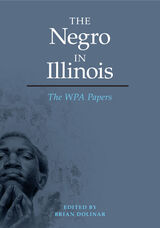 The Negro in Illinois: The WPA Papers
Edited by Brian Dolinar
University of Illinois Press, 2013 A major document of African American participation in the struggles of the Depression, The Negro in Illinois was produced by a special division of the Illinois Writers' Project, one of President Roosevelt's Works Progress Administration programs. The Federal Writers' Project helped to sustain "New Negro" artists during the 1930s and gave them a newfound social consciousness that is reflected in their writing. Headed by Harlem Renaissance poet Arna Bontemps and white proletarian writer Jack Conroy, The Negro in Illinois employed major black writers living in Chicago during the 1930s, including Richard Wright, Margaret Walker, Katherine Dunham, Fenton Johnson, Frank Yerby, and Richard Durham. The authors chronicled the African American experience in Illinois from the beginnings of slavery to Lincoln's emancipation and the Great Migration, with individual chapters discussing various aspects of public and domestic life, recreation, politics, religion, literature, and performing arts. After the project was canceled in 1942, most of the writings went unpublished for more than half a century--until now. Working closely with archivist Michael Flug to select and organize the book, editor Brian Dolinar compiled The Negro in Illinois from papers at the Vivian G. Harsh Collection of Afro-American History and Literature at the Carter G. Woodson Library in Chicago. Dolinar provides an informative introduction and epilogue which explain the origins of the project and place it in the context of the Black Chicago Renaissance. Making available an invaluable perspective on African American life, this volume represents a publication of immense historical and literary importance.
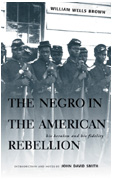 The Negro in the American Rebellion: His Heroism and His Fidelity
William Wells Brown
Ohio University Press, 1997 In 1863, as the Civil War raged, the escaped slave, abolitionist, and novelist William Wells Brown identified two groups most harmful to his race. “The first and most relentless,” he explained, “are those who have done them the greatest injury, by being instrumental in their enslavement and consequent degradation. They delight to descant upon the ‘natural inferiority’ of the blacks, and claim that we were destined only for a servile condition, entitled neither to liberty nor the legitimate pursuit of happiness.” “The second class,” Brown concluded, “are those who are ignorant of the characteristics of the race, and are the mere echoes of the first.” Four years later, Brown wrote the first military history of African Americans, The Negro in the American Rebellion. This text assailed those whose hatred and ignorance inclined them to keep blacks oppressed after Appomattox. This critical edition of The Negro in the American Rebellion, one of Brown’s least-analyzed texts, is the first to appear in more than three decades. In his introduction, historian John David Smith identifies the text’s Anglo-American abolitionist roots, sets it in the context of Brown’s other writings, appraises it as military history, analyzes its interpretation of black masculinity and honor, and focuses closely on Brown’s assessment of contemporary racial tensions. Largely ignored by scholars, The Negro in the American Rebellion, Smith argues, is a powerful transitional text, one that confronted squarely the neo-slavery of the Reconstruction era. “Whites,” Brown wrote, “appear determined to reduce the blacks to a state of serfdom if they cannot have them as slaves.” His important text was a call to arms in the ongoing race struggle. Smith’s analysis, framed within recent scholarship on slavery, emancipation, and African American participation in the U.S. army, is long overdue.
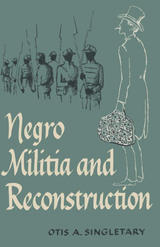 Negro Militia and Reconstruction
By Otis A. Singletary
University of Texas Press, 1957 Much of the violence that characterized Reconstruction was directly associated with the Negro militia movement organized by Radical politicians to support their precarious regimes in Southern states. This book is the story of that ill-fated movement, a story with important implication for later times. Most Southern whites did not disguise their hostility toward the governments that were imposed on their states after Reconstruction entered its Radical phase. and Radical leaders lived in constant fear that this hostility would flare into open revolt. Organization of a loyal protective force was imperative if they were to remain in power. Although planned originally as a defensive force, the Negro militia was quickly used by the Radicals for such purposes as controlling elections. The resentment of Southern whites resulting from this political activity was aggravated by crimes of violence, depredations, and minor social offenses committed by some of the militiamen. However, the white Southerner’s fundamental enmity toward the Negro militia stemmed from the racial implications of a policy that armed the Negroes and placed them in positions of authority over white men. At first, opposition to the Negro militia movement took the form of legal stratagems and other measures short of force, but the final blow to the Negro militia was dealt by white volunteer rifle companies— illegal, armed counterforces that were at the very core of the White Line movement. The race riot as a political technique was born, the most notorious riot occurring at Hamburg, South Carolina, where, the author states, the policy of “disbandment through extermination” was successfully employed. Disintegration of the entire movement was inevitable. “It is ironic,” Singletary states, “that the organization of this protective force, because of its racial implications, actually aided in the destruction of the very thing it was created to protect.” Before its publication, Negro Militia and Reconstruction won the Moncado Prize, a cash award made biennially by the American Military Institute for “the best original book-length manuscript in any field of United States Military history.”
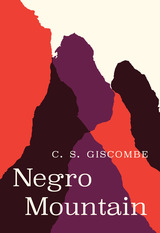 Negro Mountain
C. S. Giscombe
University of Chicago Press, 2023 A cross-genre poetry collection that troubles the idea of poetic voice while considering history, biology, the shamanistic, and the shapes of racial memory.
In the final section of Negro Mountain, C. S. Giscombe writes, “Negro Mountain—the summit of which is the highest point in Pennsylvania—is a default, a way among others to think about the Commonwealth.” Named for an “incident” in which a Black man was killed while fighting on the side of white enslavers against Indigenous peoples in the eighteenth century, this mountain has a shadow presence throughout this collection; it appears, often indirectly, in accounts of visions, reimaginings of geography, testimonies about the “natural” world, and speculations and observations about race, sexuality, and monstrosity. These poems address location, but Giscombe—who worked for ten years in central Pennsylvania—understands location to be a practice, the continual “action of situating.”
The book weaves through the ranges of thinking that poetic voice itself might trouble. Addressing a gallery of figures, Giscombe probes their impurities and ambivalences as a way of examining what languages “count” or “don’t count” as poetry. Here, he finds that the idea of poetry is visionary, but also investigatory and exploratory.
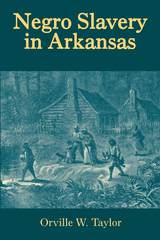 Negro Slavery in Arkansas
Orville Taylor
University of Arkansas Press, 2000 Long out of print and found only in rare-book stores, it is now available to a contemporary audience with this new paperback edition. When slavery was abolished by the Emancipation Proclamation, there were slaves in every county of the state, and almost half the population was directly involved in slavery as either a slave, a slaveowner, or a member of an owner’s family. Orville Taylor traces the growth of slavery from John Law’s colony in the early eighteenth century through the French and Spanish colonial period, territorial and statehood days, to the beginning of the Civil War. He describes the various facets of the institution, including the slave trade, work and overseers, health and medical treatment, food, clothing, housing, marriage, discipline, and free blacks and manumission. While drawing on unpublished material as appropriate, the book is, to a great extent, based on original, often previously unpublished, sources. Valuable to libraries, historians in several areas of concentration, and the general reader, it gives due recognition to the signficant place slavery occupied in the life and economy of antebellum Arkansas.
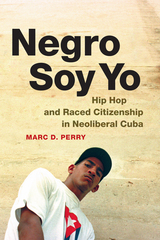 Negro Soy Yo: Hip Hop and Raced Citizenship in Neoliberal Cuba
Marc D. Perry
Duke University Press, 2016 In Negro Soy Yo Marc D. Perry explores Cuba’s hip hop movement as a window into the racial complexities of the island’s ongoing transition from revolutionary socialism toward free-market capitalism. Centering on the music and lives of black-identified raperos (rappers), Perry examines the ways these young artists craft notions of black Cuban identity and racial citizenship, along with calls for racial justice, at the fraught confluence of growing Afro-Cuban marginalization and long held perceptions of Cuba as a non-racial nation. Situating hip hop within a long history of Cuban racial politics, Perry discusses the artistic and cultural exchanges between raperos and North American rappers and activists, and their relationships with older Afro-Cuban intellectuals and African American political exiles. He also examines critiques of Cuban patriarchy by female raperos, the competing rise of reggaetón, as well as state efforts to incorporate hip hop into its cultural institutions. At this pivotal moment of Cuban-U.S. relations, Perry's analysis illuminates the evolving dynamics of race, agency, and neoliberal transformation amid a Cuba in historic flux.
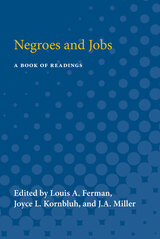 Negroes and Jobs: A Book of Readings
Edited by Louis A. Ferman, Joyce L. Kornbluh and J.A. Miller
University of Michigan Press, 1968 The development of Negro job opportunities is a vital first step toward the total integration of the Negro into American society. The civil rights movement and the War on Poverty have focused national attention on the Negro employment problem, but much remains to be done before a solution is reached.Negroes and Jobs gives a thorough, well-rounded account of the Negro worker's economic position in the contemporary labor market. It is a compendium of more than thirty articles, all written since 1960, dealing with various aspects of Negro employment.Many of the Negro's employment problems are common to all underprivileged American citizens, but certain aspects of the dilemma, such as the development of the urban ghettos and the persistence of racial discrimination, serve to separate and intensify the plight of the Negro worker. This book discusses the causes of Negro job disadvantagement, the nature of the Negro job market and the factors that affect it, the behavior of Negroes in the labor market, and past and future programs of action to increase the Negro's access to job opportunities.
The Neighbor
Michael Collier
University of Chicago Press, 1995 The Neighbor is a book of portraits and portraiture. Like the eccentric and mysteriously heroic citizens of E. A. Robinson's Tilbury Town, Collier's figures haunt a startlingly familiar neighborhood. In clear, rich language, Collier reveals the complexities that emerge from his characters' seemingly uneventful lives.
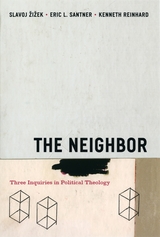 The Neighbor: Three Inquiries in Political Theology
Slavoj Žižek, Eric L. Santner, and Kenneth Reinhard
University of Chicago Press, 2005 In Civilization and Its Discontents, Freud made abundantly clear what he thought about the biblical injunction, first articulated in Leviticus 19:18 and then elaborated in Christian teachings, to love one's neighbor as oneself. "Let us adopt a naive attitude towards it," he proposed, "as though we were hearing it for the first time; we shall be unable then to suppress a feeling of surprise and bewilderment." After the horrors of World War II, the Holocaust, Stalinism, and Yugoslavia, Leviticus 19:18 seems even less conceivable—but all the more urgent now—than Freud imagined.
In The Neighbor, three of the most significant intellectuals working in psychoanalysis and critical theory collaborate to show how this problem of neighbor-love opens questions that are fundamental to ethical inquiry and that suggest a new theological configuration of political theory. Their three extended essays explore today's central historical problem: the persistence of the theological in the political. In "Towards a Political Theology of the Neighbor," Kenneth Reinhard supplements Carl Schmitt's political theology of the enemy and friend with a political theology of the neighbor based in psychoanalysis. In "Miracles Happen," Eric L. Santner extends the book's exploration of neighbor-love through a bracing reassessment of Benjamin and Rosenzweig. And in an impassioned plea for ethical violence, Slavoj Žižek's "Neighbors and Other Monsters" reconsiders the idea of excess to rehabilitate a positive sense of the inhuman and challenge the influence of Levinas on contemporary ethical thought.
A rich and suggestive account of the interplay between love and hate, self and other, personal and political, The Neighbor will prove to be a touchstone across the humanities and a crucial text for understanding the persistence of political theology in secular modernity.
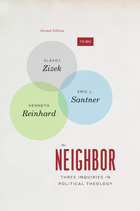 The Neighbor: Three Inquiries in Political Theology, with a new Preface
Slavoj Žižek, Eric L. Santner, and Kenneth Reinhard
University of Chicago Press, 2013 In Civilization and Its Discontents, Freud made abundantly clear what he thought about the biblical injunction, first articulated in Leviticus 19:18 and then elaborated in Christian teachings, to love one's neighbor as oneself. “Let us adopt a naive attitude towards it,” he proposed, “as though we were hearing it for the first time; we shall be unable then to suppress a feeling of surprise and bewilderment.” After the horrors of World War II, the Holocaust, and Stalinism, Leviticus 19:18 seems even less conceivable—but all the more urgent now—than Freud imagined.
In The Neighbor, three of the most significant intellectuals working in psychoanalysis and critical theory collaborate to show how this problem of neighbor-love opens questions that are fundamental to ethical inquiry and that suggest a new theological configuration of political theory. Their three extended essays explore today's central historical problem: the persistence of the theological in the political. In “Toward a Political Theology of the Neighbor,” Kenneth Reinhard supplements Carl Schmitt’s political theology of the enemy and friend with a political theology of the neighbor based in psychoanalysis. In “Miracles Happen,” Eric L. Santner extends the book's exploration of neighbor-love through a bracing reassessment of Benjamin and Rosenzweig. And in an impassioned plea for ethical violence, Slavoj Žižek’s “Neighbors and Other Monsters” reconsiders the idea of excess to rehabilitate a positive sense of the inhuman and challenge the influence of Levinas on contemporary ethical thought.
A rich and suggestive account of the interplay between love and hate, self and other, personal and political, The Neighbor has proven to be a touchstone across the humanities and a crucial text for understanding the persistence of political theology in secular modernity. This new edition contains a new preface by the authors.
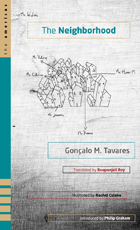 The Neighborhood
Gonçalo M. Tavares, translated by Roopanjali Roy; illustrated by Rachel Caiano; introduction by Philip Graham
Texas Tech University Press, 2012
Imagine you could create your own utopian writers' quarter—a close-knit community of those you admire or who have influenced you profoundly. For award-winning Portuguese author Gonçalo M. Tavares, six favorite senhores —“Misters” Calvino, Valéry, Juarroz, Kraus, Walser, and Henri—haunt the sidewalks, cafes, and back alleys of a fictive Lisbon bairro.
Readers will appreciate the homages to Italian fabulist Italo Calvino, French poet and critic Paul Valéry, Argentinean poet Roberto Juarroz, Swiss modernist Robert Walser, Austrian writer and satirist Karl Kraus, and Belgian neosurrealist Henri Michaux, but Tavares’s deceptively simple style appeals on many levels. In this imaginative territory, for instance, diminutive Mister Valéry jumps up and down—satisfied to be as tall as his fellow men if “only for a shorter while.” His more egocentric neighbor, Mister Henri, philosophizes about the virtues of absinthe, acknowledging the drink can make equally for a better or worse reality.
Enhancing each story are the drawings of Rachel Caiano, whose minimalist depictions mirror the essence of the personal, logical, and political absurdities that intrigue in these simple yet profound tales.
When we visit Tavares’s neighborhood, its building blocks made of books, we are also visiting a version of ourselves. —Philip Graham, from the foreword
Neighborhood and Nation in Tokyo, 1905–1937
Sally Ann Hastings
University of Pittsburgh Press, 1995 In this pre-World War II analysis of working-class areas of Tokyo, primarily its Honjo ward, Hastings shows that bureaucrats, particularly in the Home Ministry, were concerned with the needs of their citizens and took significant steps to protect the city's working families and the poor. She also demonstrates that the public participated broadly in politics, through organizations such as reservist groups, national youth leagues, neighborhood organizations, as well as growing suffrage and workplace organizations.
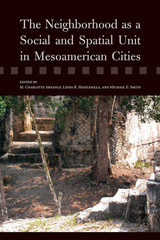 The Neighborhood as a Social and Spatial Unit in Mesoamerican Cities
Edited by M. Charlotte Arnauld, Linda R. Manzanilla, and Michael E. Smith
University of Arizona Press, 2012 Recent realizations that prehispanic cities in Mesoamerica were fundamentally different from western cities of the same period have led to increasing examination of the neighborhood as an intermediate unit at the heart of prehispanic urbanization. This book addresses the subject of neighborhoods in archaeology as analytical units between households and whole settlements.
The contributions gathered here provide fieldwork data to document the existence of sociopolitically distinct neighborhoods within ancient Mesoamerican settlements, building upon recent advances in multi-scale archaeological studies of these communities. Chapters illustrate the cultural variation across Mesoamerica, including data and interpretations on several different cities with a thematic focus on regional contrasts. This topic is relatively new and complex, and this book is a strong contribution for three interwoven reasons. First, the long history of research on the “Teotihuacan barrios” is scrutinized and withstands the test of new evidence and comparison with other Mesoamerican cities. Second, Maya studies of dense settlement patterns are now mature enough to provide substantial case studies. Third, theoretical investigation of ancient urbanization all over the world is now more complex and open than it was before, giving relevance to Mesoamerican perspectives on ancient and modern societies in time and space.
This volume will be of interest not only to scholars and student specialists of the Mesoamerican past but also to social scientists and urbanists looking to contrast ancient cultures worldwide.
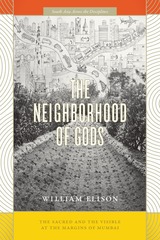 The Neighborhood of Gods: The Sacred and the Visible at the Margins of Mumbai
William Elison
University of Chicago Press, 2018 There are many holy cities in India, but Mumbai is not usually considered one of them. More popular images of the city capture the world’s collective imagination—as a Bollywood fantasia or a slumland dystopia. Yet for many, if not most, people who live in the city, the neighborhood streets are indeed shared with local gods and guardian spirits. In The Neighborhood of Gods, William Elison examines the link between territory and divinity in India’s most self-consciously modern city. In this densely settled environment, space is scarce, and anxiety about housing is pervasive. Consecrating space—first with impromptu displays and then, eventually, with full-blown temples and official recognition—is one way of staking a claim. But how can a marginalized community make its gods visible, and therefore powerful, in the eyes of others?
The Neighborhood of Gods explores this question, bringing an ethnographic lens to a range of visual and spatial practices: from the shrine construction that encroaches on downtown streets, to the “tribal art” practices of an indigenous group facing displacement, to the work of image production at two Bollywood film studios. A pioneering ethnography, this book offers a creative intervention in debates on postcolonial citizenship, urban geography, and visuality in the religions of India.
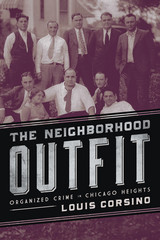 The Neighborhood Outfit: Organized Crime in Chicago Heights
Louis Corsino
University of Illinois Press, 2014 From the slot machine trust of the early 1900s to the prolific Prohibition era bootleggers allied with Al Capone, and for decades beyond, organized crime in Chicago Heights, Illinois, represented a vital component of the Chicago Outfit. Louis Corsino taps interviews, archives, government documents, and his own family's history to tell the story of the Chicago Heights "boys" and their place in the city's Italian American community in the twentieth century.
Debunking the popular idea of organized crime as a uniquely Italian enterprise, Corsino delves into the social and cultural forces that contributed to illicit activities. As he shows, discrimination blocked opportunities for Italians' social mobility and the close-knit Italian communities that arose in response to such limits produced a rich supply of social capital Italians used to pursue alternative routes to success that ranged from Italian grocery stores to union organizing to, on occasion, crime.
 Neighborhood Politics
Matthew A. Crenson
Harvard University Press, 1983 What makes an urban neighborhood tick? Why do some of a city’s poorest neighborhoods have cleaner streets and less vandalism than many of its more affluent areas? The public services that make certain neighborhoods stand out are often provided by the local residents themselves—but what makes them take action?
The setting for Matthew Crenson’s book is Baltimore. In this surprising, powerful work, he finds that such neighborhood action does not arise from a strong sense of neighborliness or community feeling. Instead, it is precisely when neighbors dislike one another that some features of informal self-organization emerge. Residents’ efforts to maintain public order, health, and safety frequently spring from social chaos and discord rather than from homogeneity. In fact, Crenson discovers that in many cases community polities arise not from the cohesiveness of close-knit “urban villages” but from the social diversity, inequality, and conflict that are associated with urbanism itself.
In an era when the inability of government institutions to solve the difficulties of city living is starkly apparent, understanding unofficial neighborhood government is critically important, and it can also clarify the foundations of political order itself. Crenson’s achievement is to redefine neighborhood problem-solving as the true “grass roots” urban politics, and in doing so he reveals why Baltimore is one of the few big cities that really work in America today.
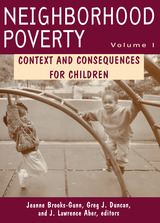 Neighborhood Poverty: Context and Consequences for Children
Jeanne Brooks-Gunn
Russell Sage Foundation, 1997 Perhaps the most alarming phenomenon in American cities has been the transformation of many neighborhoods into isolated ghettos where poverty is the norm and violent crime, drug use, out-of-wedlock births, and soaring school dropout rates are rampant. Public concern over these destitute areas has focused on their most vulnerable inhabitants—children and adolescents. How profoundly does neighborhood poverty endanger their well-being and development? Is the influence of neighborhood more powerful than that of the family? Neighborhood Poverty: Context and Consequences for Children approaches these questions with an insightful and wide-ranging investigation into the effect of community poverty on children's physical health, cognitive and verbal abilities, educational attainment, and social adjustment. This two-volume set offers the most current research and analysis from experts in the fields of child development, social psychology, sociology and economics. Drawing from national and city-based sources, Volume I reports the empirical evidence concerning the relationship between children and community. As the essays demonstrate, poverty entails a host of problems that affects the quality of educational, recreational, and child care services. Poor neighborhoods usually share other negative features—particularly racial segregation and a preponderance of single mother families—that may adversely affect children. Yet children are not equally susceptible to the pitfalls of deprived communities. Neighborhood has different effects depending on a child's age, race, and gender, while parenting techniques and a family's degree of community involvement also serve as mitigating factors. Volume II incorporates empirical data on neighborhood poverty into discussions of policy and program development. The contributors point to promising community initiatives and suggest methods to strengthen neighborhood-based service programs for children. Several essays analyze the conceptual and methodological issues surrounding the measurement of neighborhood characteristics. These essays focus on the need to expand scientific insight into urban poverty by drawing on broader pools of ethnographic, epidemiological, and quantitative data. Volume II explores the possibilities for a richer and more well-rounded understanding of neighborhood and poverty issues. To grasp the human cost of poverty, we must clearly understand how living in distressed neighborhoods impairs children's ability to function at every level. Neighborhood Poverty explores the multiple and complex paths between community, family, and childhood development. These two volumes provide and indispensible guide for social policy and demonstrate the power of interdisciplinary social science to probe complex social issues.
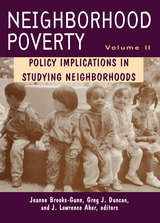 Neighborhood Poverty: Policy Implications in Studying Neighborhoods
Jeanne Brooks-Gunn
Russell Sage Foundation, 1997 Perhaps the most alarming phenomenon in American cities has been the transformation of many neighborhoods into isolated ghettos where poverty is the norm and violent crime, drug use, out-of-wedlock births, and soaring school dropout rates are rampant. Public concern over these destitute areas has focused on their most vulnerable inhabitants—children and adolescents. How profoundly does neighborhood poverty endanger their well-being and development? Is the influence of neighborhood more powerful than that of the family? Neighborhood Poverty approaches these questions with an insightful and wide-ranging investigation into the effect of community poverty on children's physical health, cognitive and verbal abilities, educational attainment, and social adjustment. This two-volume set offers the most current research and analysis from experts in the fields of child development, social psychology, sociology and economics. Drawing from national and city-based sources, Volume I reports the empirical evidence concerning the relationship between children and community. As the essays demonstrate, poverty entails a host of problems that affects the quality of educational, recreational, and child care services.Poor neighborhoods usually share other negative features—particularly racial segregation and a preponderance of single mother families—that may adversely affect children. Yet children are not equally susceptible to the pitfalls of deprived communities. Neighborhood has different effects depending on a child's age, race, and gender, while parenting techniques and a family's degree of community involvement also serve as mitigating factors. Volume II incorporates empirical data on neighborhood poverty into discussions of policy and program development. The contributors point to promising community initiatives and suggest methods to strengthen neighborhood-based service programs for children. Several essays analyze the conceptual and methodological issues surrounding the measurement of neighborhood characteristics. These essays focus on the need to expand scientific insight into urban poverty by drawing on broader pools of ethnographic, epidemiological, and quantitative data. Volume II explores the possibilities for a richer and more well-rounded understanding of neighborhood and poverty issues. To grasp the human cost of poverty, we must clearly understand how living in distressed neighborhoods impairs children's ability to function at every level. Neighborhood Poverty explores the multiple and complex paths between community, family, and childhood development. These two volumes provide and indispensable guide for social policy and demonstrate the power of interdisciplinary social science to probe complex social issues.
 Neighborhood Recovery: Reinvestment Policy for the New Hometown
Kromer, John
Rutgers University Press, 1999 How can we help distressed neighborhoods recover from a generation of economic loss and reposition themselves for success in today's economy? While many have proposed solutions to the problems of neighborhoods suffering from economic disinvestment, John Kromer has actually put them to work successfully as Philadelphia’s housing director. Part war story, part how-to manual, and part advocacy for more effective public policy, Neighborhood Recovery describes how a blending of public-sector leadership and community initiative can bring success to urban communities. Kromer’s framework for neighborhood recovery addresses issues such as · neighborhood strategic planning · home ownership and financing · the role of community-based organizations · public housing · work-readiness and job training for neighborhood residents · housing for homeless people and others with specialized needs · the importance of advocacy in influencing and advancing neighborhood reinvestment policy. Neighborhood Recovery presents a policy approach that cities can use to improve the physical condition of their neighborhoods and help urban residents compete for good jobs in the metropolitan economy. Kromer’s experience in Philadelphia reveals challenges and opportunities that can decisively influence the future of neighborhoods in many other American cities.
 The Neighborhood: Space, State, and Daily Life in a Manchurian City
Nianshen Song
University of Chicago Press, 2025 This masterful blend of history and urban storytelling brings to life the people and politics that shaped a single neighborhood in a Manchurian city across several centuries.
What can one neighborhood reveal about the making of a modern nation? The Neighborhood deciphers the unexpected significance of Xita, a half-square-mile quarter in Shenyang, in Northeast China. As the historian Nianshen Song shows, over nearly four centuries, Xita has been shaped and reshaped by empire, war, migration, and urban transformation. Remarkably, the history of this small area mirrors large-scale changes, including and especially China’s metamorphosis from a multiethnic Eurasian empire to a postindustrial society.
Song begins with Xita’s origins as a Qing-era Tibetan Buddhist center, following the lives of Mongol lamas and their imperial patrons. He tracks the neighborhood through the tumultuous twentieth century, when competing Russian and Japanese railway empires fueled its industrial growth, and Japanese colonizers turned it into a showcase for their imperial ambitions. Later, Xita became a vital enclave for Korea’s diaspora before emerging in the post-Mao era as a neon-lit hub of commerce and entertainment.
A thoroughly researched microhistory, The Neighborhood reveals how global forces play out in everyday spaces. By studying the emperors, warlords, merchants, laborers, and migrants who shaped Xita, Song presents a captivating and original perspective for understanding China’s past—not from the top down, but through the streets and people who lived it.
 Neighborhood Technologies: Media and Mathematics of Dynamic Networks
Edited by Tobias Harks and Sebastian Vehlken
Diaphanes, 2015 Neighborhood Technologies expands upon sociologist Thomas Schelling’s well-known study of segregation in major American cities, using this classic work as the basis for a new way of researching social networks across many different disciplines. Up to now, research has focused on macro-level behaviors that, together, form rigid systems of neighborhood relations. But can neighborhoods conversely affect larger, global dynamics? What relationships can be found between micro- and macro- perspectives?
To answer these and related questions, this volume introduces the concept of “neighborhood technologies” as a model for intermediate, or meso-level, research into the links between local agents and neighborhood relations. Bridging the gap between the sciences and humanities, Tobias Harks and Sebastian Vehlken have assembled a group of contributors who are either natural scientists with an interest in interdisciplinary research or technology-savvy humanists. With insights into computer science, mathematics, sociology, media and cultural studies, theater studies, and architecture, the book will inform new research.
 A Neighborhood That Never Changes: Gentrification, Social Preservation, and the Search for Authenticity
Japonica Brown-Saracino
University of Chicago Press, 2009 Newcomers to older neighborhoods are usually perceived as destructive, tearing down everything that made the place special and attractive. But as A Neighborhood That Never Changes demonstrates, many gentrifiers seek to preserve the authentic local flavor of their new homes, rather than ruthlessly remake them. Drawing on ethnographic research in four distinct communities—the Chicago neighborhoods of Andersonville and Argyle and the New England towns of Provincetown and Dresden—Japonica Brown-Saracino paints a colorful portrait of how residents new and old, from wealthy gay homeowners to Portuguese fishermen, think about gentrification. The new breed of gentrifiers, Brown-Saracino finds, exhibits an acute self-consciousness about their role in the process and works to minimize gentrification’s risks for certain longtime residents. In an era of rapid change, they cherish the unique and fragile, whether a dilapidated house, a two-hundred-year-old landscape, or the presence of people deeply rooted in the place they live. Contesting many long-standing assumptions about gentrification, Brown-Saracino’s absorbing study reveals the unexpected ways beliefs about authenticity, place, and change play out in the social, political, and economic lives of very different neighborhoods.
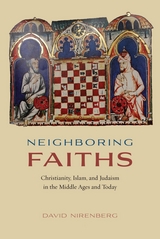 Neighboring Faiths: Christianity, Islam, and Judaism in the Middle Ages and Today
David Nirenberg
University of Chicago Press, 2014 Christianity, Judaism, and Islam are usually treated as autonomous religions, but in fact across the long course of their histories the three religions have developed in interaction with one another. In Neighboring Faiths, David Nirenberg examines how Muslims, Christians, and Jews lived with and thought about each other during the Middle Ages and what the medieval past can tell us about how they do so today.
There have been countless scripture-based studies of the three “religions of the book,” but Nirenberg goes beyond those to pay close attention to how the three religious neighbors loved, tolerated, massacred, and expelled each other—all in the name of God—in periods and places both long ago and far away. Nirenberg argues that the three religions need to be studied in terms of how each affected the development of the others over time, their proximity of religious and philosophical thought as well as their overlapping geographies, and how the three “neighbors” define—and continue to define—themselves and their place in terms of one another. From dangerous attractions leading to interfaith marriage; to interreligious conflicts leading to segregation, violence, and sometimes extermination; to strategies for bridging the interfaith gap through language, vocabulary, and poetry, Nirenberg aims to understand the intertwined past of the three faiths as a way for their heirs to produce the future—together.
 Neighboring on the Air: Cooking KMA Radio Homemakers
Evelyn Birkby
University of Iowa Press, 1991 In 1925 Earl May began broadcasting KMA Radio-960 from Shenandoah, Iowa, to boost his fledgling seed business. The station aired practical information designed to help with the day-to-day activity in midwestern farmhouse kitchens. Before long KMA was a trusted friend throughout the wide listening area, offering inspiration, companionship, and all manners of domestic counsel. Hosting the daily radio programs—Home Hour, the Stitch and Chat Club, and the KMA Party Line—and the live cooking demonstrations that drew thousands to the KMA auditorium was a changing roster of personable, lively women who quickly became known as the KMA Radio Homemakers. Now, in Neighboring on the Air, we can hear the voices of the KMA homemakers and sample their philosophy and—best of all—cooking. Through recipes, biographies, and household advice we get to know such enduring women as "The Little Minister," the Reverend Edythe Stirlen, and Leanna Driftmier and the whole Kitchen-Klatter family, part of the longest-running homemaker program in the history of radio. Learn how to make Sour Cream Apple Pie from "The Farmer's Wife," Florence Falk; Varnished Chicken from the first long-term KMA Radio Homemaker, Jessie Young; and E.E.E. Missouri Dessert (nobody can remember what the "E.E.E." stands for) from the indomitable host of the Edith Hansen Kitchen Club. This endearing scrapbook of people, places, and foods charts the continuing adventure of the KMA homemakers as they broadcast into the 1990s. Neighboring on the Air is an enchanting piece of Americana. Anyone interested in cooking, cultural history, or the Midwest will want to own and use this book.
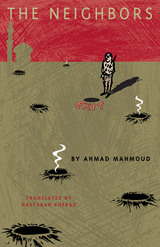 The Neighbors
By Ahmad Mahmoud
University of Texas Press, 2013 Ahmad Mahmoud sets The Neighbors against the backdrop of the oil nationalization crisis that gripped Iran in the early 1950s. His protagonist, Khaled, a young man from a rundown neighborhood in Ahvaz, a city in southern Iran, becomes involved in the struggle to wrest Iran’s oil industry from the British and, as the result of his political activities, comes to realize that there is more to life than the drudgery and poverty his parents and neighbors have experienced. The Neighbors, published in 1974, cemented Mahmoud’s reputation as a novelist and captured the ethos of a generation—the generation that laid the groundwork for those who continue to struggle for democracy in Iran today. Though the novel received considerable praise and was read widely, its political nature earned the ire of Mohammad Reza Shah’s regime, and the Islamic Republic has objected to its sexually explicit content. This is the first time one of Ahmad Mahmoud’s novels has appeared in English translation.
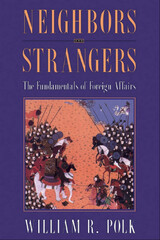 Neighbors and Strangers: The Fundamentals of Foreign Affairs
William R. Polk
University of Chicago Press, 1997 How important are foreign affairs in the grand scheme of civilization? Do defenses against the invasion of strangers influence the evolution of culture? Drawing on decades of experience in government as well as in the academy, William R. Polk offers a uniquely informed, comprehensive view of foreign relations. Bridging academic disciplines he treats foreign affairs as they occur in the real world. Instead of separating diplomacy, intelligence and espionage, defense and warfare, trade and aid, intervention and law from one another, he shows how they interact and together form a whole pattern with which we must deal if we are to move safely into the 21st century. But Neighbors and Strangers is not just a guide to the future; Polk draws upon all recorded history, and indeed upon studies of animal and primitive social behavior, and from the entire world for vivid examples to illuminate for the general reader the underlying principles and consistencies that characterize relations with foreigners.
Indeed, going deeper into the human experience, Polk documents "fear of the foreigner" as a visceral response so deep-seated and so pervasive that it transcends human memory, individual experience and even logical analysis. More generally, he shows that the tension created by having to live as neighbors with those who, in the definition of contemporaries, were irredeemably alien has been one of the major causes of the rise of civilizations.
Accessible and engaging, Neighbors and Strangers is a revelatory look at how foreign affairs are a profound reflection of human nature.
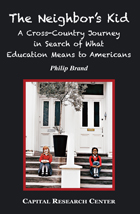 The Neighbor's Kid: A Cross-Country Journey in Search of What Education Means to Americans
Philip Brand
American Philanthropic, 2010
The Neighbor’s Kid tells the story of what twenty-four year-old Philip Brand discovered regarding American education when he drove his car cross-country during the 2008-09 school year visiting two schools in each of forty-nine states. The schools were public and private, religious and secular, urban and rural, typical and unusual. Brand wanted to learn first-hand what students, parents, teachers, and principals think about their elementary and secondary schools and what they expect from education. His principal discovery: When it comes to picking a school parents care most about the kids with whom their own children associate. Not the curriculum, not the teachers, but the other kids. That concern has important consequences for how school districts, states and the federal government set education policy. A second conclusion: Government policymakers cannot set standards of educational “achievement” because true education is intimately tied to the cultural and civic experiences of families and communities.
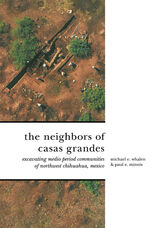 The Neighbors of Casas Grandes: Medio Period Communities of Northwestern Chihuahua
Michael E. Whalen and Paul E. Minnis
University of Arizona Press, 2009 Casas Grandes, or Paquimé, in northwestern Mexico was of one of the few socially complex prehistoric civilizations in North America. Now, based on more than a decade of surveys, excavations, and field work, Michael Whalen and Paul Minnis provide a comprehensive new look at Casas Grandes and its surrounding communities in The Neighbors of Casas Grandes.
This volume provides a fascinating and detailed look into the culture of the Casas Grandes area, involving not just the research of the architecture and artifacts left behind but also the ecology of the area. The authors’ research reveals the complex relationship Casas Grandes had with its neighbors, varying from very direct contact with some communities to more indirect links with others. Important internal influences on the area’s development come to light and population sizes throughout the period demonstrate the absorption of the surrounding populations into Casas Grandes as it reached the peak of its power in the region.
New discoveries suggest the need to revise the previously held beliefs about the age of Casas Grandes and the dates of its rise to power. This ancient civilization may have developed as early as 1180 AD. Such breakthroughs provide fresh insight about not only Casas Grandes but the nearby settlements as well. The Neighbors of Casas Grandes is an important and vital piece of primary field research for all those interested in the Southwest’s archaelogy and history. Its contribution to the knowledge of the Casas Grandes region is monumental in helping us better understand the society that once flourished there.
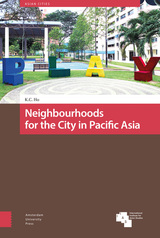 Neighbourhoods for the City in Pacific Asia
Kong Chong Ho
Amsterdam University Press, 2020 The largest cities in Pacific Asia are the engines of their countries’ economic growth, seats of national and regional political power, and repositories of the nation’s culture and heritage. The economic changes impacting large cities interact with political forces along with social cultural concerns, and in the process also impact the neighbourhoods of the city. Neighbourhoods for the City in Pacific Asia looks at local collective action and city government responses and its impact on the neighbourhood and the city. A multi-sited comparative approach is taken in studying local action in five important cities (Bangkok, Hong Kong, Seoul, Singapore and Taipei) in Pacific Asia. With site selection in these five cities guided by local experts, neighbourhood issues associated with the fieldsites are explored through interviews with a variety of stakeholders involved in neighourhood building and change. The book enables comparisons across a number of key issues confronting the city: heritage (Bangkok and Taipei), local community involved provisioning of amenities (Seoul and Singapore), placemaking versus place marketing (Bangkok and Hong Kong). Cities are becoming increasingly important as centers for politics, citizen engagement and governance. The collaborative efforts city governments establish with local communities become an important way to address the liveability of cities.
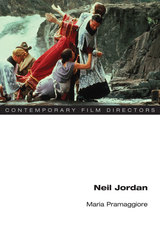 Neil Jordan
Maria T. Pramaggiore
University of Illinois Press, 2007 Best known for his enormously successful independent film The Crying Game, Irish director Neil Jordan has made sixteen feature films since 1982. Even after achieving commercial success and critical acclaim with such films as Interview with the Vampire and The Butcher Boy, Jordan remains a curiously elusive figure in the era of the celebrity filmmaker. Maria Pramaggiore addresses this conundrum by examining Jordan's distinctive style across a surprisingly broad range of genres and production contexts, including horror and gangster films, Irish-themed movies, and Hollywood remakes.
Despite the striking diversity of Jordan's films, the director consistently returns to gothic themes of loss, violence, and madness. In her sophisticated examination of Mona Lisa,Michael Collins, and The Good Thief, Pramaggiore shows how Jordan presents these dark narratives with a uniquely Irish and postmodern sense of irony. This illuminating analysis of one of the cinema's most important artists will be of keen interest to movie enthusiasts as well as students and scholars of contemporary film.
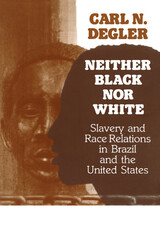 Neither Black Nor White: Slavery and Race Relations in Brazil and the United States
Carl Degler
University of Wisconsin Press, 1986 Carl Degler’s 1971 Pulitzer-Prize-winning study of comparative slavery in Brazil and the United States is reissued in the Wisconsin paperback edition, making it accessible for all students of American and Latin American history and sociology.
Until Degler’s groundbreaking work, scholars were puzzled by the differing courses of slavery and race relations in the two countries. Brazil never developed a system of rigid segregation, such as appeared in the United States, and blacks in Brazil were able to gain economically and retain far more of their African culture. Rejecting the theory of Giberto Freyre and Frank Tannenbaum—that Brazilian slavery was more humane—Degler instead points to a combination of demographic, economic, and cultural factors as the real reason for the differences.
“In the early 1970s when studies in social history were beginning to blossom on the North American scene, Carl Degler’s prize-winning contribution was a thoughtful provocative essay in comparative history. Its thoughtfulness has not diminished with the years. Indeed, it is as topical today as when it was first published. The Brazilian experience with rapid industrialization and its attempt to restore democratic government indicates that the issues which Degler treated in the early 1970s are more pertinent than ever today.”—Franklin W. Knight, Department of History, Johns Hopkins University.
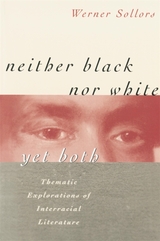 Neither Black nor White yet Both: Thematic Explorations of Interracial Literature
Werner Sollors
Harvard University Press, 1997 Why can a “white” woman give birth to a “black” baby, while a “black” woman can never give birth to a “white” baby in the United States? What makes racial “passing” so different from social mobility? Why are interracial and incestuous relations often confused or conflated in literature, making “miscegenation” appear as if it were incest? Werner Sollors examines these questions and others in Neither Black nor White yet Both, a fully researched investigation of literary works that, in the past, have been read more for a black–white contrast of “either–or” than for an interracial realm of “neither, nor, both, and in-between.”
From the origins of the term “race” to the cultural sources of the “Tragic Mulatto,” and from the calculus of color to the retellings of various plots, Sollors examines what we know about race, analyzing recurrent motifs in scientific and legal works as well as in fiction, drama, and poetry.
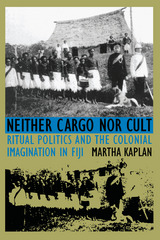 Neither Cargo nor Cult: Ritual Politics and the Colonial Imagination in Fiji
Martha Kaplan
Duke University Press, 1995 In the 1880s an oracle priest, Navosavakadua, mobilized Fijians of the hinterlands against the encroachment of both Fijian chiefs and British colonizers. British officials called the movement the Tuka cult, imagining it as a contagious superstition that had to be stopped. Navosavakadua and many of his followers, deemed "dangerous and disaffected natives," were exiled. Scholars have since made Tuka the standard example of the Pacific cargo cult, describing it as a millenarian movement in which dispossessed islanders sought Western goods by magical means. In this study of colonial and postcolonial Fiji, Martha Kaplan examines the effects of narratives made real and traces a complex history that began neither as a search for cargo, nor as a cult.
Engaging Fijian oral history and texts as well as colonial records, Kaplan resituates Tuka in the flow of indigenous Fijian history-making and rereads the archives for an ethnography of British colonizing power. Proposing neither unchanging indigenous culture nor the inevitable hegemony of colonial power, she describes the dialogic relationship between plural, contesting, and changing articulations of both Fijian and colonial culture.
A remarkable enthnographic account of power and meaning, Neither Cargo nor Cult addresses compelling questions within anthropological theory. It will attract a wide audience among those interested in colonial and postcolonial societies, ritual and religious movements, hegemony and resistance, and the Pacific Islands.
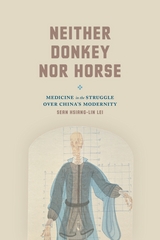 Neither Donkey nor Horse: Medicine in the Struggle over China's Modernity
Sean Hsiang-lin Lei
University of Chicago Press, 2014 Neither Donkey nor Horse tells the story of how Chinese medicine was transformed from the antithesis of modernity in the early twentieth century into a potent symbol of and vehicle for China’s exploration of its own modernity half a century later. Instead of viewing this transition as derivative of the political history of modern China, Sean Hsiang-lin Lei argues that China’s medical history had a life of its own, one that at times directly influenced the ideological struggle over the meaning of China’s modernity and the Chinese state.
Far from being a remnant of China’s premodern past, Chinese medicine in the twentieth century coevolved with Western medicine and the Nationalist state, undergoing a profound transformation—institutionally, epistemologically, and materially—that resulted in the creation of a modern Chinese medicine. This new medicine was derided as “neither donkey nor horse” because it necessarily betrayed both of the parental traditions and therefore was doomed to fail. Yet this hybrid medicine survived, through self-innovation and negotiation, thus challenging the conception of modernity that rejected the possibility of productive crossbreeding between the modern and the traditional.
By exploring the production of modern Chinese medicine and China’s modernity in tandem, Lei offers both a political history of medicine and a medical history of the Chinese state.
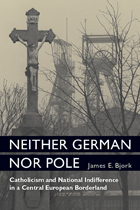 Neither German nor Pole: Catholicism and National Indifference in a Central European Borderland
James E. Bjork
University of Michigan Press, 2009 "This is a fascinating local story with major implications for studies of nationalism and regional identities throughout Europe more generally."
---Dennis Sweeney, University of Alberta "James Bjork has produced a finely crafted, insightful, indeed, pathbreaking study of the interplay between religious and national identity in late nineteenth-century Central Europe."
---Anthony Steinhoff, University of Tennessee at Chattanooga Neither German nor Pole examines how the inhabitants of one of Europe's most densely populated industrial districts managed to defy clear-cut national categorization, even in the heyday of nationalizing pressures at the turn of the twentieth century. As James E. Bjork argues, the "civic national" project of turning inhabitants of Upper Silesia into Germans and the "ethnic national" project of awakening them as Poles both enjoyed successes, but these often canceled one another out, exacerbating rather than eliminating doubts about people's national allegiances. In this deadlock, it was a different kind of identification---religion---that provided both the ideological framework and the social space for Upper Silesia to navigate between German and Polish orientations. A fine-grained, microhistorical study of how confessional politics and the daily rhythms of bilingual Roman Catholic religious practice subverted national identification, Neither German nor Pole moves beyond local history to address broad questions about the relationship between nationalism, religion, and modernity.
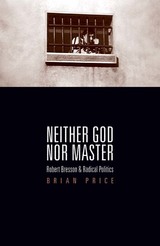 Neither God nor Master: Robert Bresson and Radical Politics
Brian Price
University of Minnesota Press, 2010 The French auteur Robert Bresson, director of such classics as Diary of a Country Priest (1951), The Trial of Joan of Arc (1962), The Devil, Probably (1977), and L’Argent (1983), has long been thought of as a transcendental filmmaker preoccupied with questions of grace and predestination and little interested in the problems of the social world. This book is the first to view Bresson’s work in an altogether different context. Rather than a religious—or spiritual—filmmaker, Bresson is revealed as an artist steeped in radical, revolutionary politics.
Situating Bresson in radical and aesthetic political contexts, from surrealism to situationism, Neither God nor Master shows how his early style was a model for social resistance. We then see how, after May 1968, his films were in fact a series of reflections on the failure of revolution in France—especially as “failure” is understood in relation to Bresson’s chosen literary precursors, Dostoyevsky and Tolstoy, and Russian revolutionary culture of the nineteenth century.
Restoring Bresson to the radical political culture from which he emerged—and to which he remained faithful—Price offers a major revision of the reputation of one of the most celebrated figures in the history of French film. In doing so, he raises larger philosophical questions about the efficacy of revolutionary practices and questions about interpretation and metaphysical tendencies of film historical research that have, until now, gone largely untested.
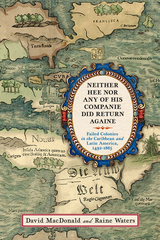 Neither Hee Nor Any of His Companie Did Return Againe: Failed Colonies in the Caribbean and Latin America, 1492–1865
David MacDonald
Westholme Publishing, 2023 During the sixteenth and seventeenth centuries European powers vied for control of the land and resources in the Caribbean and Latin America. Colonies made Spain rich through gold, silver, and gems looted from the Native cultures, along with rare and exotic goods such as tobacco, sugar, and dyewood, and even humble products such as hides. In rapid turn, other European monarchies and merchants sent out colonizing expeditions to the region to exploit the resources of the New World, but creating permanent footholds was perilous. All European settlements founded in the New World faced a variety of challenges, including food supply, inconsistent support from Europe, leadership, ignorance of the area colonized, irrational expectations, religious discord, relations with Native peoples, and violent national rivalries. Colonies that succeeded and those that failed faced the same challenges, although in differing degrees and circumstances. The margin between survival and disaster was always small—there were few chances to succeed and the risk of failure was never far away.
In Neither Hee Nor Any of His Companie Did Return Againe: Failed Colonies in the Caribbean and Latin America, 1492–1865, historians David MacDonald and Raine Waters examine the European, and later American, failures to establish permanent settlements in the region. Beginning with Columbus’s ill-conceived ventures, the authors discuss the efforts, from German claims in Venezuela and Scottish attempts in Panama to defeated Confederates fleeing to Mexico, Brazil, and elsewhere. For each colony, the primary source information is contextualized and evaluated. Along the way, the authors determine commonalities across these ill-fated colonies as well as underscore the fact that while Indigenous peoples of the region often vigorously resisted predatory European colonization, their numbers were decimated by relentless warfare, slave raids, and European diseases. As Indian populations declined, colonists imported African slaves in large numbers. The brutal treatment of slaves resulted in those who escaped creating their own settlements that existed in a state of endemic warfare with European colonists. An important contribution to Atlantic World studies, this volume reveals the fine line between colonies that thrived and those that failed.
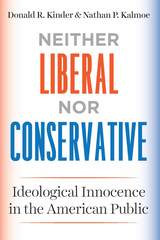 Neither Liberal nor Conservative: Ideological Innocence in the American Public
Donald R. Kinder and Nathan P. Kalmoe
University of Chicago Press, 2017 Congress is crippled by ideological conflict. The political parties are more polarized today than at any time since the Civil War. Americans disagree, fiercely, about just about everything, from terrorism and national security, to taxes and government spending, to immigration and gay marriage.
Well, American elites disagree fiercely. But average Americans do not. This, at least, was the position staked out by Philip Converse in his famous essay on belief systems, which drew on surveys carried out during the Eisenhower Era to conclude that most Americans were innocent of ideology. In Neither Liberal nor Conservative, Donald Kinder and
Nathan Kalmoe argue that ideological innocence applies nearly as well to the current state of American public opinion. Real liberals and real conservatives are found in impressive numbers only among those who are deeply engaged in political life. The ideological battles between American political elites show up as scattered skirmishes in the general public, if they show up at all.
If ideology is out of reach for all but a few who are deeply and seriously engaged in political life, how do Americans decide whom to elect president; whether affirmative action is good or bad? Kinder and Kalmoe offer a persuasive group-centered answer. Political preferences arise less from ideological differences than from the attachments and antagonisms of group life.
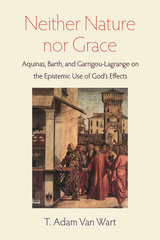 Neither Nature nor Grace: Aquinas, Barth, and Garrigou-Lagrance on the Epistemic Use of God's Effects
T. Adam Van Wart
Catholic University of America Press, 2021 Neither Nature nor Grace operates at the intersection of systematic and philosophical theology, exploring in particular how St. Thomas Aquinas variously uses the latter in service to the clarification and faithful advancement of the former. More specifically, Neither Nature nor Grace explores the overlooked logical difficulties that have followed the late modern debates in ecumenical Christian theology as to whether knowledge of God is available solely through God’s gracious self-revelation (e.g., Jesus Christ and Holy Scripture), or through revelation and the deliverances of natural reason. Van Wart takes the prominent French Dominican Reginald Garrigou-Lagrange as paradigmatic for the case that knowledge of God can be had by both revelation and natural reason. Representing the opposing position, that God can only be known through divine revelation, Van Wart highlights the work of influential Protestant theologian Karl Barth. By placing these two imposing 20th century theologians in conversation, and by providing a careful theo-philosophical analysis of the logical mechanics of each thinker’s respective arguments, Van Wart shows how both inadvertently overreach their self-professed epistemological bounds and just so run into significant problems maintaining the coherence of their relative theological positions. That is, against their expressed intentions to the contrary, both thinkers unwittingly evacuate the divine essence of the mystery Christian tradition has always previously claimed it to have, effectively reducing the being of God to mere creaturely being writ large. As a contrasting corrective to this problem, Van Wart proffers a constructive grammatical reading of Aquinas’s measured account of the crucial but often overlooked logical differences between what can be said of the divine, on the one hand, versus what can be known of God, on the other. While many recent works have attempted to solve the ongoing arguments which Garrigou-Lagrange and Barth epitomize regarding the epistemic use of God’s effects, Van Wart’s contribution constructively pushes the conversation to a different level in showing how Aquinas’s grammar of God provides a salutary means of dissolving and moving beyond these contentious debates altogether.
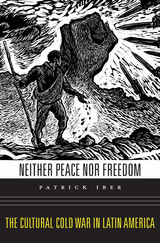 Neither Peace nor Freedom: The Cultural Cold War in Latin America
Patrick Iber
Harvard University Press, 2015 During the Cold War, left-wing Latin American artists, writers, and scholars worked as diplomats, advised rulers, opposed dictators, and even led nations. Their competing visions of social democracy and their pursuit of justice, peace, and freedom led them to organizations sponsored by the governments of the Cold War powers: the Soviet-backed World Peace Council, the U.S.-supported Congress for Cultural Freedom, and, after the 1959 Cuban Revolution, the homegrown Casa de las Américas.
Neither Peace nor Freedom delves into the entwined histories of these organizations and the aspirations and dilemmas of intellectuals who participated in them, from Diego Rivera and Pablo Neruda to Gabriel García Márquez and Jorge Luis Borges. Patrick Iber corrects the view that such individuals were merely pawns of the competing superpowers. Movements for democracy and social justice sprung up among pro-Communist and anti-Communist factions, and Casa de las Américas promoted a brand of revolutionary nationalism that was beholden to neither the Soviet Union nor the United States.
But ultimately, intellectuals from Latin America could not break free from the Cold War’s rigid binaries. With the Soviet Union demanding fealty from Latin American communists, the United States zealously supporting their repression, and Fidel Castro pushing for regional armed revolution, advocates of social democracy found little room to promote their ideals without compromising them. Cold War politics had offered utopian dreams, but intellectuals could get neither the peace nor the freedom they sought.
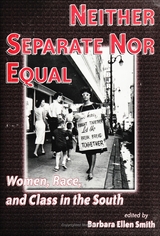 Neither Separate Nor Equal
edited by Barbara Ellen Smith
Temple University Press, 1999 When she began work on this collection, Barbara Ellen Smith was asked, "Why work on a book about women in the South? Nobody writes books about women in the Midwest." In an era of intensified globalization, when populations, cultures, and capital move across the boundaries of nation-states in multiple forms and directions, the concept of a subnational region seems parochial and out of date. "But," Smith argues, "it is precisely because of the historical construction of the secessionist South as an embattled region when all manners of social problems tend to be blamed on poor women and children and those whose skin is anything but white, that the experiences of racially diverse women in a region legendary for both white supremacy and male supremacy are important to explore."
Collecting in one volume the work of such well-known scholars on Appalachia and the South as Carl Stack, Mab Segrest, and Sally Maggard, among others, Neither Separate Nor Equal analyzes the complex and dramatic developments in the lives of contemporary Southern women. Case studies vividly portray women's diverse circumstances activities: from rural African American women in the Mississippi Delta taking on new roles as community builders to female textile workers in North Carolina contending with automation and reorganization of the mills.
Focusing on the South's historical legacies as they are manifested and contested in the lives of women today, including the tensions between long-lasting patterns of regional distinctiveness and the disruptions of globalizations, this collection approaches differences of race and class not as forms of separation among women, but as social -- be they often contentious, difficult, or exploitive -- relationships. Unifying around a theme of relationally, Neither Separate Nor Equal offers searching empirical studies of Southern women and a conceptual model for feminist scholarship as a whole.
 Neither Separate Nor Equal: Congress in the 1790s
Kenneth R. Bowling
Ohio University Press, 2000 Scholars today take for granted the existence of a “wall of separation” dividing the three branches of the federal government. Neither Separate nor Equal: Congress in the 1790s demonstrates that such lines of separation among the legislative, executive, and judicial branches, however, were neither so clearly delineated nor observed in the first decade of the federal government's history.
The first two essays describe the social and cultural milieu attending the movement of the republican court from New York to Philadelphia and the physical and social environment of Philadelphia in the 1790s. The following section examines the congressional career of New York's Egbert Benson, the senatorial career of Robert Morris as an expression of his economic interests, the vigorous opposition of Rep. William Branch Giles to the Federalist policies of the Washington administration, and finally the underappreciated role of congressional spouses.
The last five essays concentrate on areas of interbranch cooperation and conflict. In particular, they discuss the meaning of separation of powers in the 1790s, Washington as an active president with Congress, the contrast between Hamilton's and Jefferson's exercise of political influence with Congress, and John Adams's relationship with Congress during the Quasi-War crisis.
The essays in this collection, the second volume of the series Perspectives on the History of Congress, 1789-1801, originated in two conferences held in 1995 and 1996 by the United States Capitol Historical Society.
 Neither Settler nor Native: The Making and Unmaking of Permanent Minorities
Mahmood Mamdani
Harvard University Press, 2020 Prospect Top 50 Thinker of 2021
British Academy Book Prize Finalist
PROSE Award Finalist
“Provocative, elegantly written.”
—Fara Dabhoiwala, New York Review of Books
“Demonstrates how a broad rethinking of political issues becomes possible when Western ideals and practices are examined from the vantage point of Asia and Africa.”
—Pankaj Mishra, New York Review of Books
In case after case around the globe—from Israel to Sudan—the colonial state and the nation-state have been constructed through the politicization of a religious or ethnic majority at the expense of an equally manufactured minority. The model emerged in America, where genocide and internment on reservations created a permanent native minority. In Europe, this template would be used both by the Nazis and the Allies.
Neither Settler nor Native offers a vision for arresting this process. Mahmood Mamdani points to inherent limitations in the legal solution attempted at Nuremberg. Political violence demands political solutions: not criminal justice but a rethinking of the political community to include victims and perpetrators, bystanders and beneficiaries. Making the radical argument that the nation-state was born of colonialism, he calls on us to delink the nation from the state so as to ensure equal political rights for all who live within its boundaries.
“A deeply learned account of the origins of our modern world…Mamdani rejects the current focus on human rights as the means to bring justice to the victims of this colonial and postcolonial bloodshed. Instead, he calls for a new kind of political imagination…Joining the ranks of Hannah Arendt’s Imperialism, Frantz Fanon’s The Wretched of the Earth, and Edward Said’s Orientalism, this book is destined to become a classic text of postcolonial studies and political theory.”
—Moustafa Bayoumi, author of How Does It Feel to Be a Problem?
“A masterwork of historical comparison and razor-sharp political analysis, with grave lessons about the pitfalls of forgetting, moralizing, or criminalizing this violence. Mamdani also offers a hopeful rejoinder in a revived politics of decolonization.”
—Karuna Mantena, Columbia University
“A powerfully original argument, one that supplements political analysis with a map for our political future.”
—Faisal Devji, University of Oxford
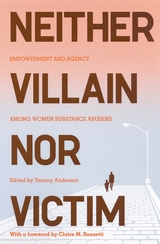 Neither Villain nor Victim: Empowerment and Agency among Women Substance Abusers
Anderson, Tammy
Rutgers University Press, 2008 Female drug addicts are often stereotyped either as promiscuous, lazy, and selfish, or as weak, scared, and trapped into addiction. These depictions typify the "pathology and powerlessness" narrative that has historically characterized popular and academic conversations about female substance abusers. Neither Villain Nor Victim attempts to correct these polarizing perspectives by presenting a critical feminist analysis of the drug world. By shifting the discussion to one centered on women's agency and empowerment, this book reveals the complex experiences and social relationships of women addicts.
Essays explore a range of topics, including the many ways that women negotiate the illicit drug world, how former drug addicts manage the more intimate aspects of their lives as they try to achieve abstinence, how women tend to use intervention resources more positively than their male counterparts, and how society can improve its response to female substance abusers by moving away from social controls (such as the criminalization of prostitution) and rehabilitative programs that have been shown to fail women in the long term.
Advancing important new perspectives about the position of women in the drug world, this book is essential reading in courses on women and crime, feminist theory, and criminal justice.
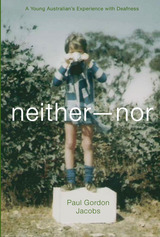 Neither–Nor: A Young Australian's Experience with Deafness
Paul Jacobs
Gallaudet University Press, 2007 The Fifth Volume in the Deaf Lives Series
Born in Melbourne, Australia, in 1974, Paul Jacobs lost his mother when he was three months old. When he was five, he lost most of his hearing. These two defining events formed the core of his being. He spent the first two decades of his life “coming to terms with being neither Deaf nor hearing — a neither/nor, an in-between — and a person with a social identity that had yet to be invented.” His memoir, Neither—Nor: A Young Australian’s Experience with Deafness, recounts this journey.
Jacobs excelled in sports and the classroom, but he never lost awareness of how he was seen as different, often in cruel or patronizing ways. His father, a child psychologist, headed a long list of supportive people in his life, including his Uncle Brian, his itinerant teacher of the deaf Mrs. Carey, a gifted art teacher Mrs. Klein, who demanded and received from him first-rate work, a notetaker Rita, and Bella, his first girlfriend. Jacobs eventually attended university, where he graduated with honors. He also entered the Deaf world when he starred on the Deaf Australian World Cup cricket team. However, he never learned sign language, and frequently noted the lack of an adult role model for “neither—nors” such as himself.
Still emotionally adrift in 1998, Jacobs toured Europe, then volunteered to tutor deaf residents at Court Grange College in Devon, England. There, he discovered a darker reality for some deaf individuals — hearing loss complicated by schizophrenia, Bonnevie-Ullrich Syndrome, and other conditions. After returning to Australia, Jacobs recognized what he had gleaned from his long journey: “Power comes from within, not without. Sure, deafness makes one prone to be stigmatized. Yet having a disability can act as a stimulus for greater personal growth, richer experiences, and more genuine relationships.”
Nell's Story: A Woman from Eagle River
Nell Peters, with Robert Peters
University of Wisconsin Press, 1995 With its desperate acts and dire consequences, Nell Peters's tale of a woman's life in northern Wisconsin is a remarkable story, full of the sense and sound and flavor of a time and place rarely visited in books. Nell's tomboy childhood, her businesslike initiation into sex on the eve of her departure for the WACs in 1951, her resulting pregnancy and return home to a life sharply at odds with small-town conventions, her struggle to keep her twin sons, and her disastrous sexual liaisons with men and women alike are recounted in this funny, gritty, and wildly candid book.
 Nels Anderson’s World War I Diary
Allan Kent Powell
University of Utah Press, 2013 Nels Anderson’s World War I Diary provides a rare glimpse into the wartime experiences of one of the most well-respected sociologists of the twentieth century, the renowned author of The Hobo (1920) and Desert Saints: The Mormon Frontier in Utah (1942). Anderson, a keen observer of people, places, and events his entire life, joined the U.S. Army in 1918 at the age of 29 and was sent to Europe to fight as part of the Allied Expeditionary Force (AEF) under General Pershing. Because keeping a journal was strongly discouraged among American forces during WWI, particularly among the rank-and-file soldiers, Anderson’s diary stands as a rare gem. Furthermore, it is the only known account of war service during WWI by a member of the LDS Church. Anderson joined the Mormon faith after accepting the hospitality of an extended Mormon ranching family during his travels throughout the American West as a working hobo. Anderson’s accounts of the St. Mihiel and Meuse-Argonne offensives are particularly remarkable given the challenges of keeping a detailed journal amidst the chaos and suffering of the war’s Western Front. His insights into the depravity and callousness of war are buttressed with intimate human portraits of those to whom he was closest. The war years provided many formative experiences that would prove to have a lasting influence on Anderson’s views regarding the working poor, authority, and human values; this would come to bear heavily on his later work as a pioneering sociologist at the University of Chicago, where he helped establish participant observation as a research method. The many introspective entries contained in this volume will be of reat interest to military historians and history buffs as well as to those in the social sciences looking to find the intellectual origins of Anderson’s later work in the burgeoning field of sociology.
Winner of the Army Historical Foundation Distinguished Writing Award for Journals, Memoirs, and Letters.
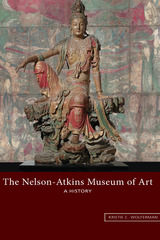 The Nelson-Atkins Museum of Art: A History
Kristie C. Wolferman
University of Missouri Press, 2020 When Kansas City’s Nelson-Atkins Museum of Art opened to the public in 1933, it was viewed as a miracle, an oasis of culture in a Midwestern town whose image was still largely one of cowboys and steaks. In an engaging style, Kristie Wolferman tells the history of the Nelson-Atkins from its founding to the present day, a fascinating combination of people, events, and circumstances that culminated in an art museum that now holds its own among the finest in the world.
Wolferman begins by relaying how the trustees of the estates of the reclusive widow Mary Atkins and the family of Kansas City Star newspaper editor William Rockhill Nelson joined forces to establish a museum from scratch, then goes on to consider all of the highly talented people who directed and staffed the Nelson-Atkins along the way, their efforts resulting in many bold innovations, among them new collections, grounds, and educational programs and offerings.
With 100 color and black and white photographs, this book will be treasured by all who love and admire this remarkable institution, one that attracts half a million visitors—from across the city, state, nation, and world—each year.
This is a co-publication of the University of Missouri Press and the Nelson-Atkins Museum of Art.
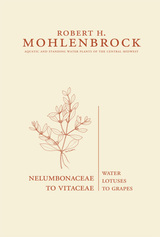 Nelumbonaceae to Vitaceae: Water Lotuses to Grapes
Robert H. Mohlenbrock
Southern Illinois University Press, 2010 In this fourth and final installment in the Aquatic and Standing Water Plants of the Central Midwest series, veteran botanist Robert H. Mohlenbrock identifies aquatic and wetland plants in eight central Midwestern states, which include Iowa, Illinois, Indiana, Ohio, Kansas, Kentucky (excluding the Cumberland Mountain region), Missouri, and Nebraska. Nelumbonaceae to Vitaceae: Water Lotuses to Grapes contains 346 highly informative and technically accurate illustrations as well as ecological information, nomenclature, and keys for plants in the aforementioned families, including white water lily, fireweed, smartweed, mild water pepper, hawthorn, and wild strawberry. Mohlenbrock identifies and describes each plant in concise and readable prose and indicates its usual habitats and the states in which it occurs. As with previous volumes, Mohlenbrock organizes each species into three groups: truly aquatic plants, which spend their entire life with their vegetative parts either completely submerged or floating on the water’s surface; emergents, which are usually rooted under water with their vegetative parts standing above the water’s surface; and wetland plants, which live most or all of their lives out of water. With Nelumbonaceae to Vitaceae, Mohlenbrock completes the four-volume series organizing and identifying wetland plants in the central Midwest. The botanical series will aid many, from teachers and students to state and federal employees, focused on conservation efforts and mitigation issues.
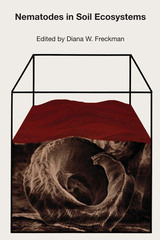 Nematodes in Soil Ecosystems
Edited by Diana W. Freckman
University of Texas Press, 1982 Many species of the phylum Nematoda, the nonsegmented worms, play an important role as animal or plant parasites; most species are active contributors to the decomposition cycle in soil ecosystems, but the details of that contribution are just beginning to be understood. Agricultural nematologists, vitally involved in the study of the methodology, taxonomy, and biology of the species due to the direct relationship between crop yield and the size of plant-parasitic nematode populations, have provided much information about the nematodes. More recently, ecologists have contributed additional data on the structure and function of the total soil community, including energy flow and nutrient cycling, and have examined the critical and multifaceted role of soil nematodes in such communities. Nematodes in Soil Ecosystems provides a valuable synthesis of significant research in this area and may stimulate further important communication between the agricultural and ecological branches of nematode research.
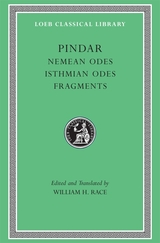 Nemean Odes. Isthmian Odes. Fragments
Pindar
Harvard University Press, 1997 The preeminent lyric poet of ancient Greece.
Of the Greek lyric poets, Pindar (ca. 518–438 BC) was “by far the greatest for the magnificence of his inspiration” in Quintilian’s view; Horace judged him “sure to win Apollo’s laurels.” The esteem of the ancients may help explain why a good portion of his work was carefully preserved. Most of the Greek lyric poets come down to us only in bits and pieces, but nearly a quarter of Pindar’s poems survive complete. William H. Race now brings us, in two volumes, a new edition and translation of the four books of victory odes, along with surviving fragments of Pindar’s other poems.
Like Simonides and Bacchylides, Pindar wrote elaborate odes in honor of prize-winning athletes for public performance by singers, dancers, and musicians. His forty-five victory odes celebrate triumphs in athletic contests at the four great Panhellenic festivals: the Olympic, Pythian (at Delphi), Nemean, and Isthmian games. In these complex poems, Pindar commemorates the achievement of athletes and powerful rulers against the backdrop of divine favor, human failure, heroic legend, and the moral ideals of aristocratic Greek society. Readers have long savored them for their rich poetic language and imagery, moral maxims, and vivid portrayals of sacred myths.
Race provides brief introductions to each ode and full explanatory footnotes, offering the reader invaluable guidance to these often difficult poems. His Loeb Pindar also contains a helpfully annotated edition and translation of significant fragments, including hymns, paeans, dithyrambs, maiden songs, and dirges.
 Nemerov's Door: Essays
Robert Wrigley
Tupelo Press, 2021 Nemerov’s Door is a testament to what matters most in Robert Wrigley’s life: love, nature, wild country, music, and poetry. In his youth, Robert Wrigley had little interest in poetry; you even could call it an active disinterest. Then, at the age of twenty-one, after being drafted into the army during the Vietnam War, after receiving an honorable discharge on the grounds of conscientious objection, and feeling otherwise adrift, he took a class in poetry writing, and that class altered the trajectory of his life. Nemerov’s Door is the story of a distinguished and widely celebrated poet’s development, via episodes from his life, and via his examinations of some of the poets whose work has helped to shape his own. Essays on James Dickey, Richard Hugo, Etheridge Knight, Howard Nemerov, Sylvia Plath, and Edwin Arlington Robinson are interwoven with essays about the sources of poetry: arrowheads; wild rivers; and the lyrics of a song from My Fair Lady, among other things. In the essay about Richard Hugo, Wrigley engages with a single poem by his great mentor, whose influence on Wrigley and many other poets of his generation has been enormous. “The Music of Sense” extrapolates from Frost’s notion of the “sound of sense,” and fuses it with Hugo’s notion that the poet, forced to choose between music and meaning, must always choose music. As though to offer his own proof of that notion, one of Wrigley’s other essays here is a poem. In all, the book, described by Joe Wilkins of the High Desert Journal, “is as generous and wise a book as I’ve read in a long, long time.”
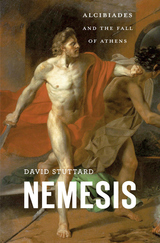 Nemesis: Alcibiades and the Fall of Athens
David Stuttard
Harvard University Press, 2018 Alcibiades was one of the most dazzling figures of the Golden Age of Athens. A ward of Pericles and a friend of Socrates, he was spectacularly rich, bewitchingly handsome and charismatic, a skilled general, and a ruthless politician. He was also a serial traitor, infamous for his dizzying changes of loyalty in the Peloponnesian War. Nemesis tells the story of this extraordinary life and the turbulent world that Alcibiades set out to conquer.
David Stuttard recreates ancient Athens at the height of its glory as he follows Alcibiades from childhood to political power. Outraged by Alcibiades’ celebrity lifestyle, his enemies sought every chance to undermine him. Eventually, facing a capital charge of impiety, Alcibiades escaped to the enemy, Sparta. There he traded military intelligence for safety until, suspected of seducing a Spartan queen, he was forced to flee again—this time to Greece’s long-term foes, the Persians. Miraculously, though, he engineered a recall to Athens as Supreme Commander, but—suffering a reversal—he took flight to Thrace, where he lived as a warlord. At last in Anatolia, tracked by his enemies, he died naked and alone in a hail of arrows.
As he follows Alcibiades’ journeys crisscrossing the Mediterranean from mainland Greece to Syracuse, Sardis, and Byzantium, Stuttard weaves together the threads of Alcibiades’ adventures against a backdrop of cultural splendor and international chaos. Navigating often contradictory evidence, Nemesis provides a coherent and spellbinding account of a life that has gripped historians, storytellers, and artists for more than two thousand years.
Neo-Aristotelianism and the Medieval Renaissance: On Aquinas, Ockham, and Eckhart
Reiner Schürmann
Diaphanes, 2020 In this lecture course, Reiner Schürmann develops the idea that, in between the spiritual Carolingian Renaissance and the secular humanist Renaissance, there was a distinctive medieval Renaissance connected with the rediscovery of Aristotle. Focusing on Thomas Aquinas’s ontology and epistemology, William of Ockham’s conceptualism, and Meister Eckhart’s speculative mysticism, Schürmann shows how thought began to break free from religion and the hierarchies of the feudal, neo-Platonic order and devote its attention to otherness and singularity. A crucial supplement to Schürmann’s magnum opus Broken Hegemonies, Neo-Aristotelianism and the Medieval Renaissance will be essential reading for anyone interested in the rise and fall of Western principles, and thus in how to think and act today.
Neo-Babylonian Trial Records
Shalom E. Holtz
SBL Press, 2014 New translations of fifty transliterated texts for research and classroom use
This collection of sixth-century B.C.E. Mesopotamian texts provides a close-up, often dramatic, view of ancient courtroom encounters shedding light on Neo-Babylonian legal culture and daily life. In addition to the legal texts, Holtz provides an introduction to Neo-Babylonian social history, archival records, and legal materials. This is an essential resource for scholars interested in the history of law.
Features
- Fifty new English translations
- Transliterations for use in advanced Akkadian courses
- Background essays perfect for courses dealing with ancient Near Eastern history and law
- Explanatory essays preceding each text and its translation
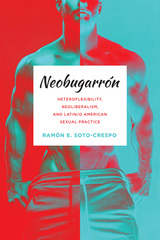 Neobugarrón: Heteroflexibility, Neoliberalism, and Latin/o American Sexual Practice
Ramón E. Soto-Crespo
Ohio State University Press, 2023 How should we understand the bugarrón, a man who has sex with other men while regarding himself as heterosexual? Reaching beyond queer and gay studies, Ramón E. Soto-Crespo’s research suggests that this paradoxical figure mutated into what he calls the “neobugarrón,” a neoliberal market-oriented actor who used the traditional sexual practice as an optimizing strategy for manipulating the forces of globalization during the 1990s. In Neobugarrón: Heteroflexibility, Neoliberalism, and Latin/o American Sexual Practice, Soto-Crespo chronicles the cultural modifications of bugarrón, a distinct male-male sexual practice in Latin/o America and the Caribbean, during the twentieth and twenty-first centuries. Working with and against Foucault and Kinsey to examine diverse works from anthropology, literature, cinema, and social media, he investigates a wide array of bugarrón sources, ranging from previously underexamined multimedia to ethnographies, fiction, films, and beyond. These works constitute a neobugarrón archive and attest to a sexual practice currently metamorphosing on the cusp of extinction. Soto-Crespo’s analysis challenges conventional understandings of “heteroflexible” sex between men and reveals a hitherto unnoticed transformation in neoliberal ecologies of bugarrón sexual practice.
 Neo-Burlesque: Striptease as Transformation
Lynn Sally
Rutgers University Press, 2022 The neo-burlesque movement seeks to restore a sense of glamour, theatricality, and humor to striptease. Neo-burlesque performers strut their stuff in front of audiences that appreciate their playful brand of pro-sex, often gender-bending, feminism.
Performance studies scholar and acclaimed burlesque artist Lynn Sally offers an inside look at the history, culture, and philosophy of New York’s neo-burlesque scene. Revealing how twenty-first century neo-burlesque is in constant dialogue with the classic burlesque of the nineteenth and twentieth centuries, she considers how today’s performers use camp to comment on preconceived notions of femininity. She also explores how the striptease performer directs the audience’s gaze, putting on layers of meaning while taking off layers of clothing.
Through detailed profiles of iconic neo-burlesque performers such as Dita Von Teese, Dirty Martini, Julie Atlas Muz, and World Famous *BOB*, this book makes the case for understanding neo-burlesque as a new sexual revolution. Yet it also examines the broader community of “Pro-Am” performers who use neo-burlesque as a liberating vehicle for self-expression. Raising important questions about what feminism looks like, Neo-Burlesque celebrates a revolutionary performing art and participatory culture whose acts have political reverberations, both onstage and off.
|
|





